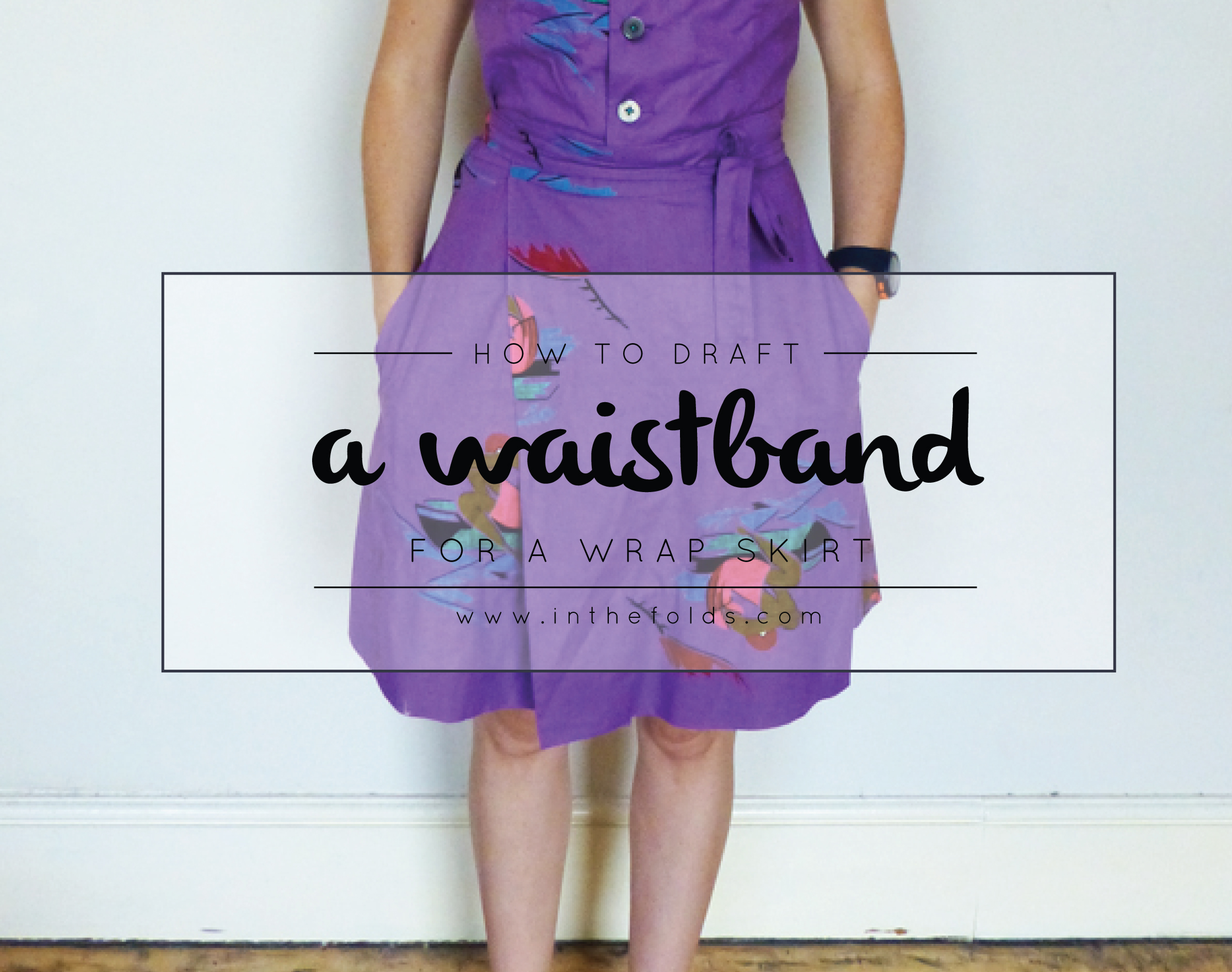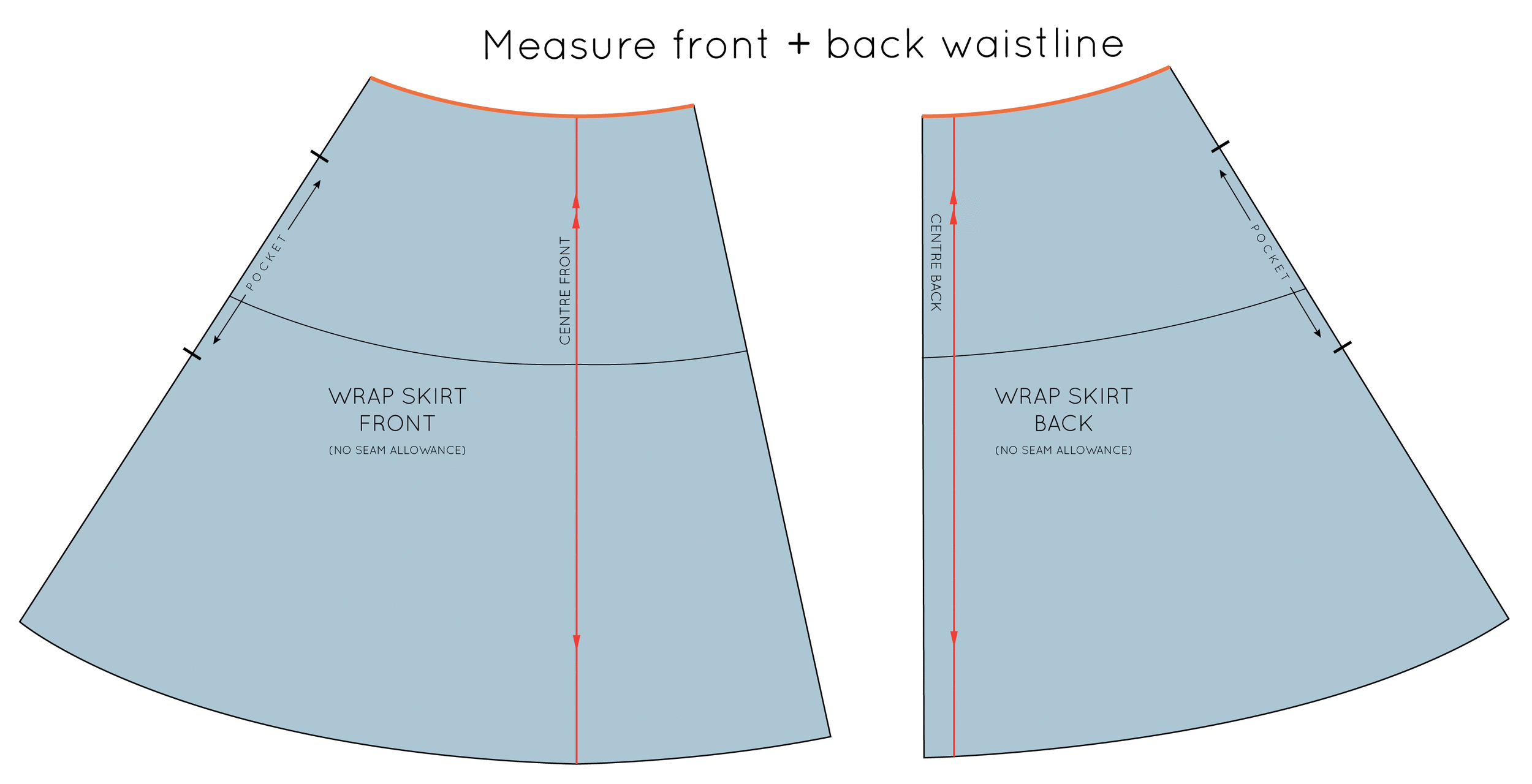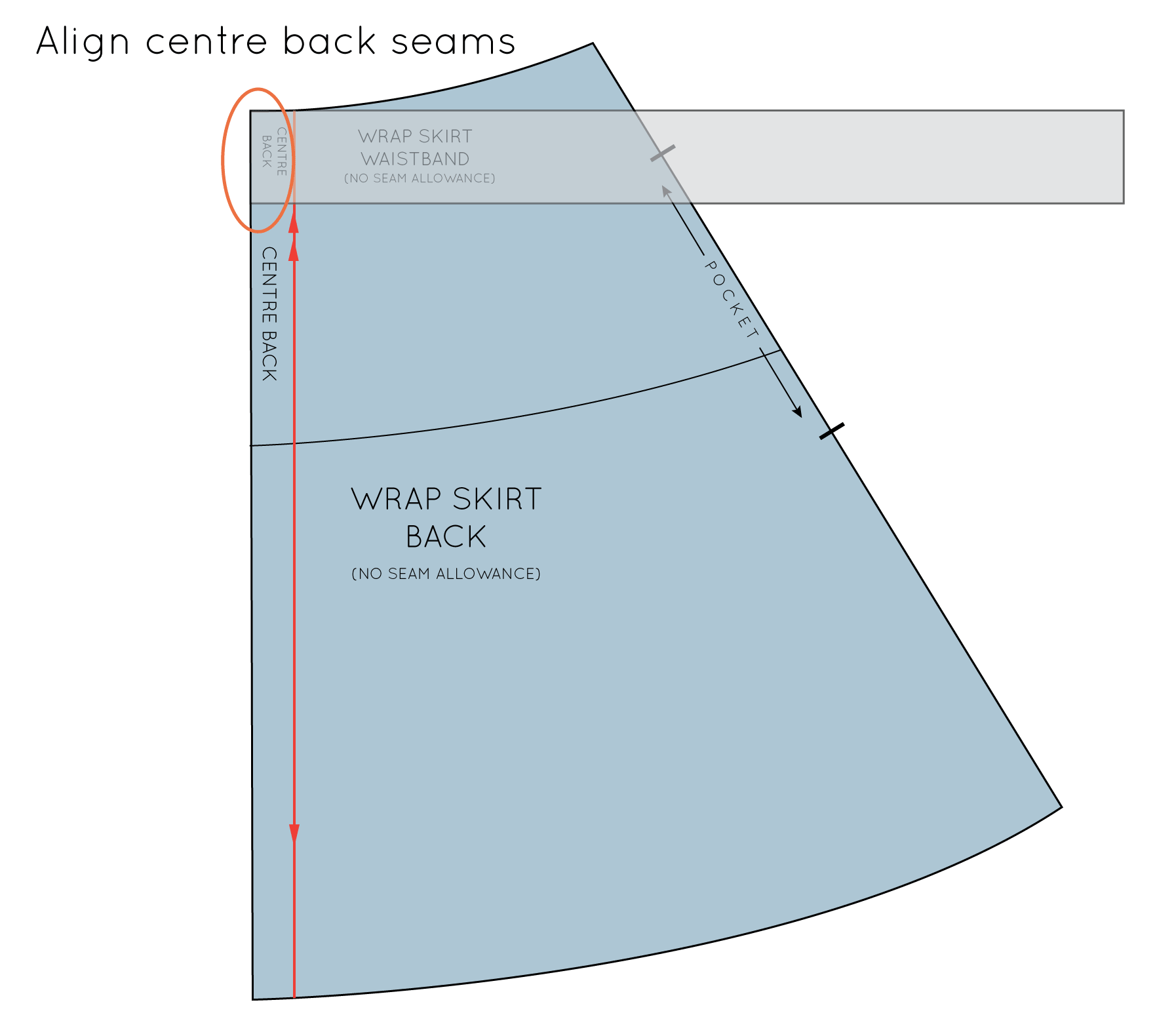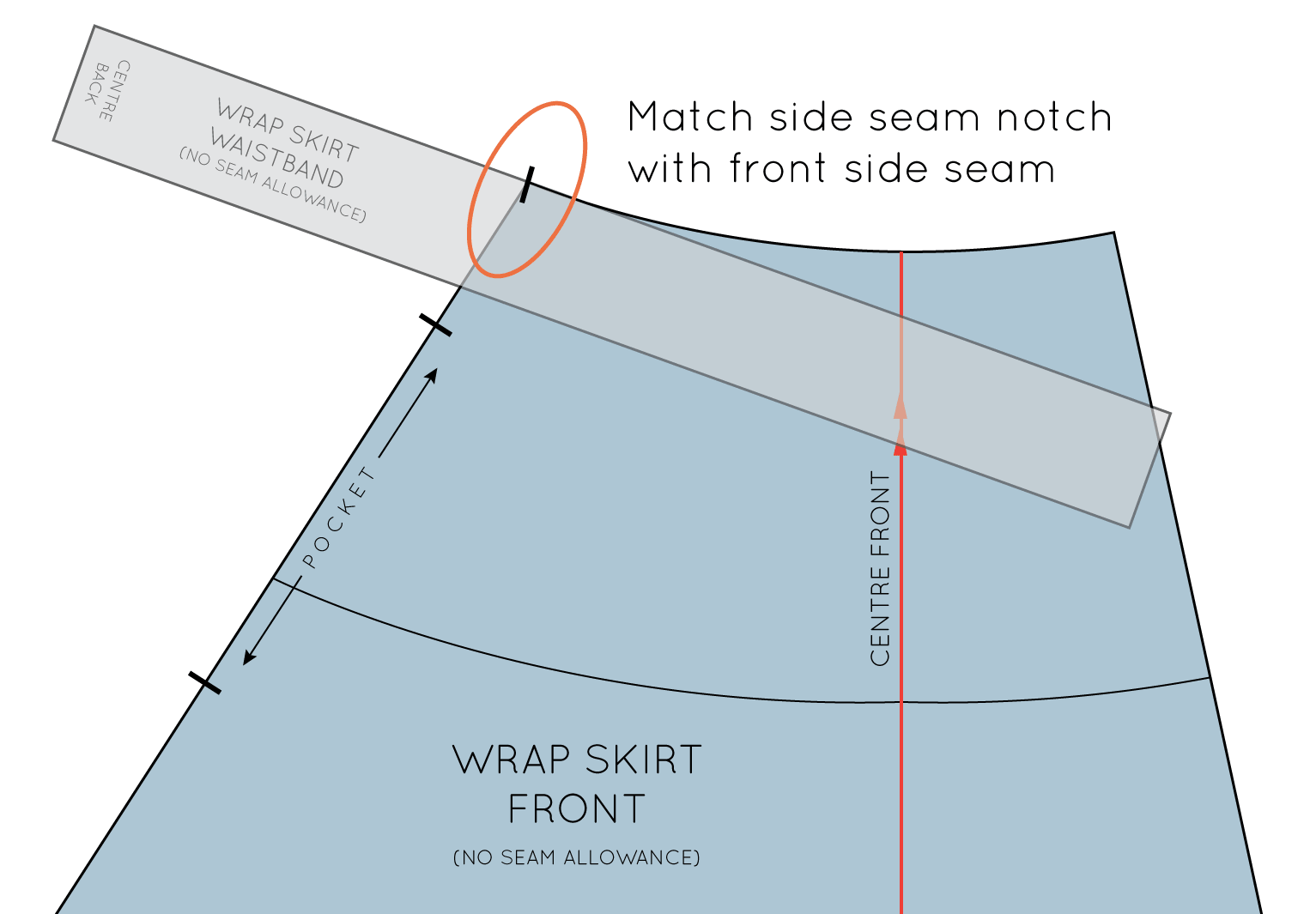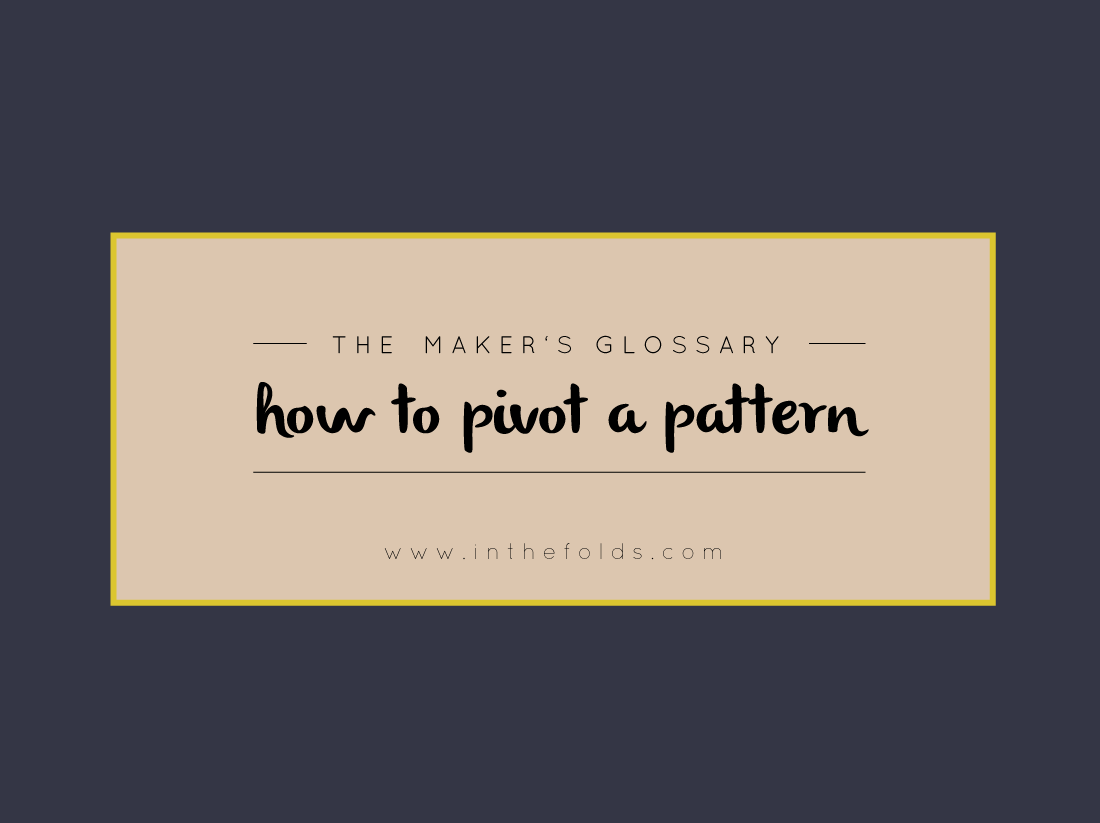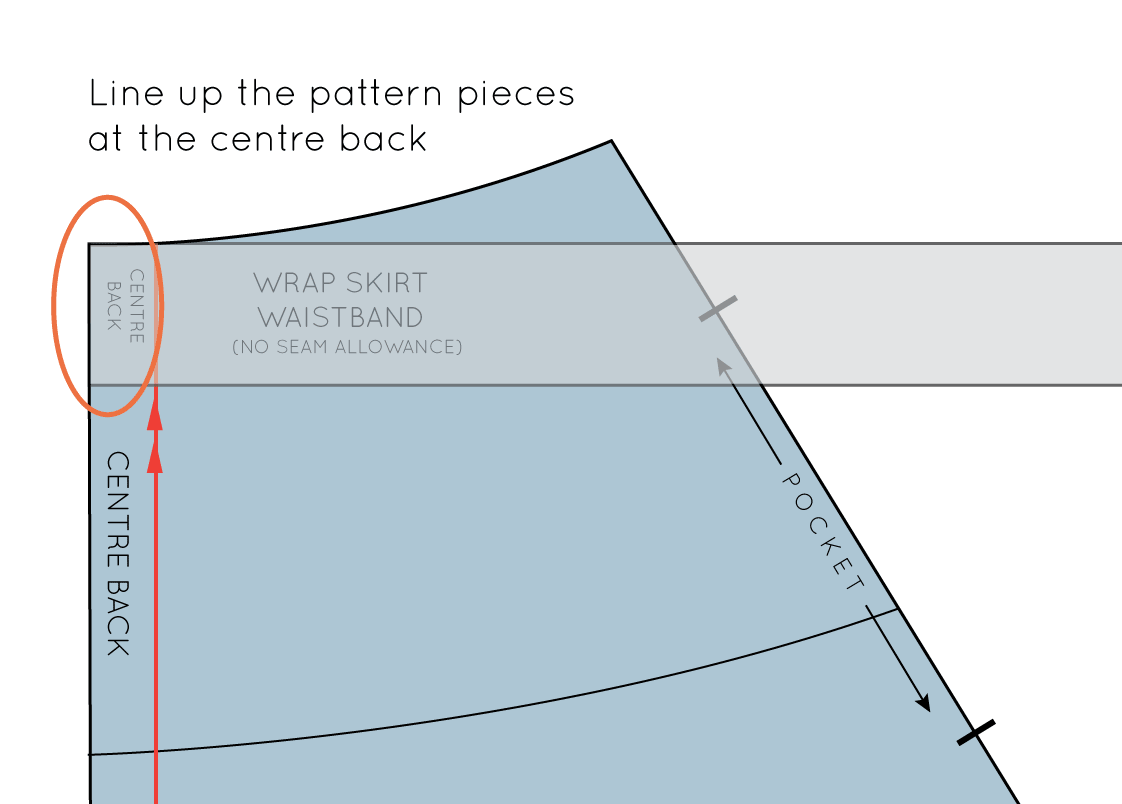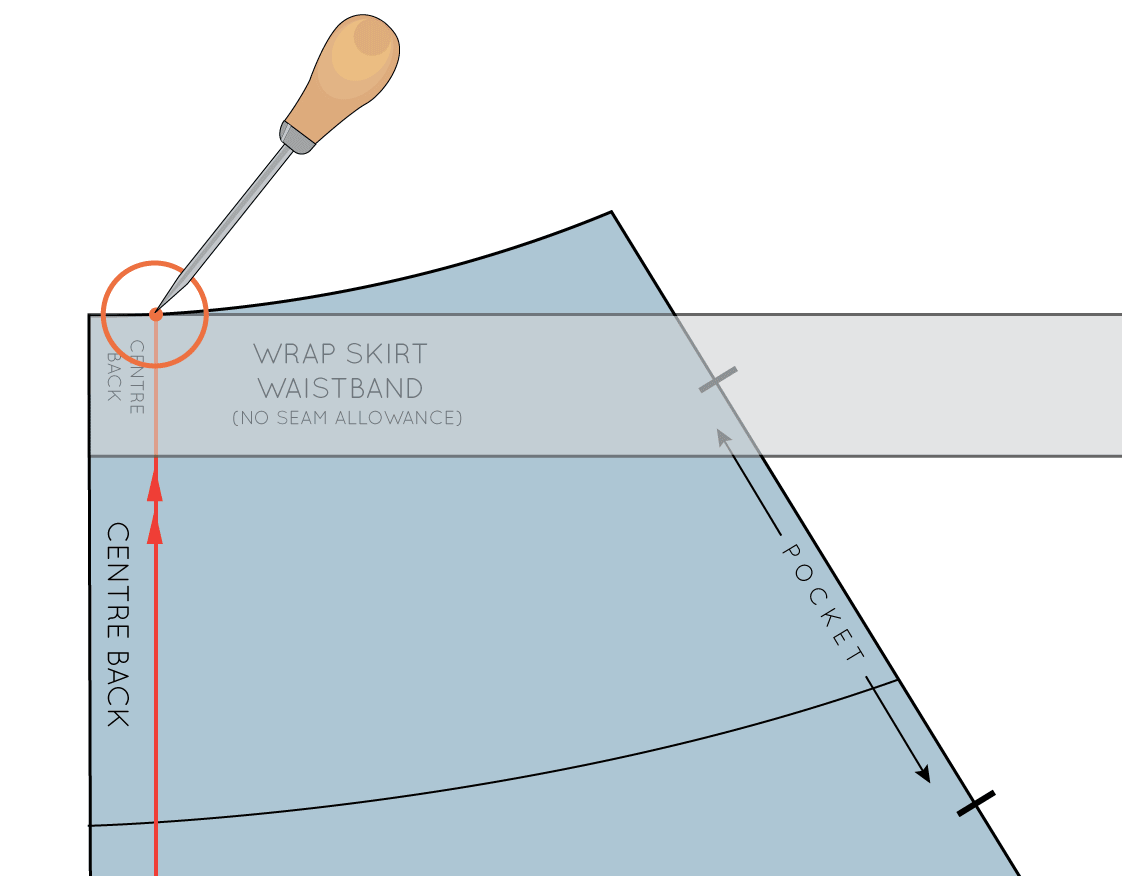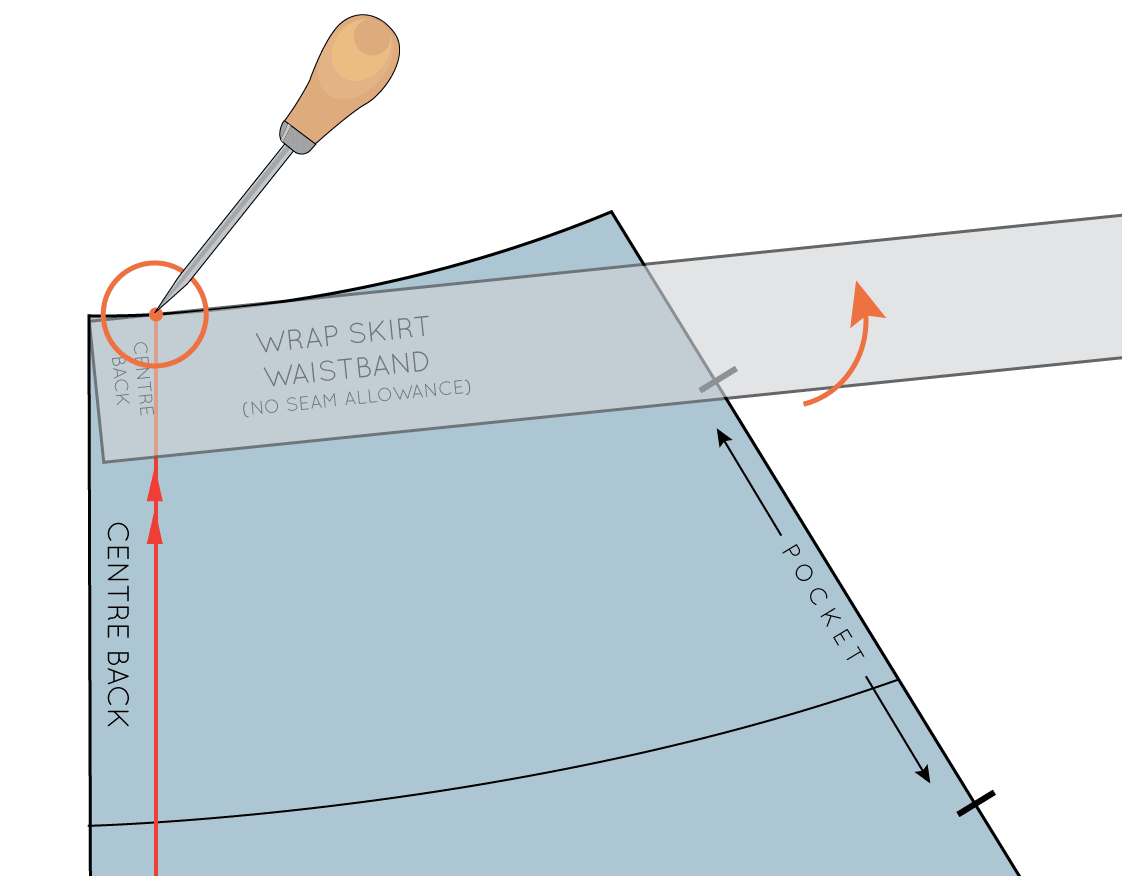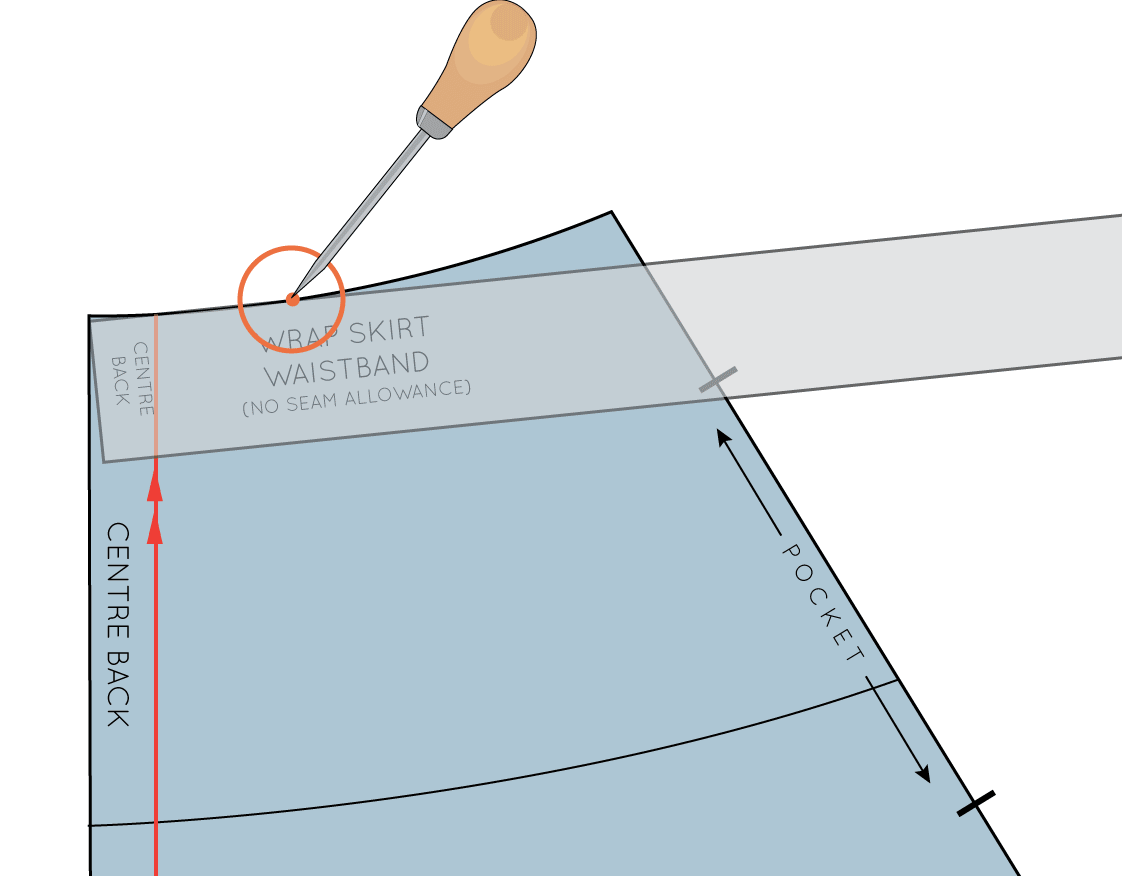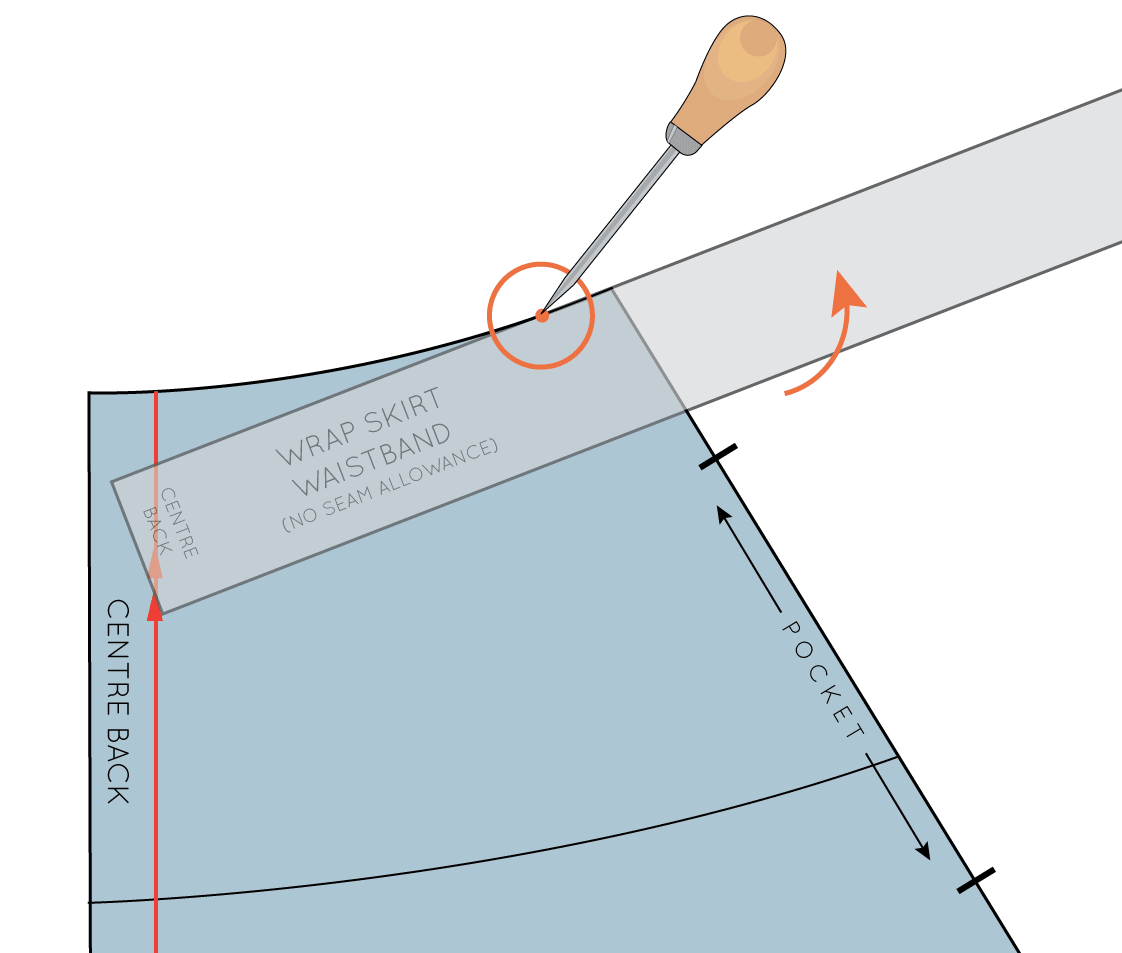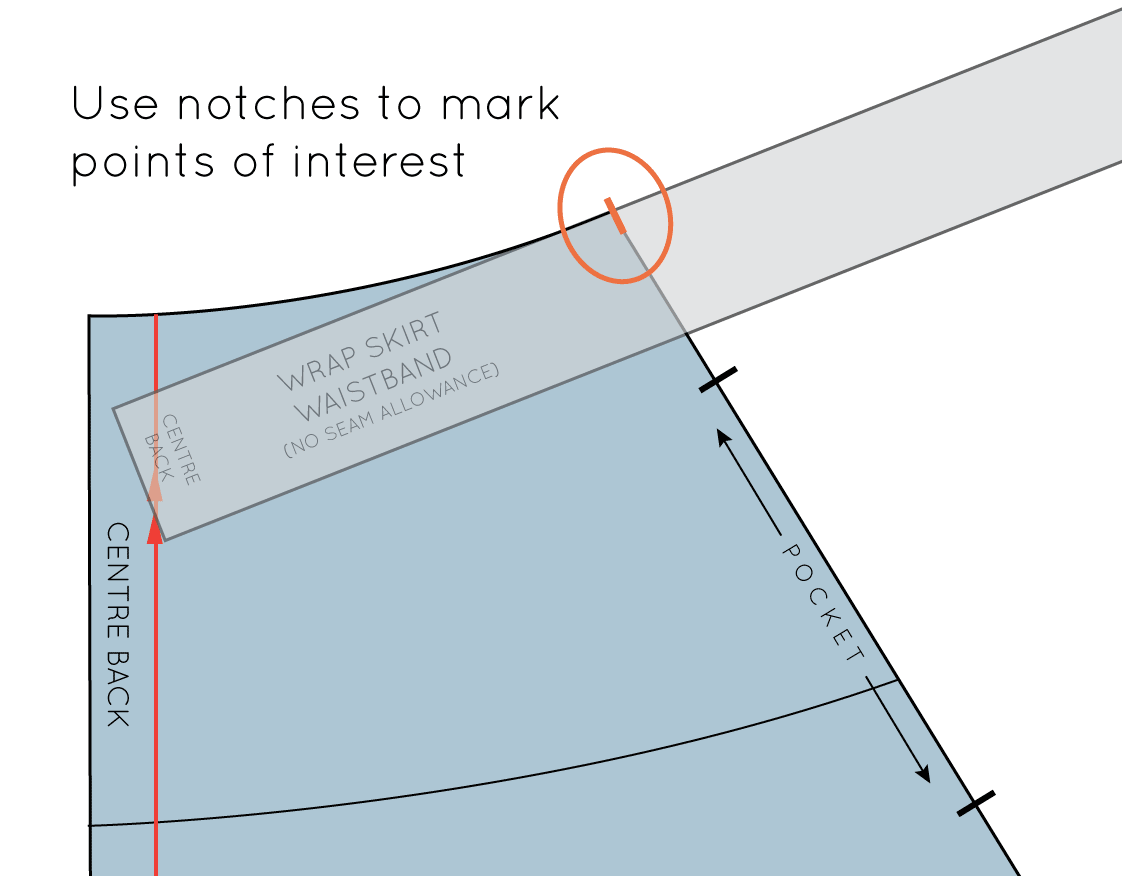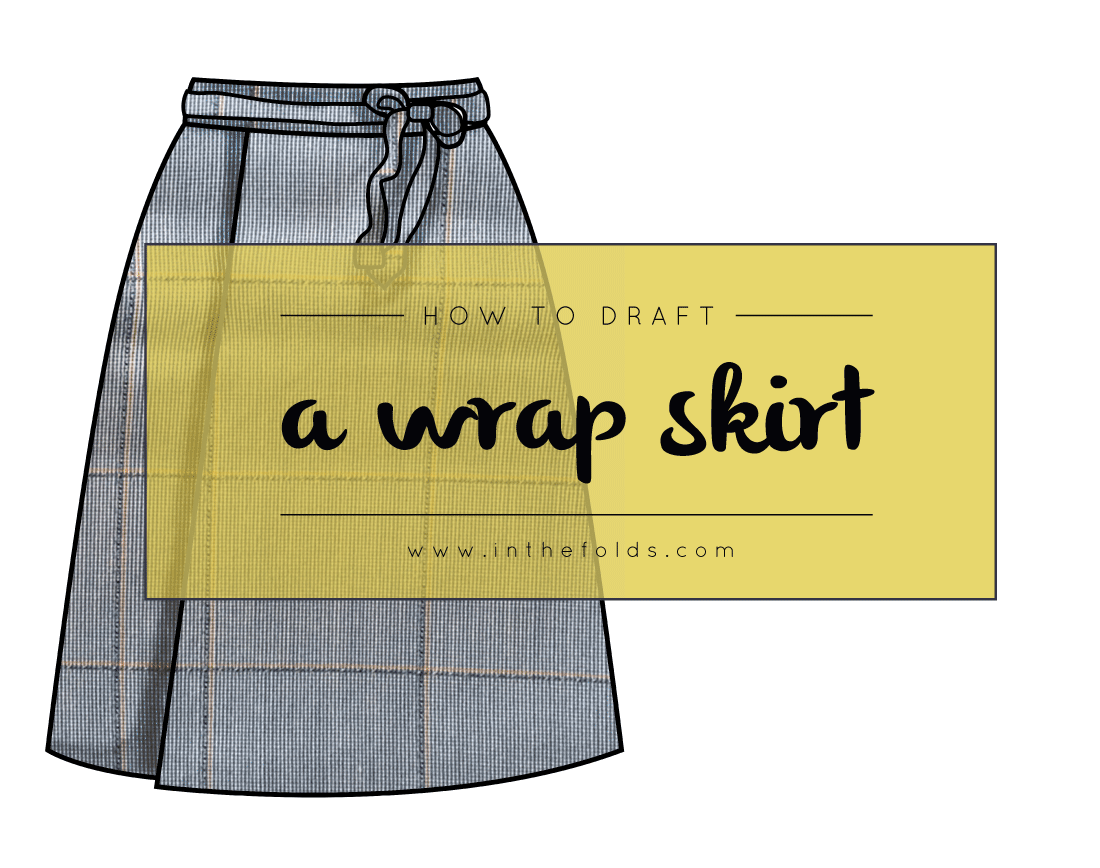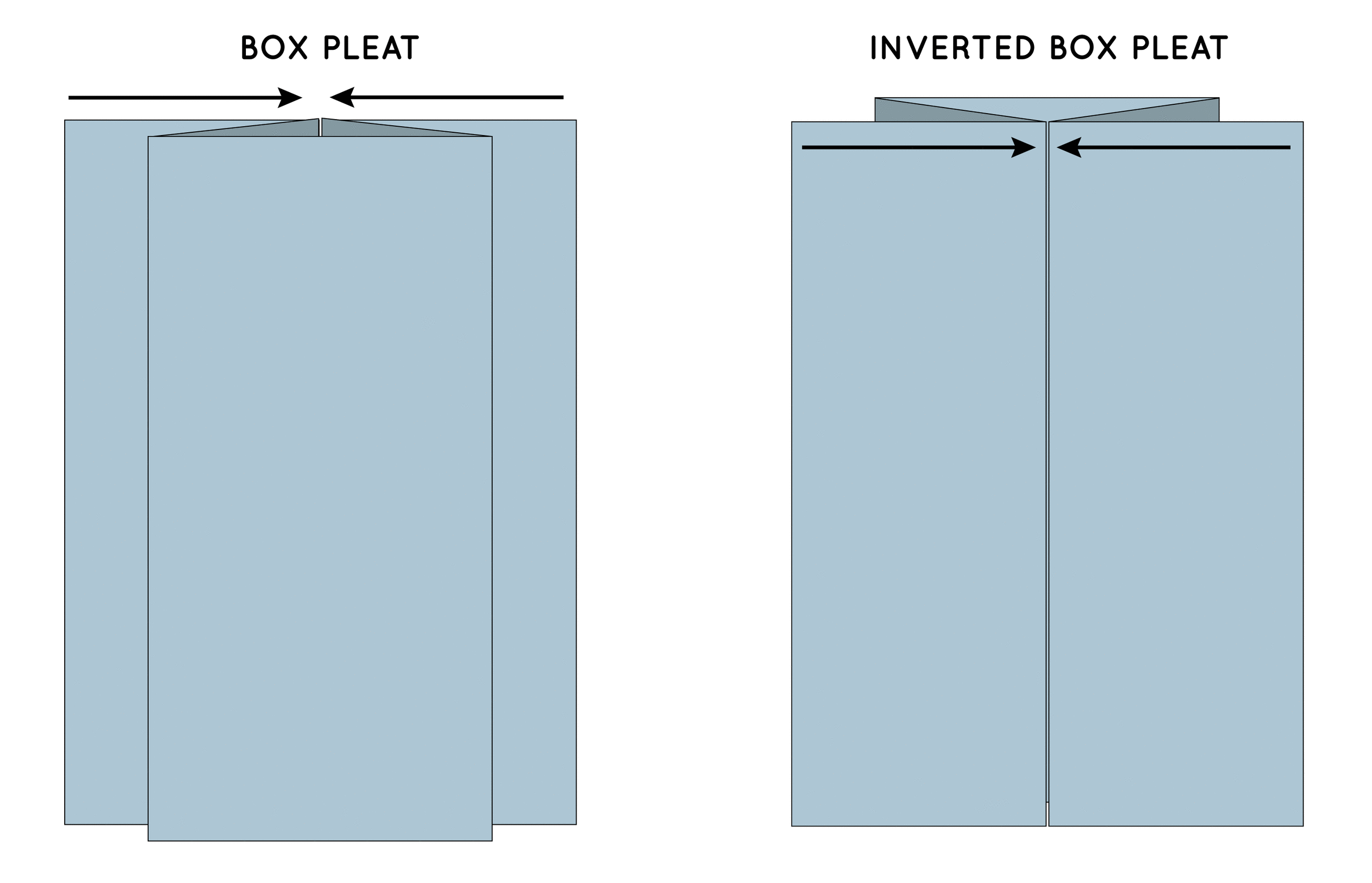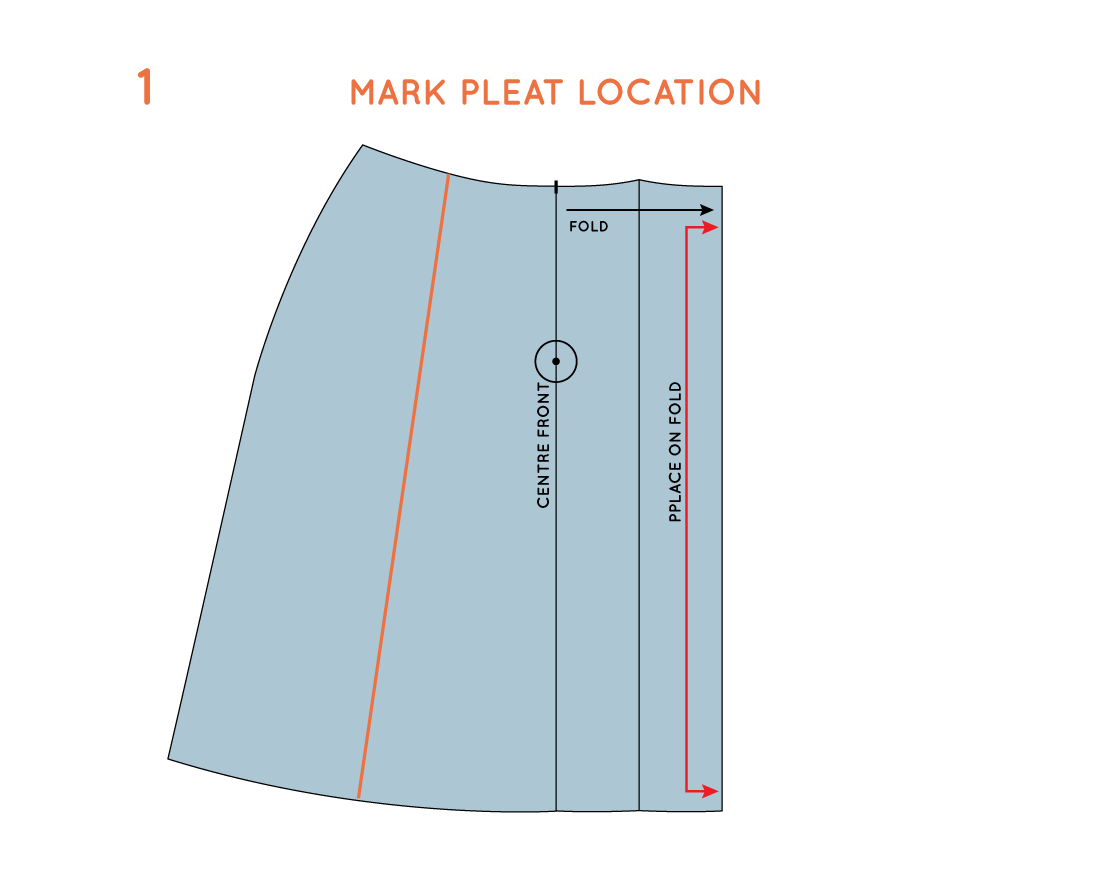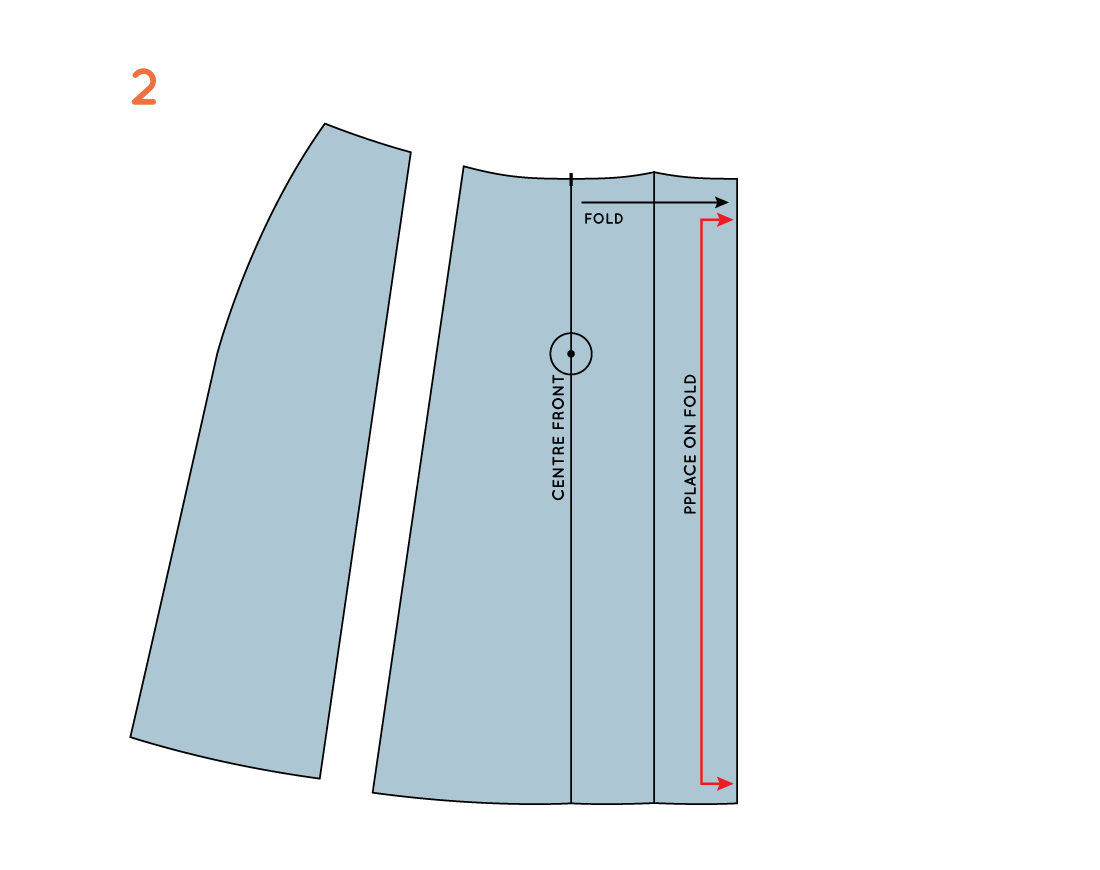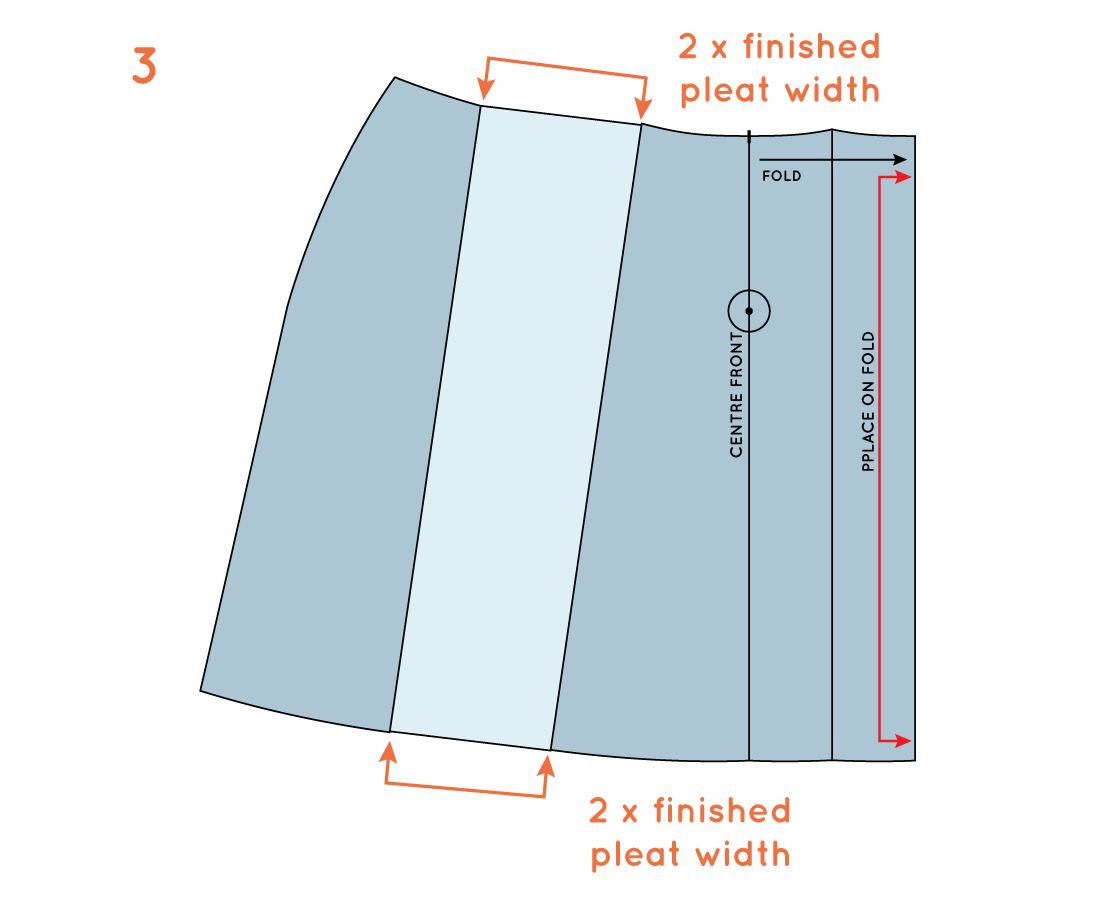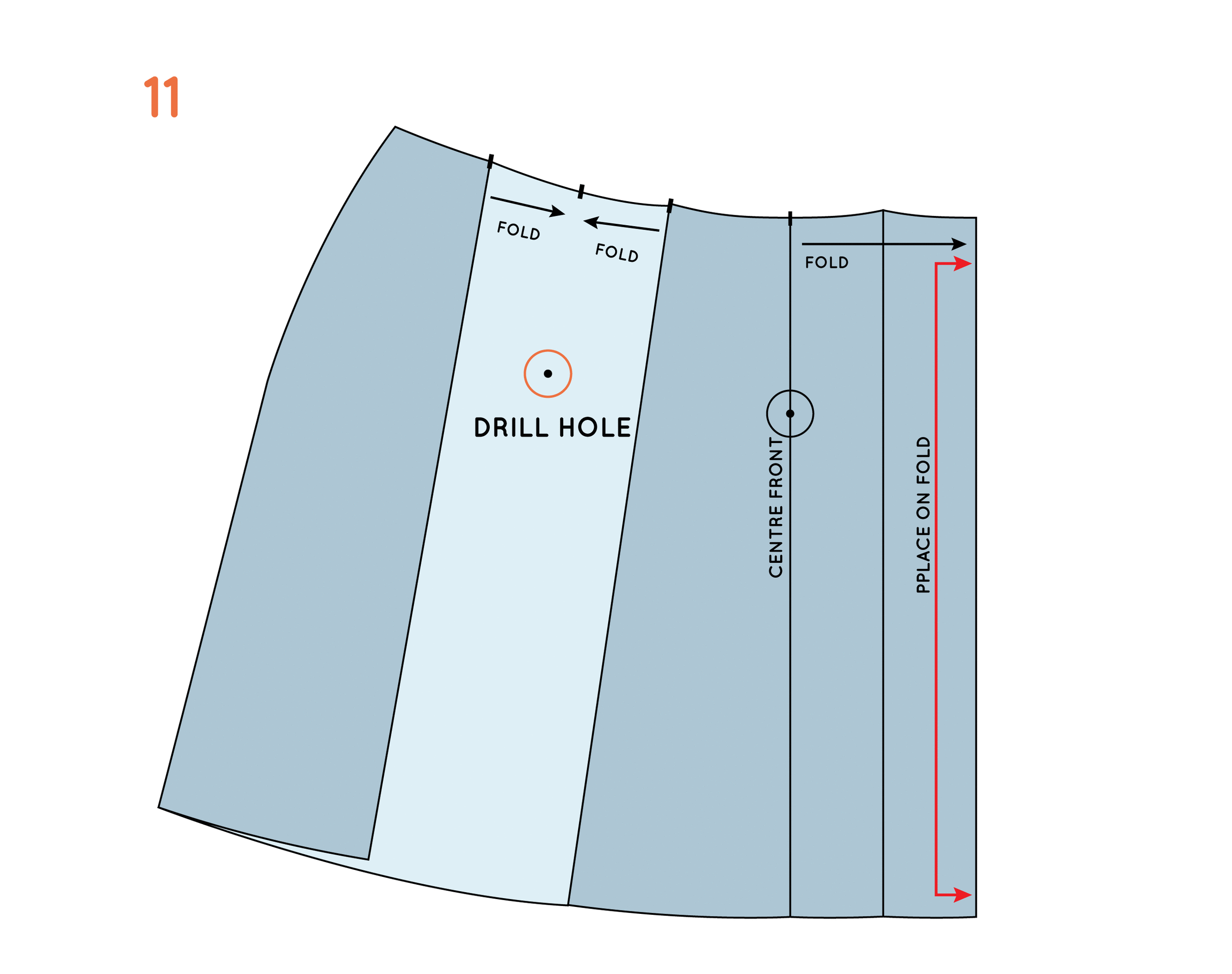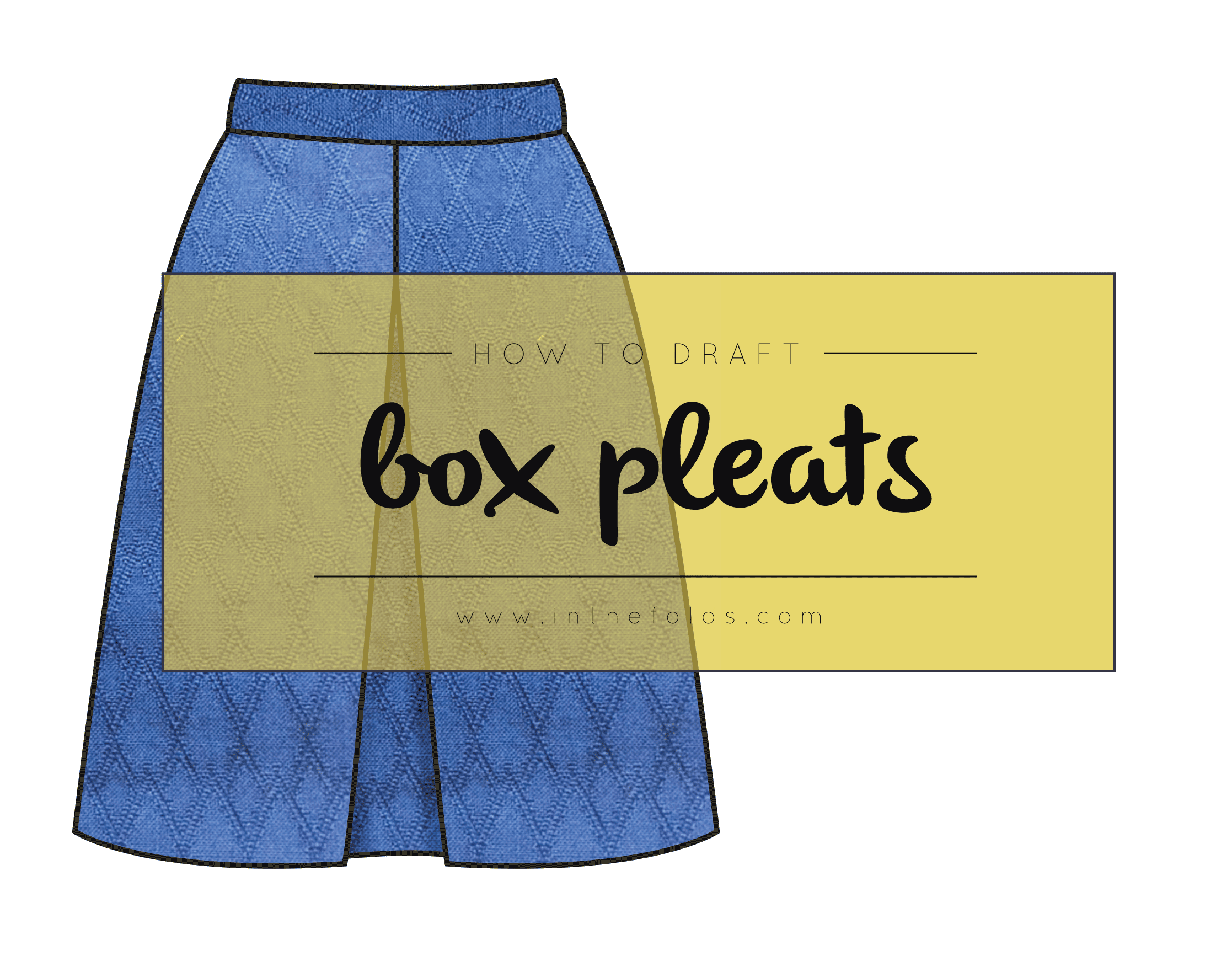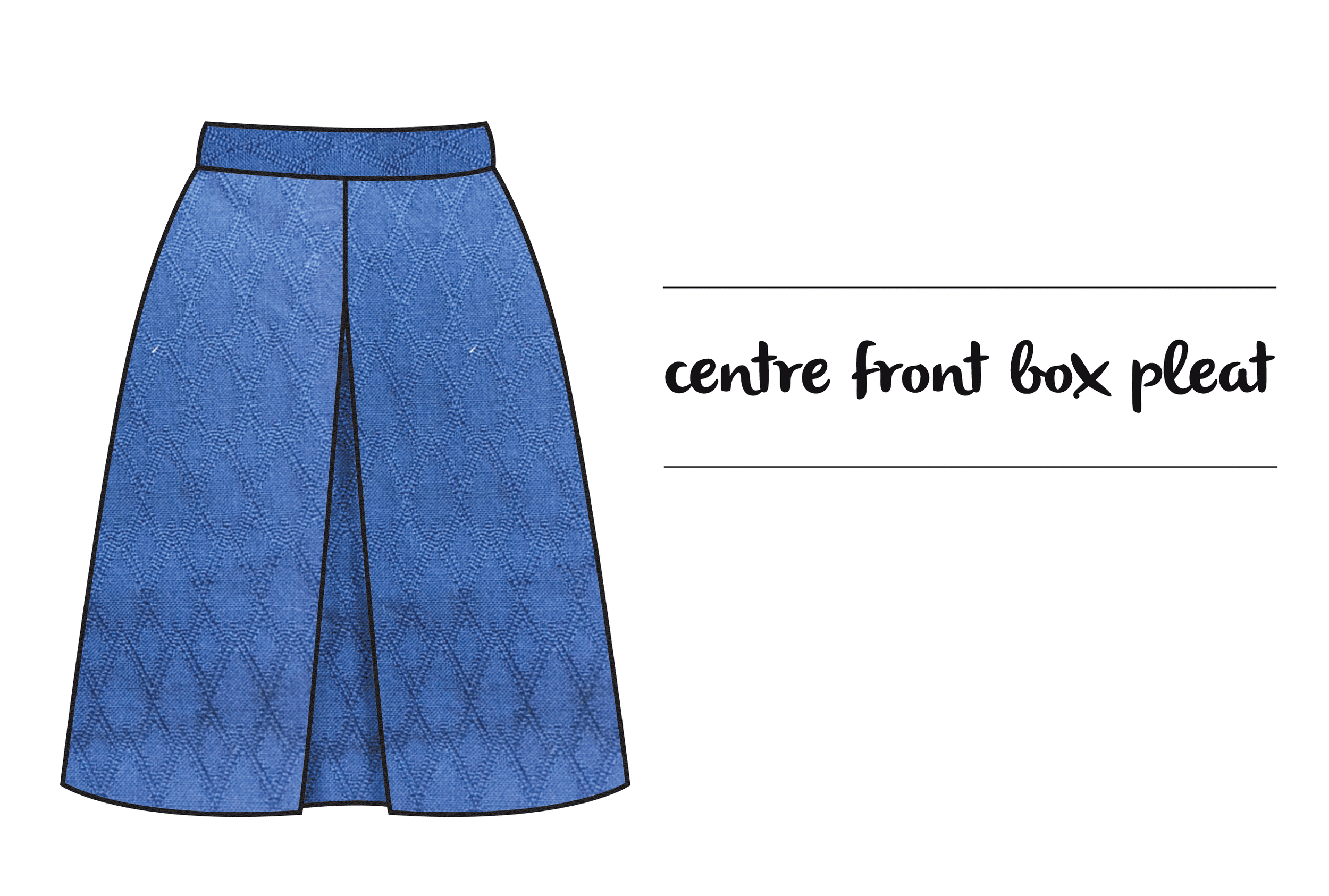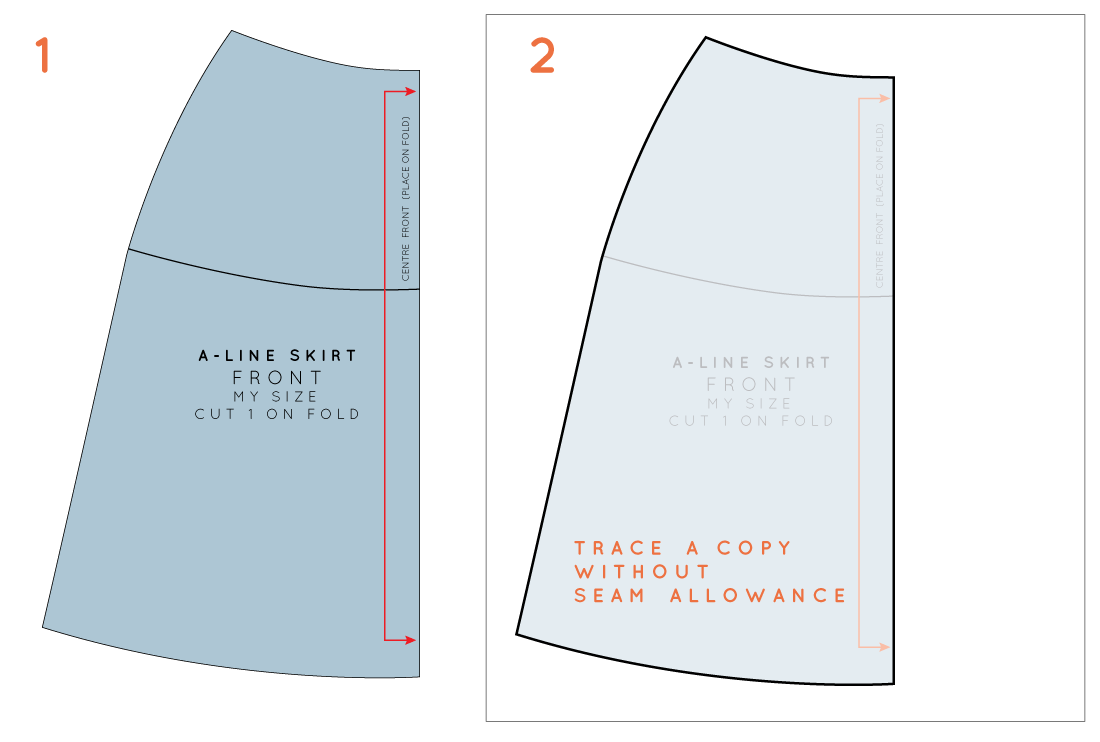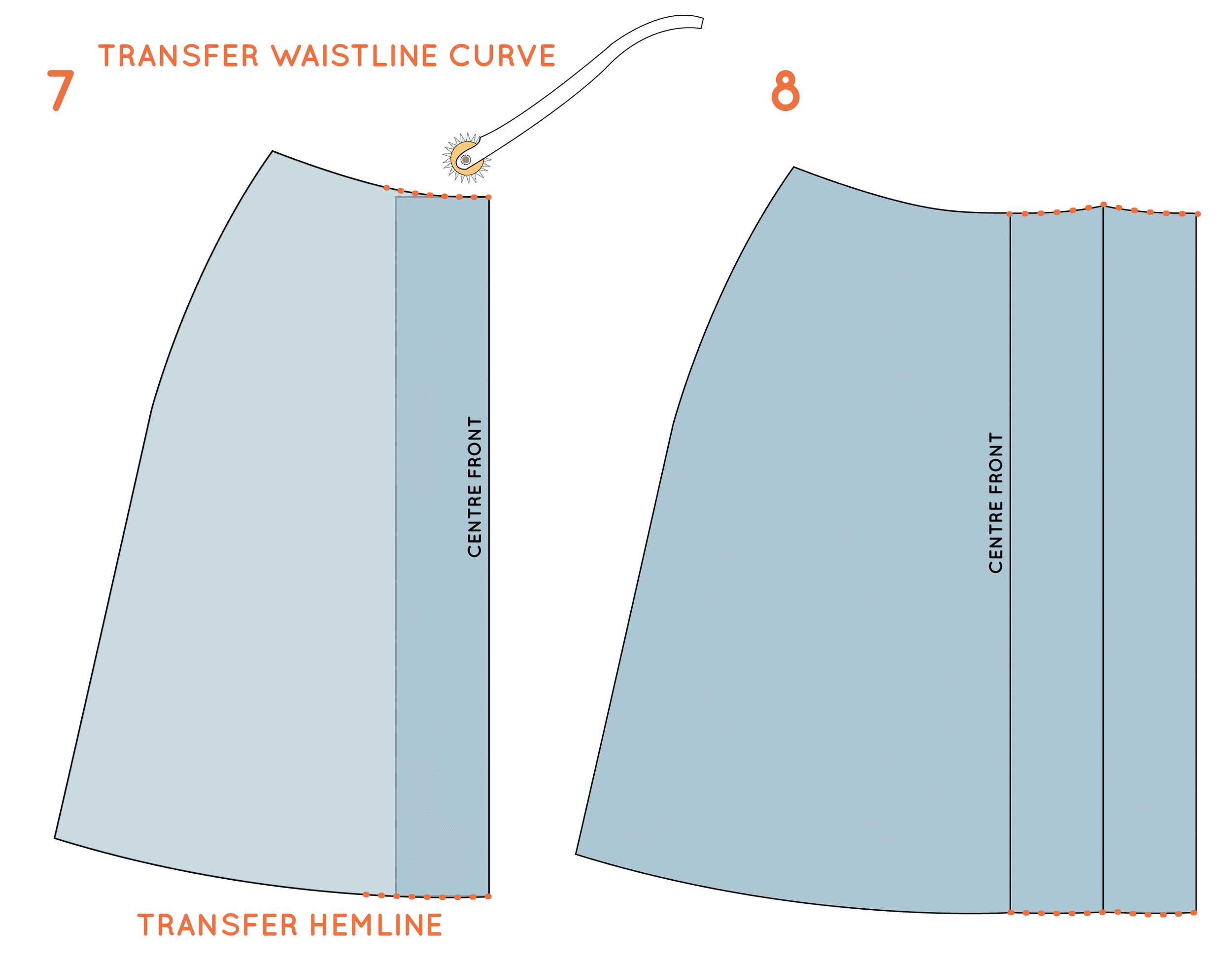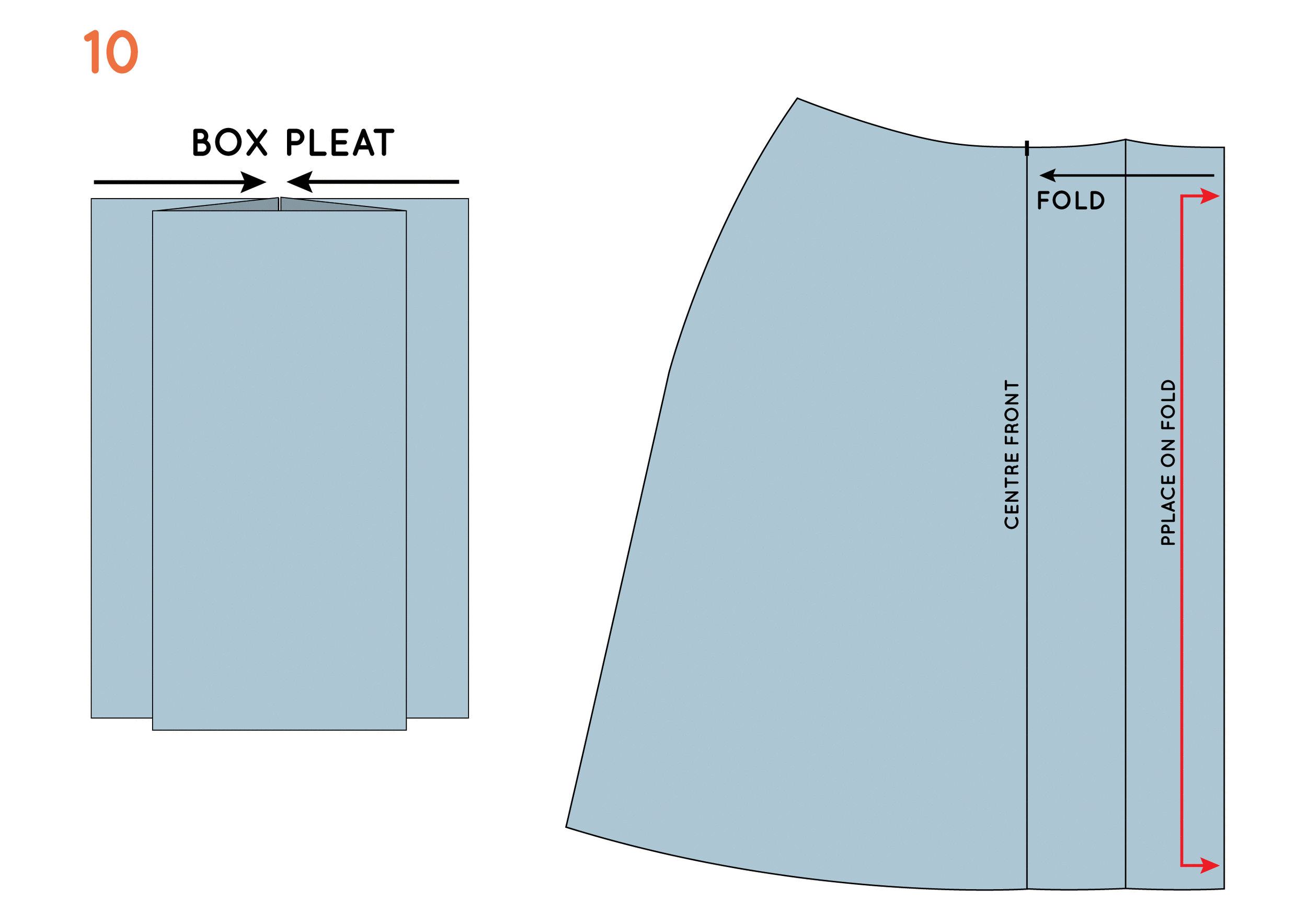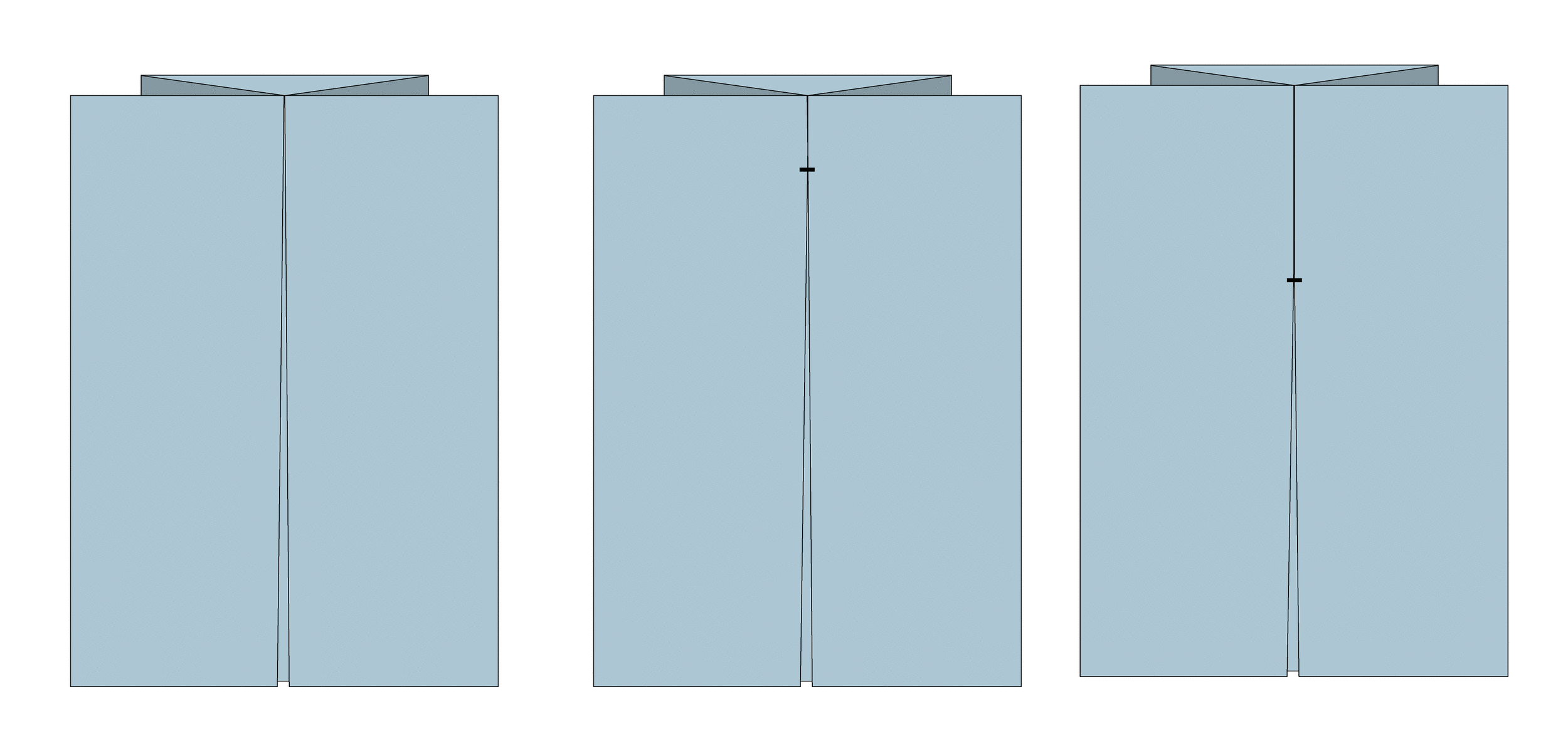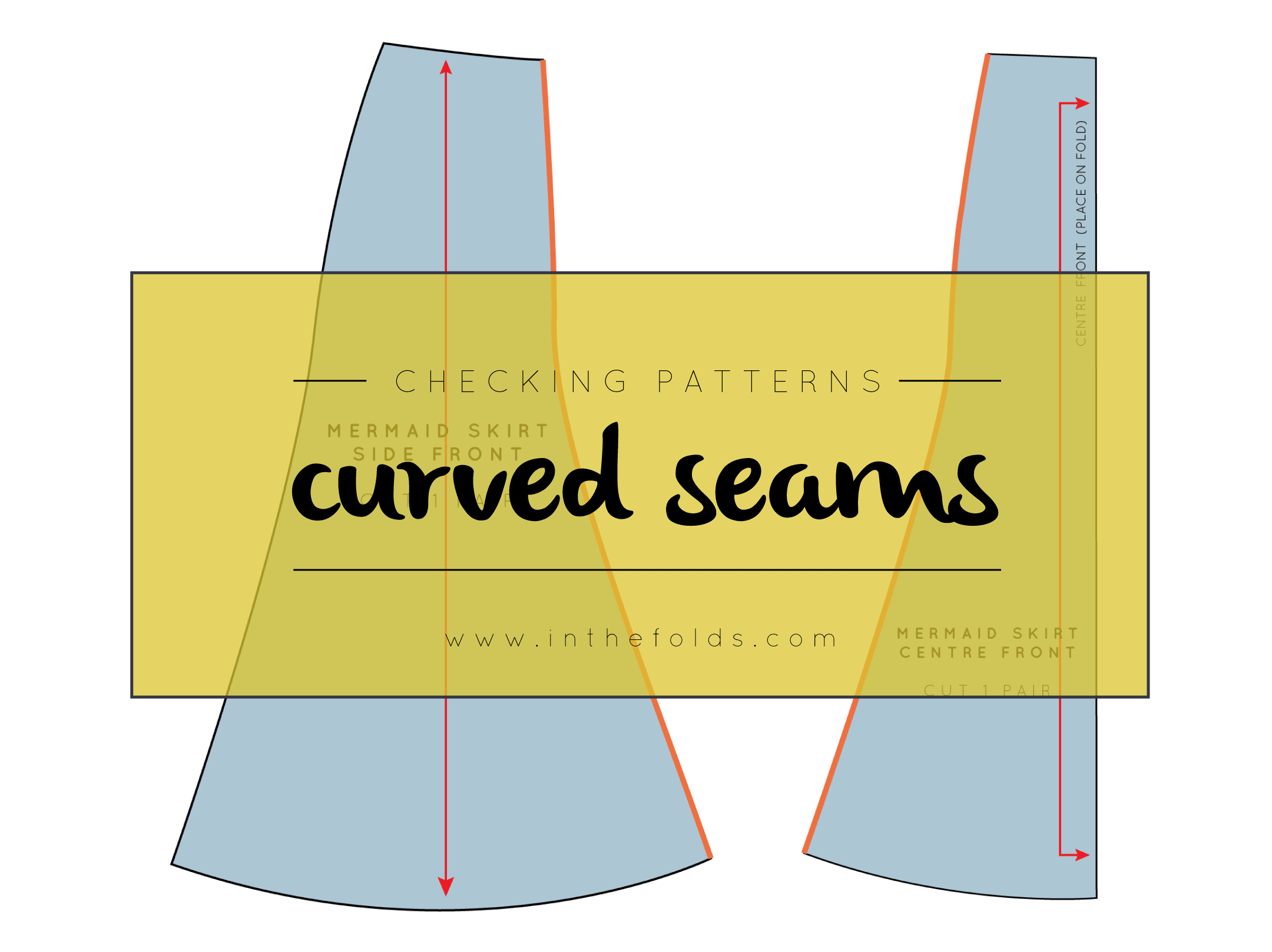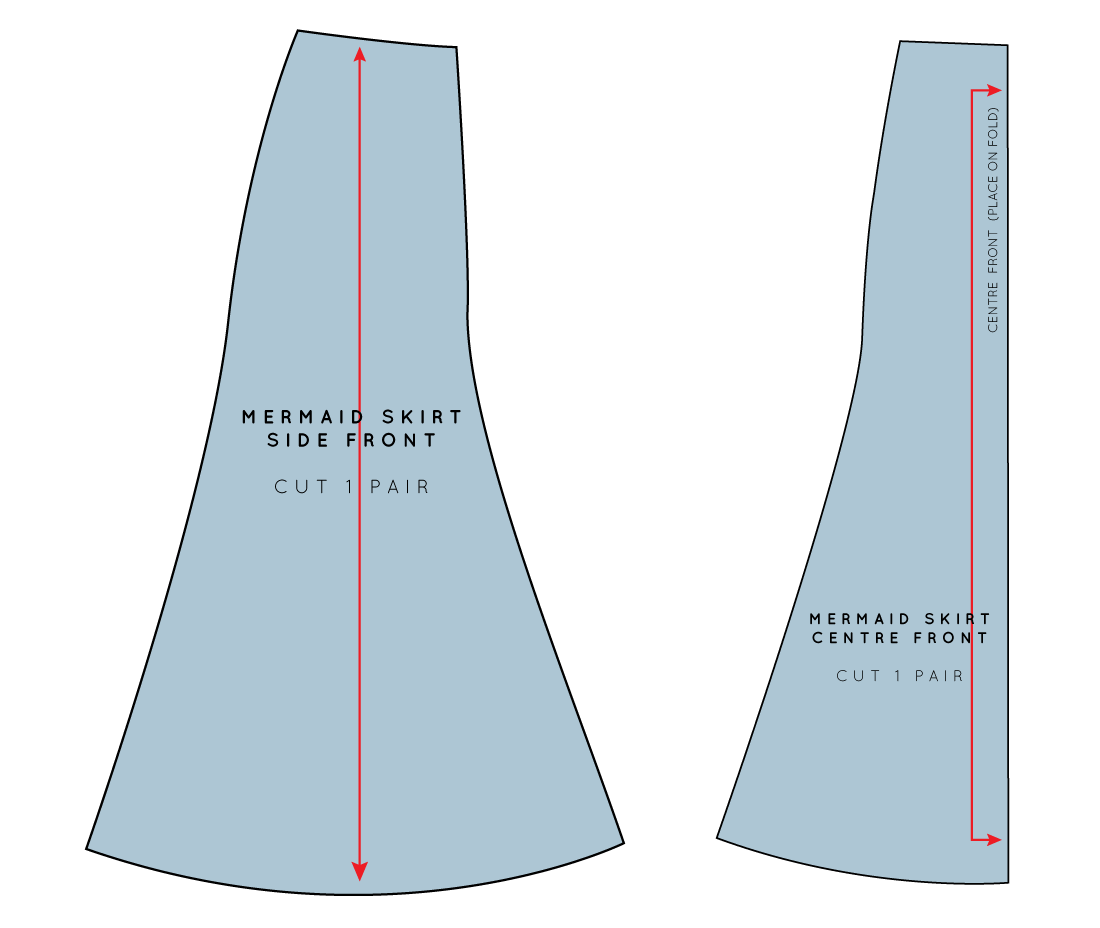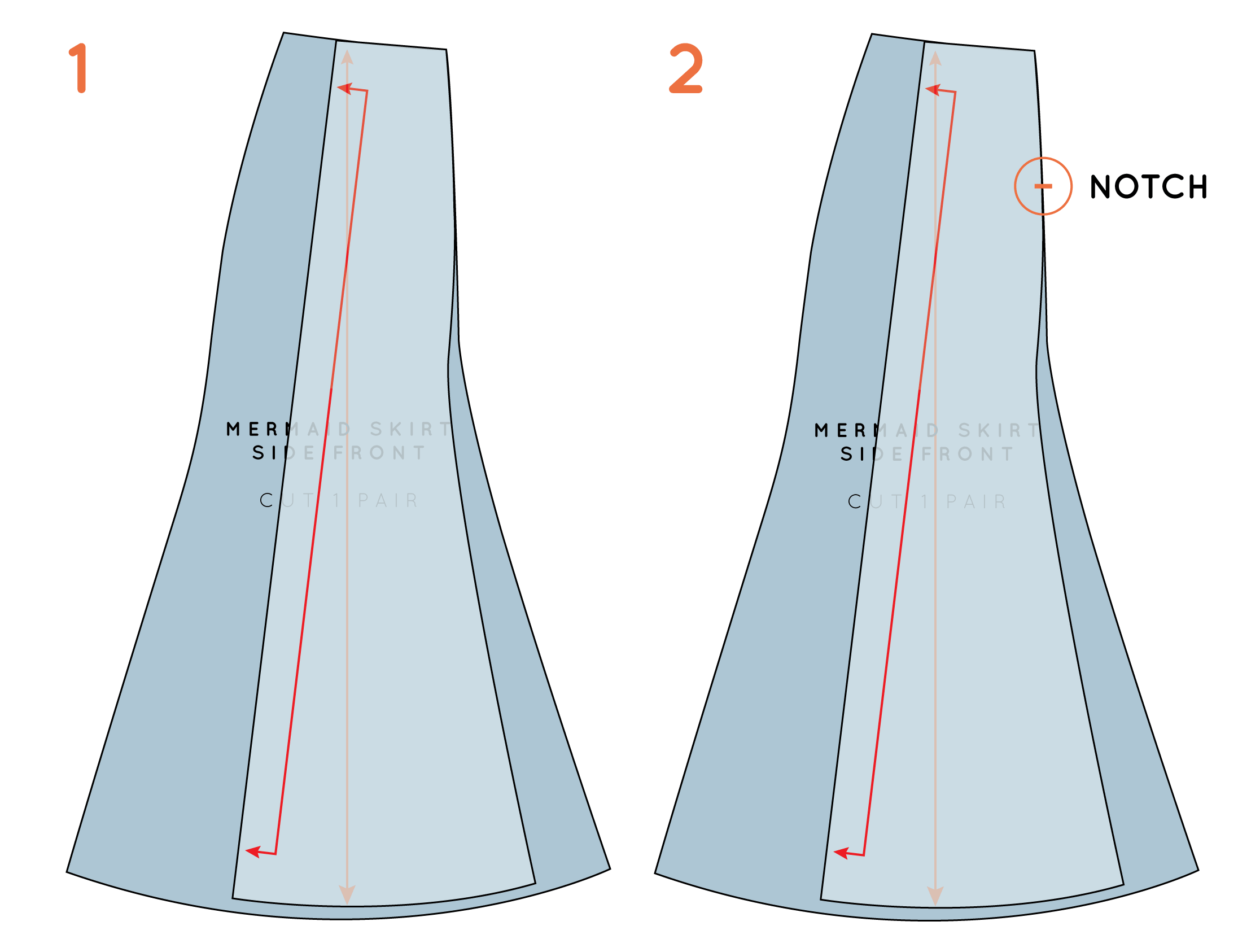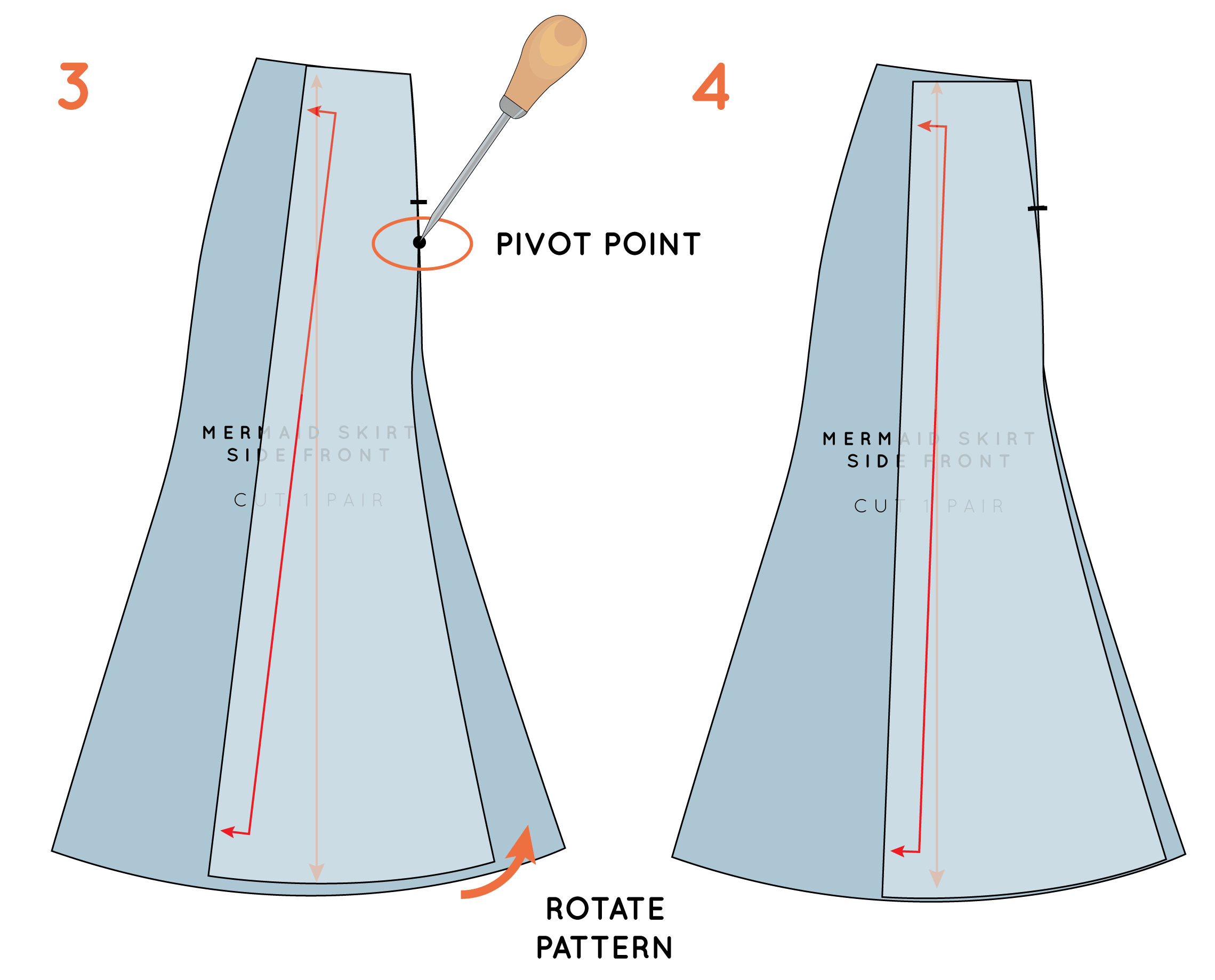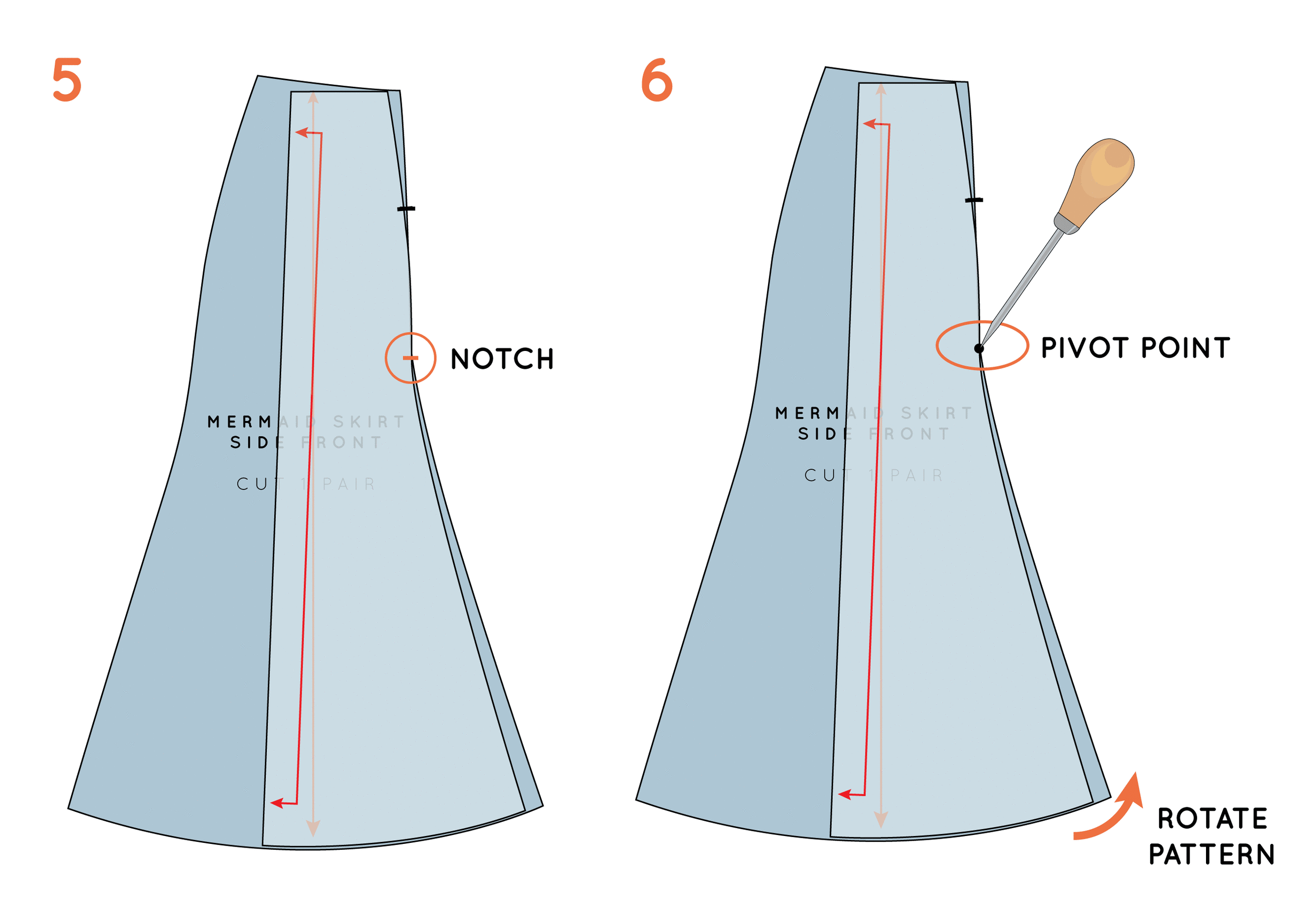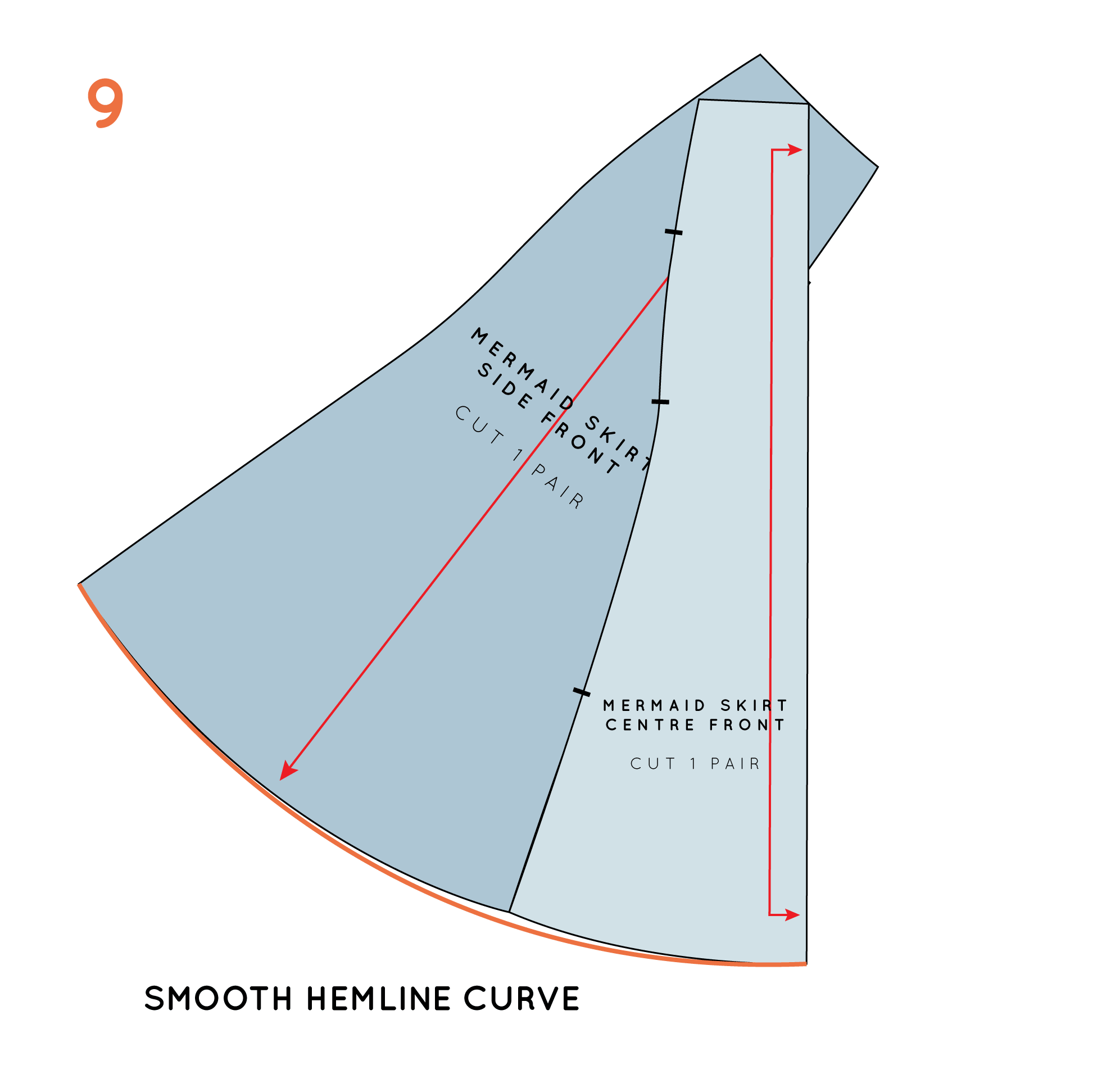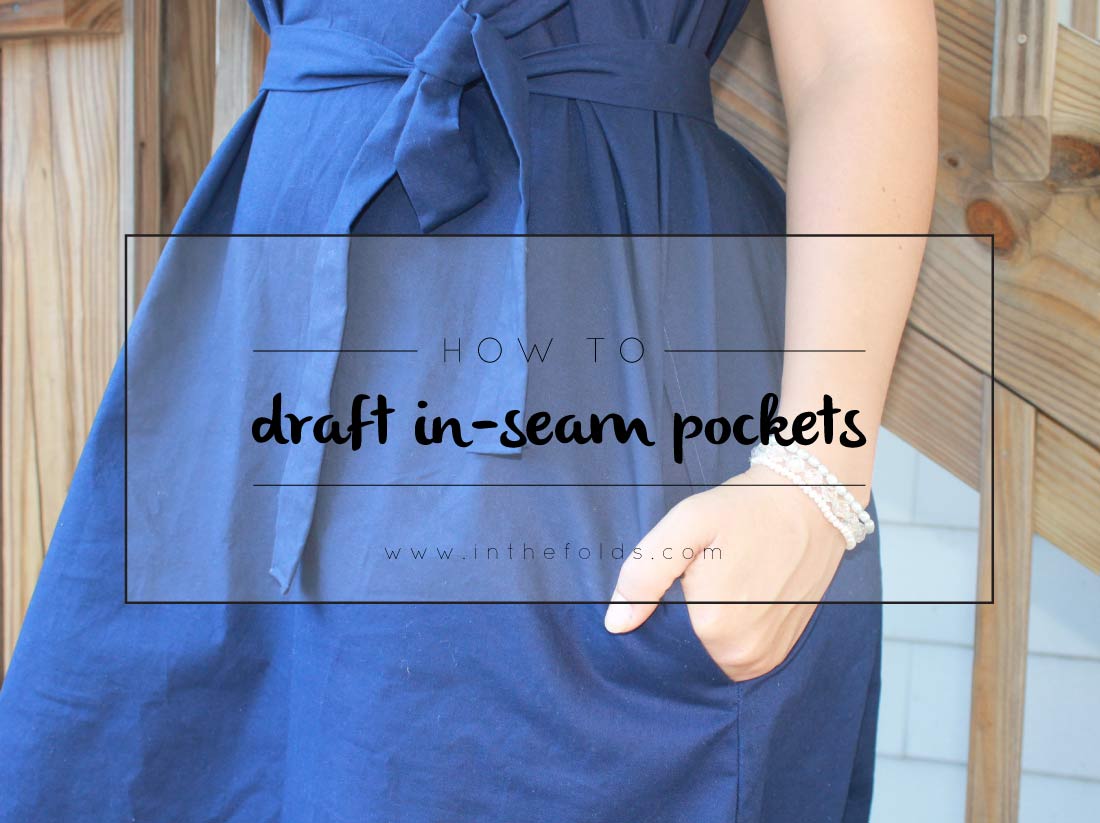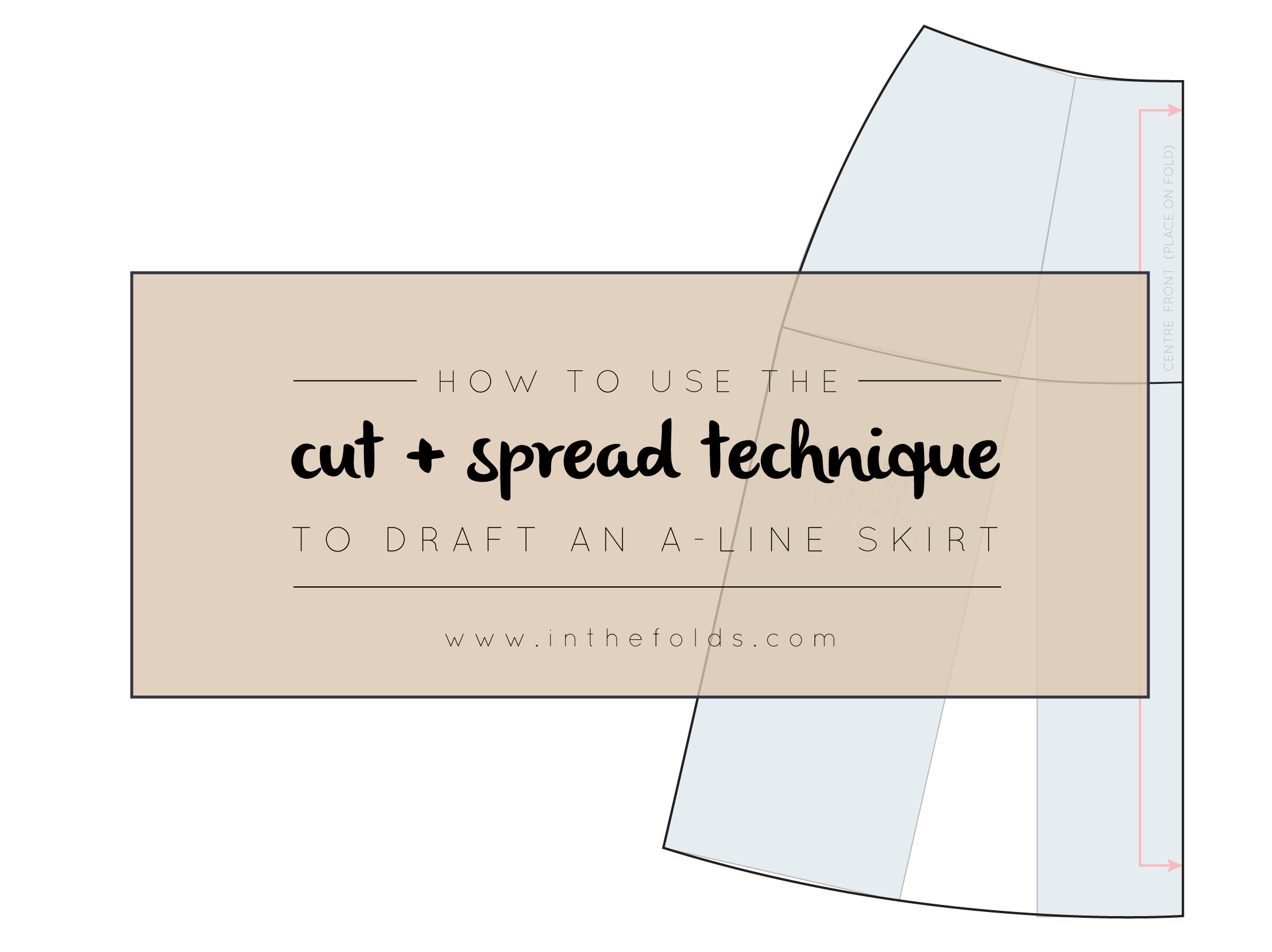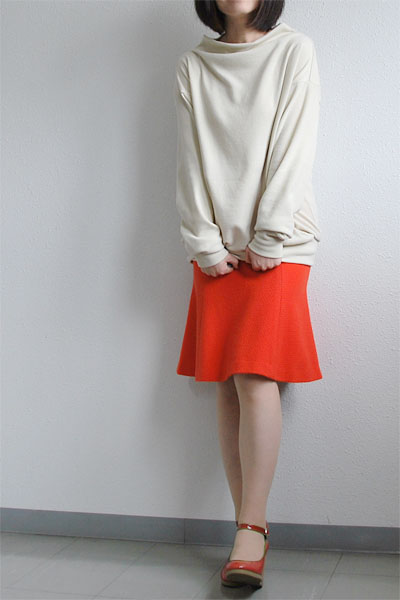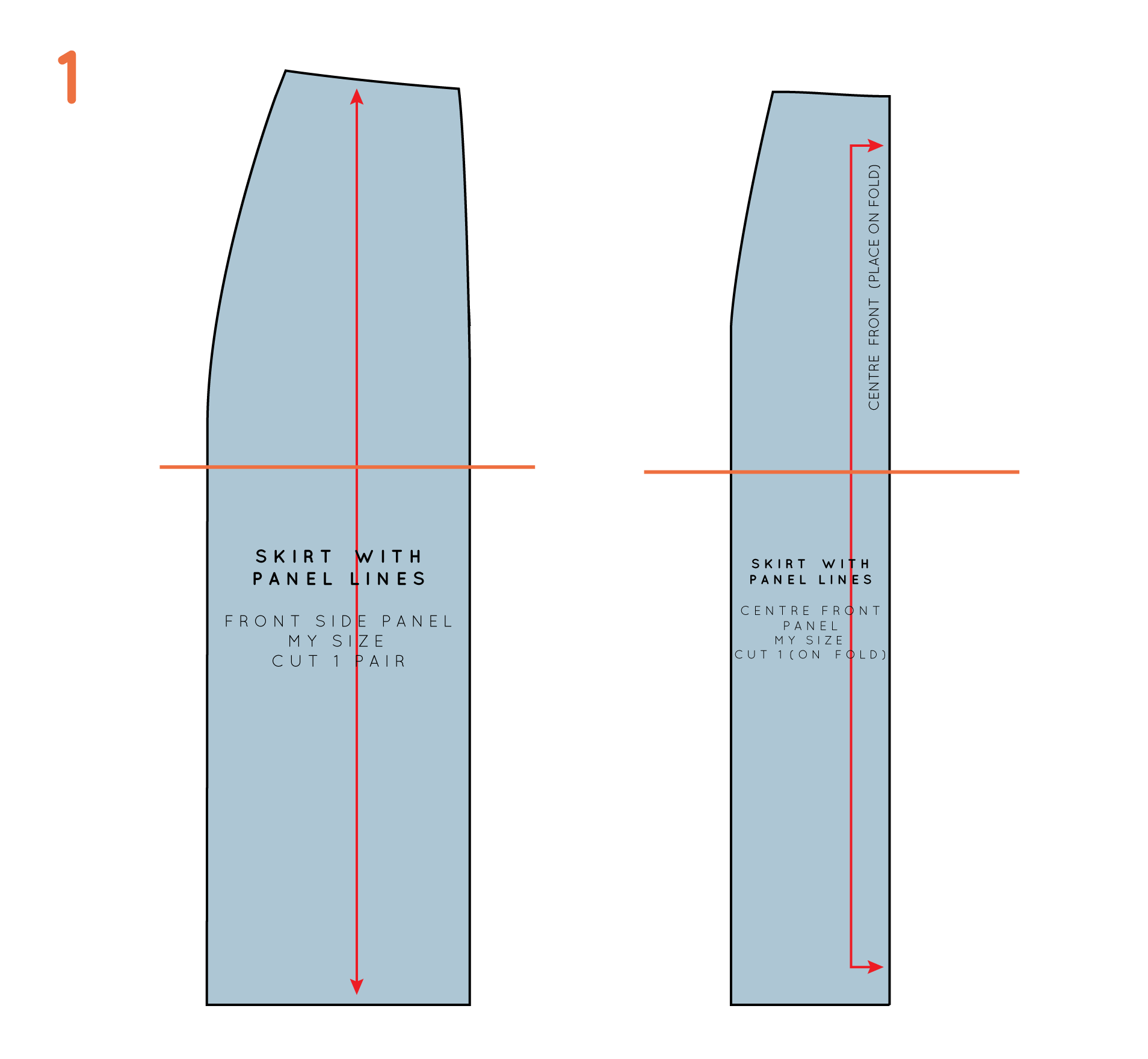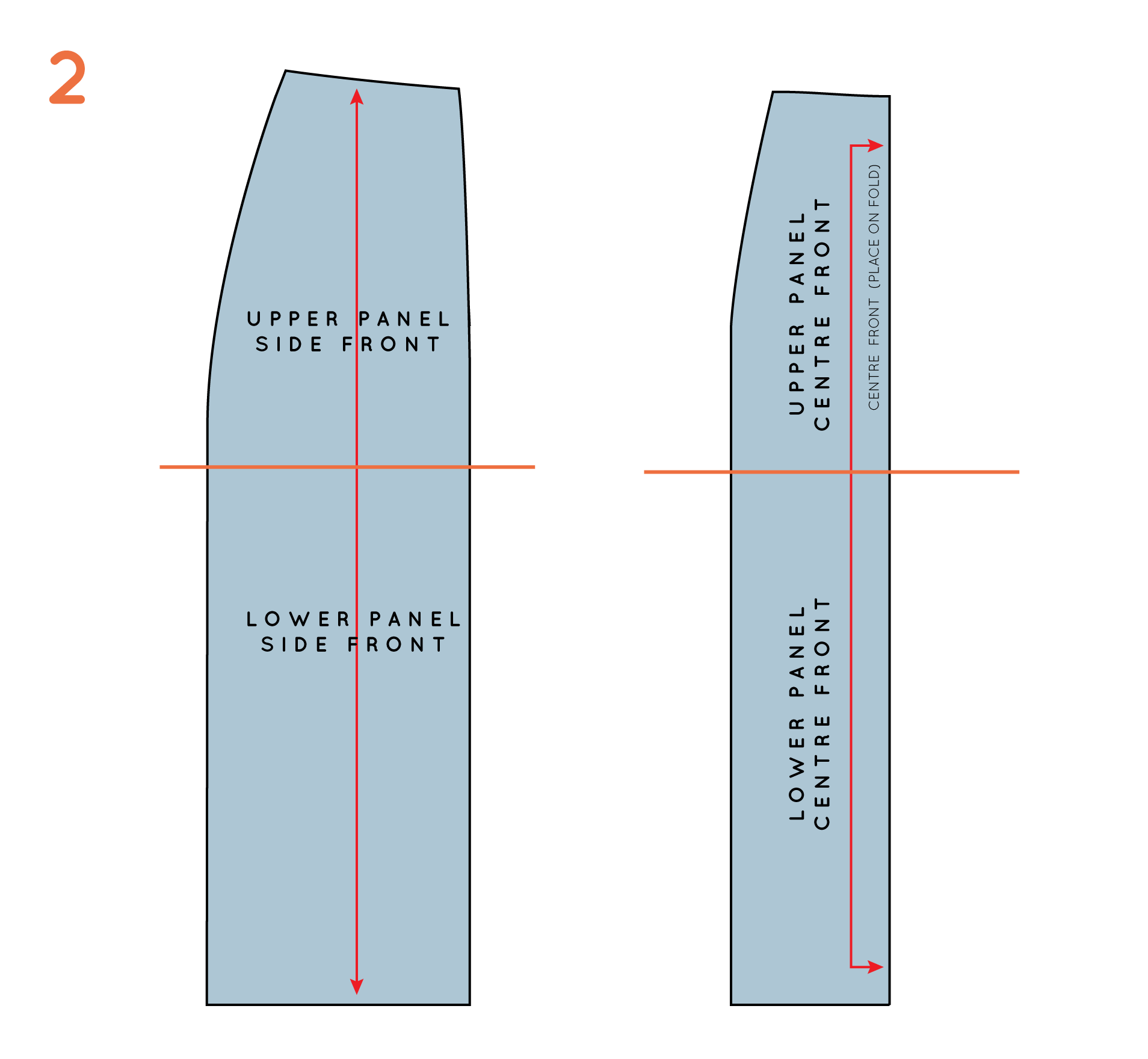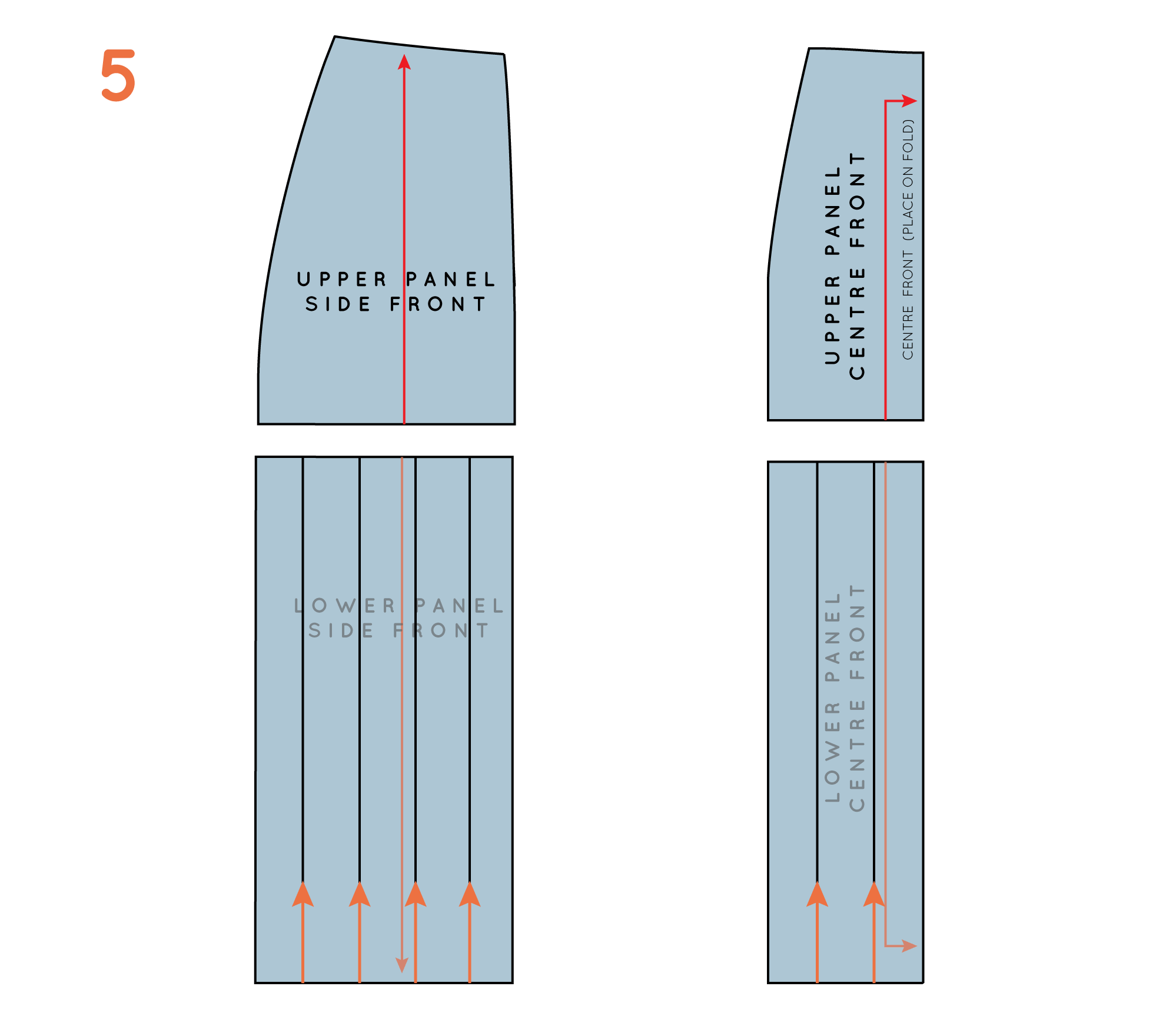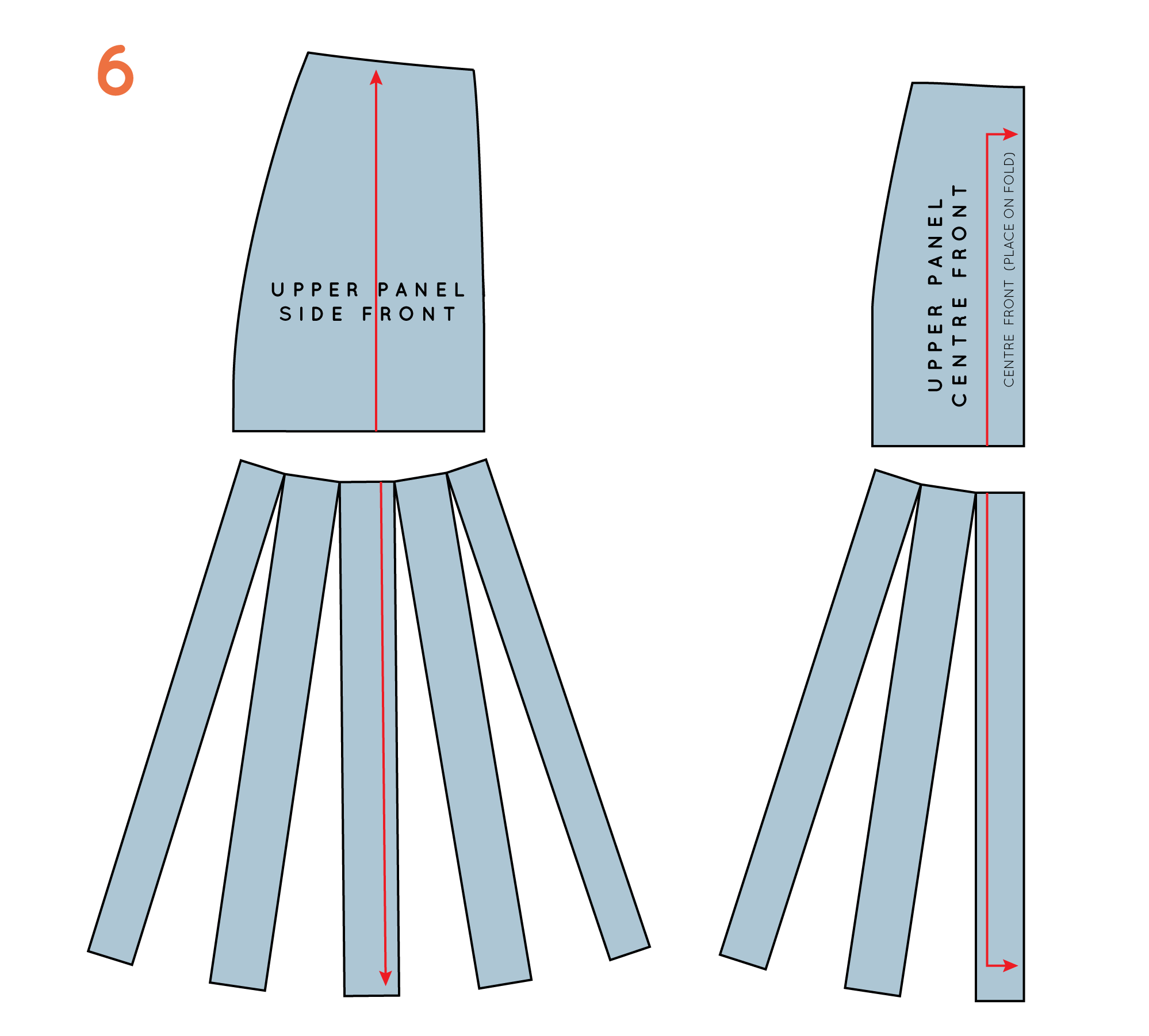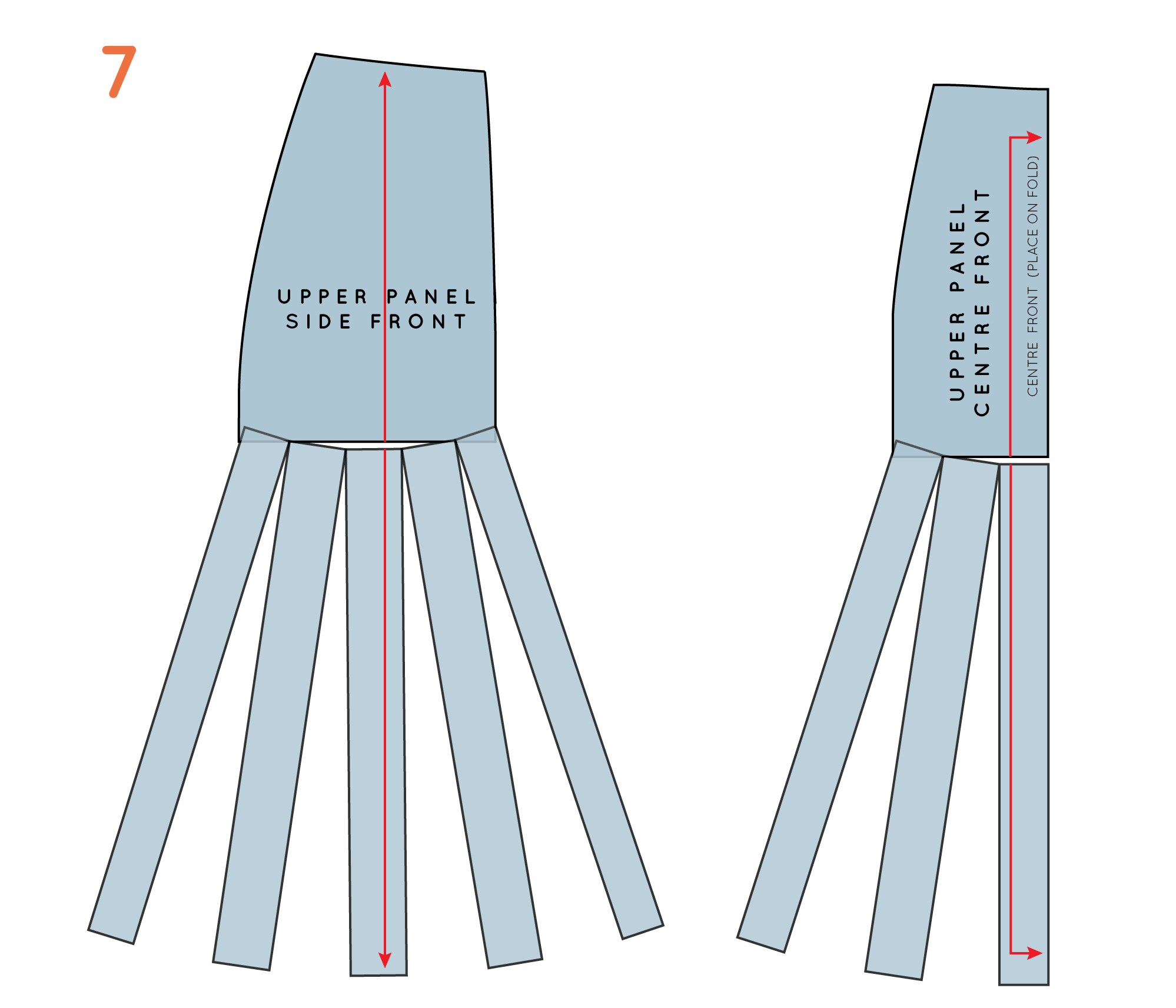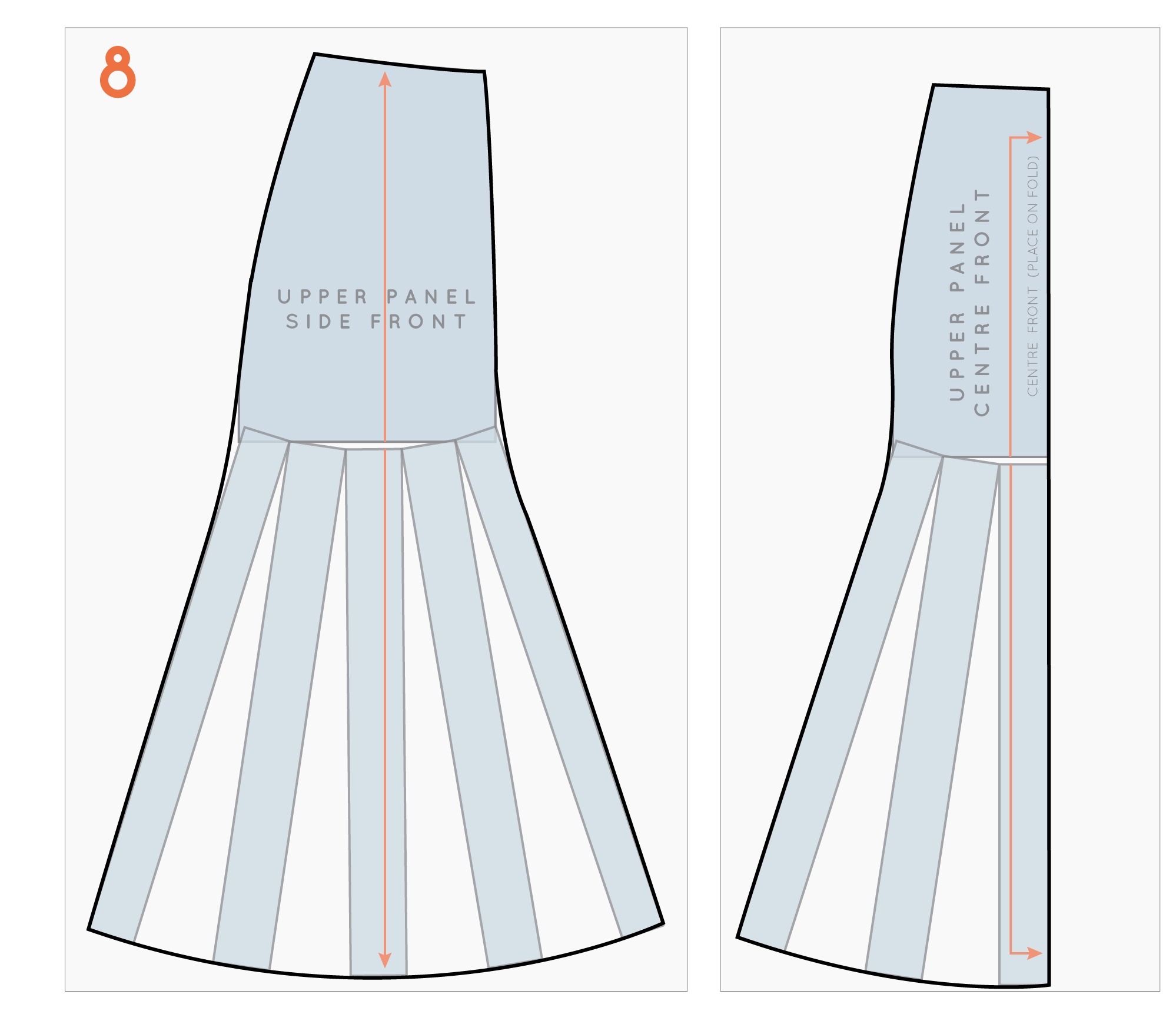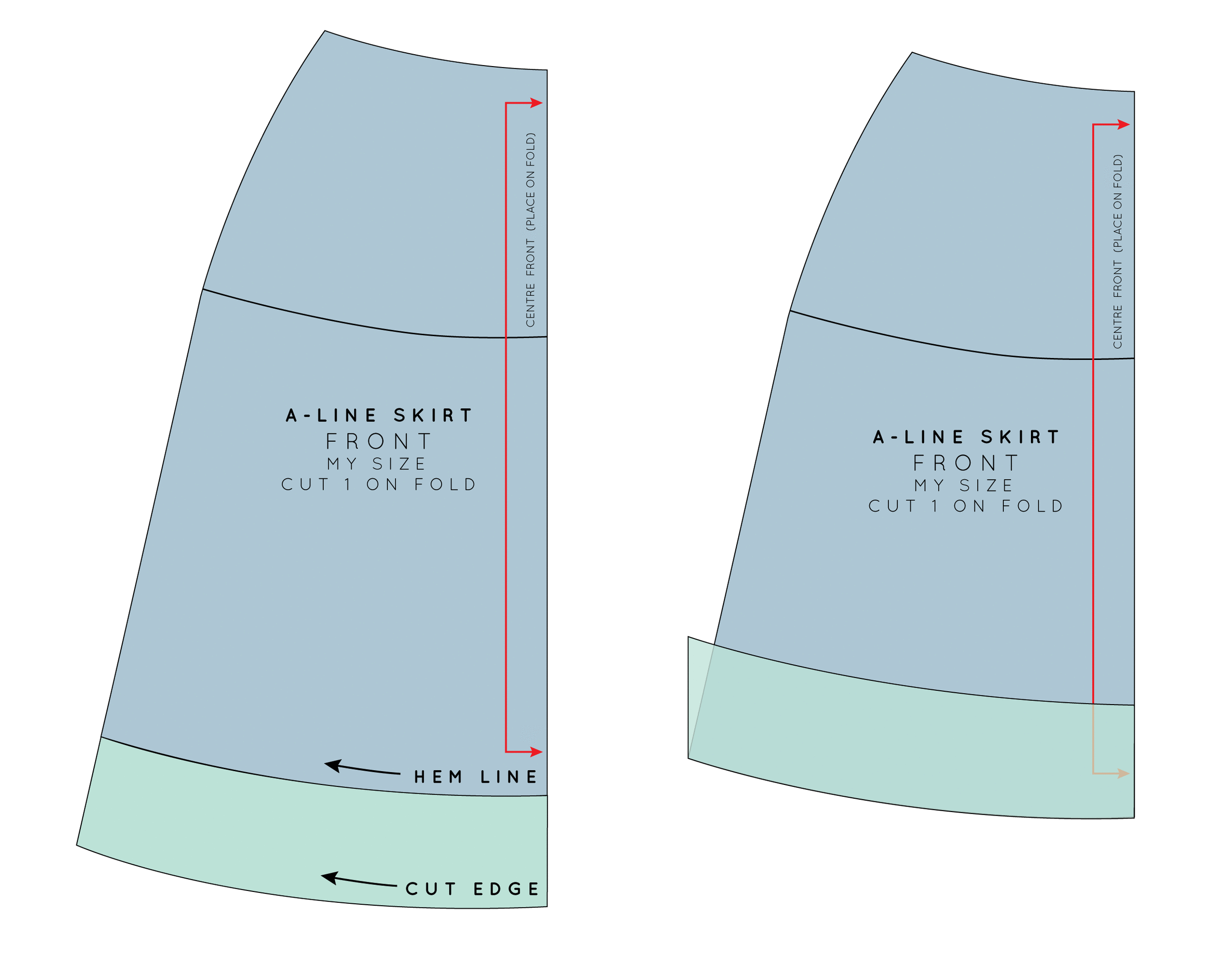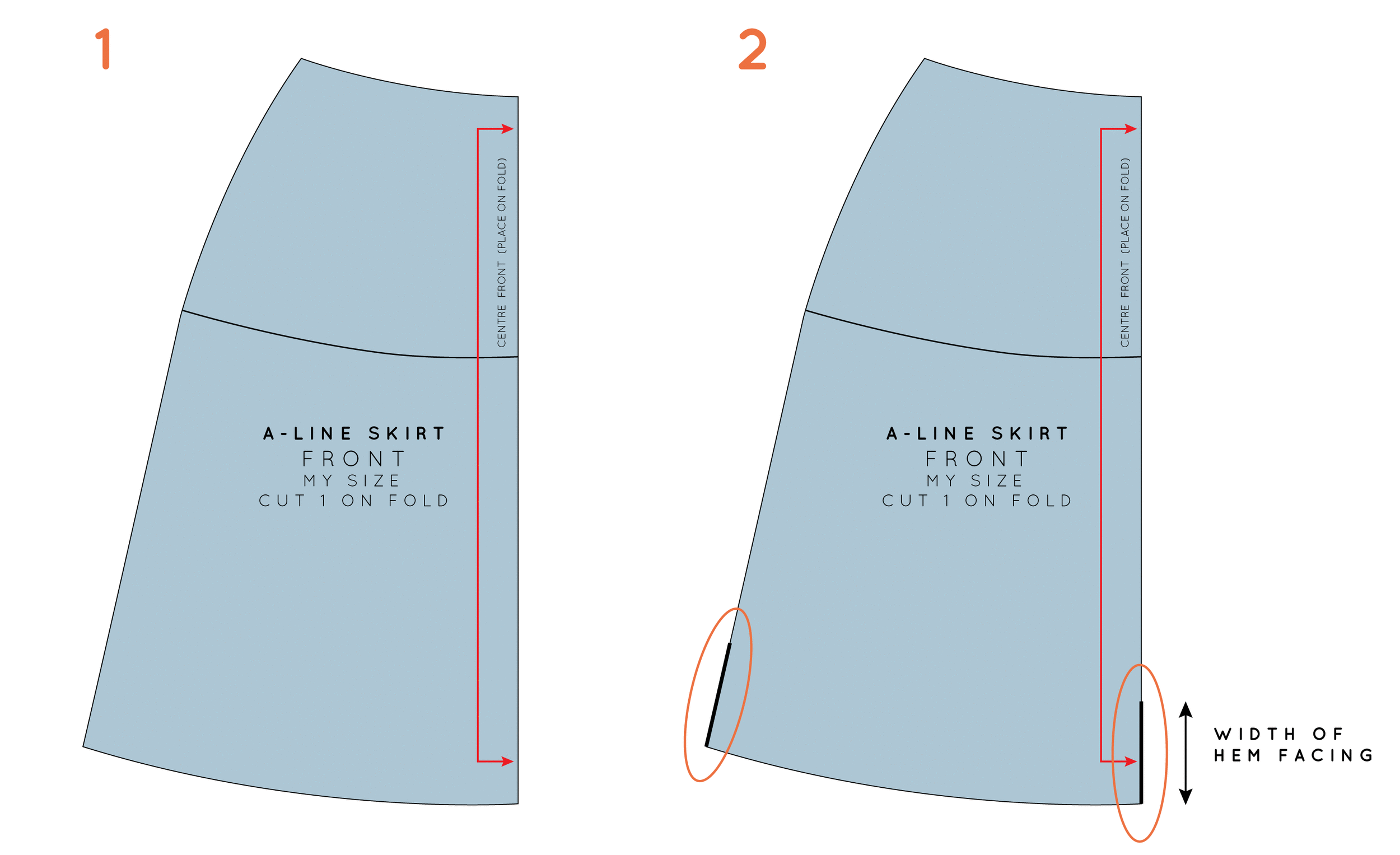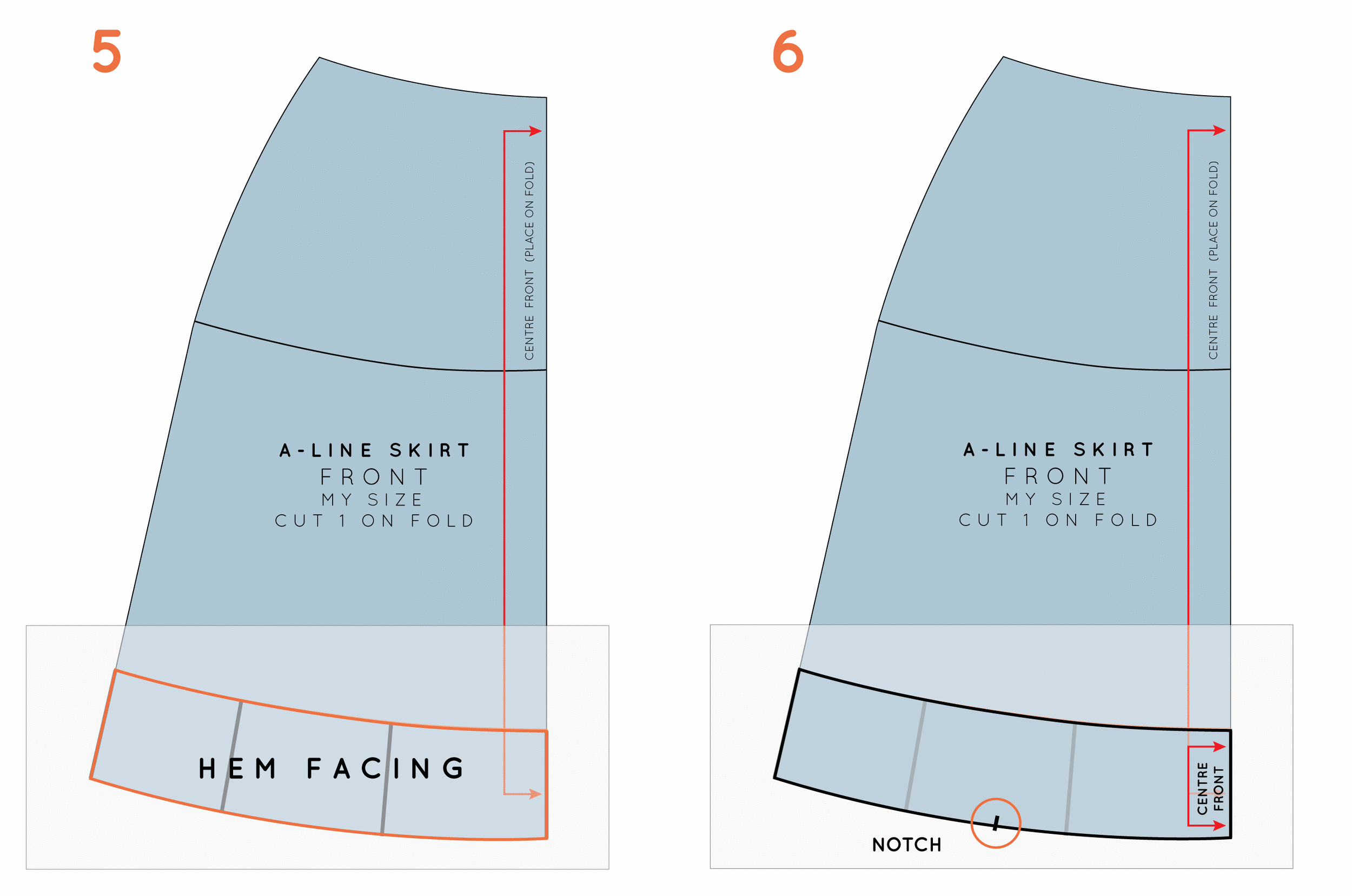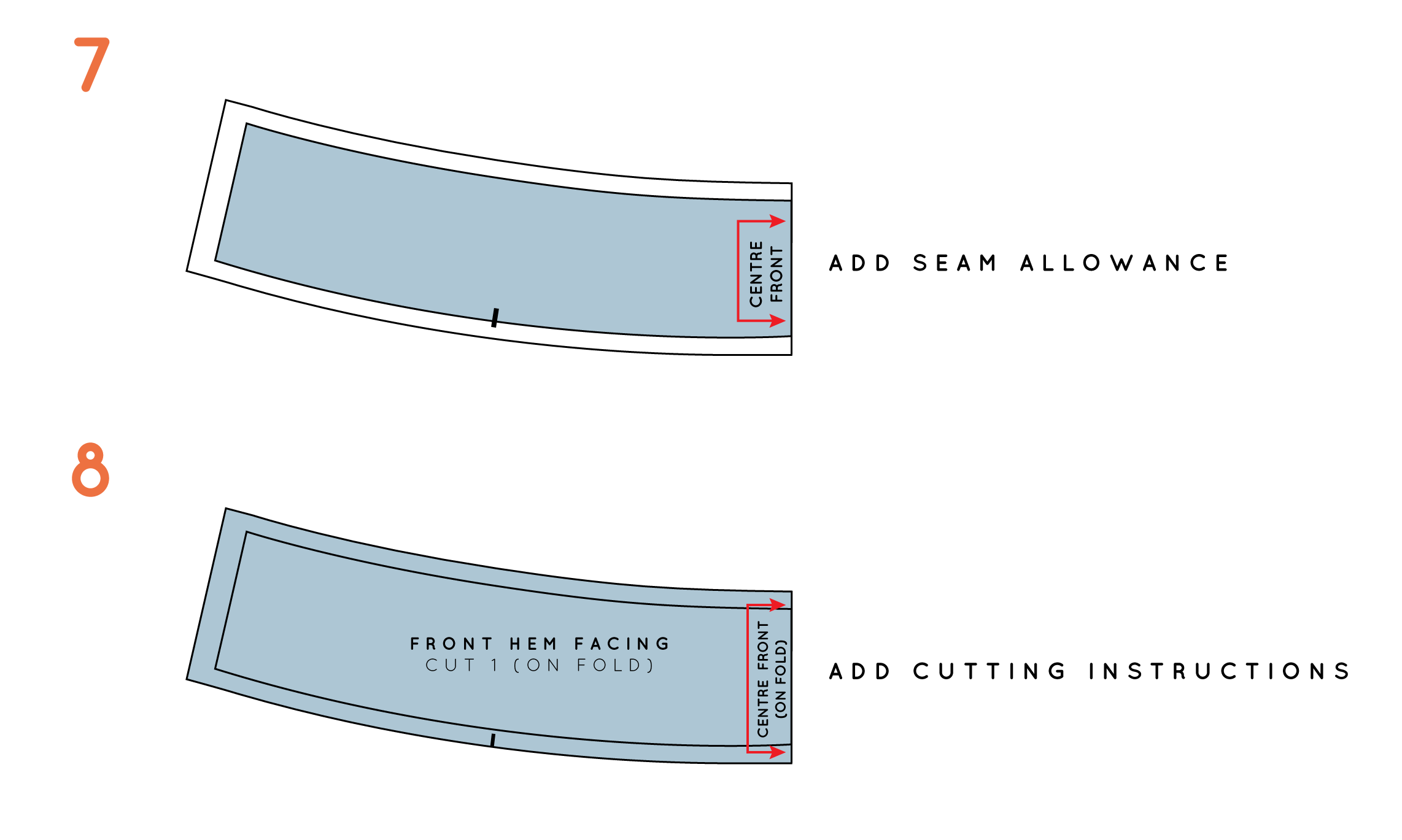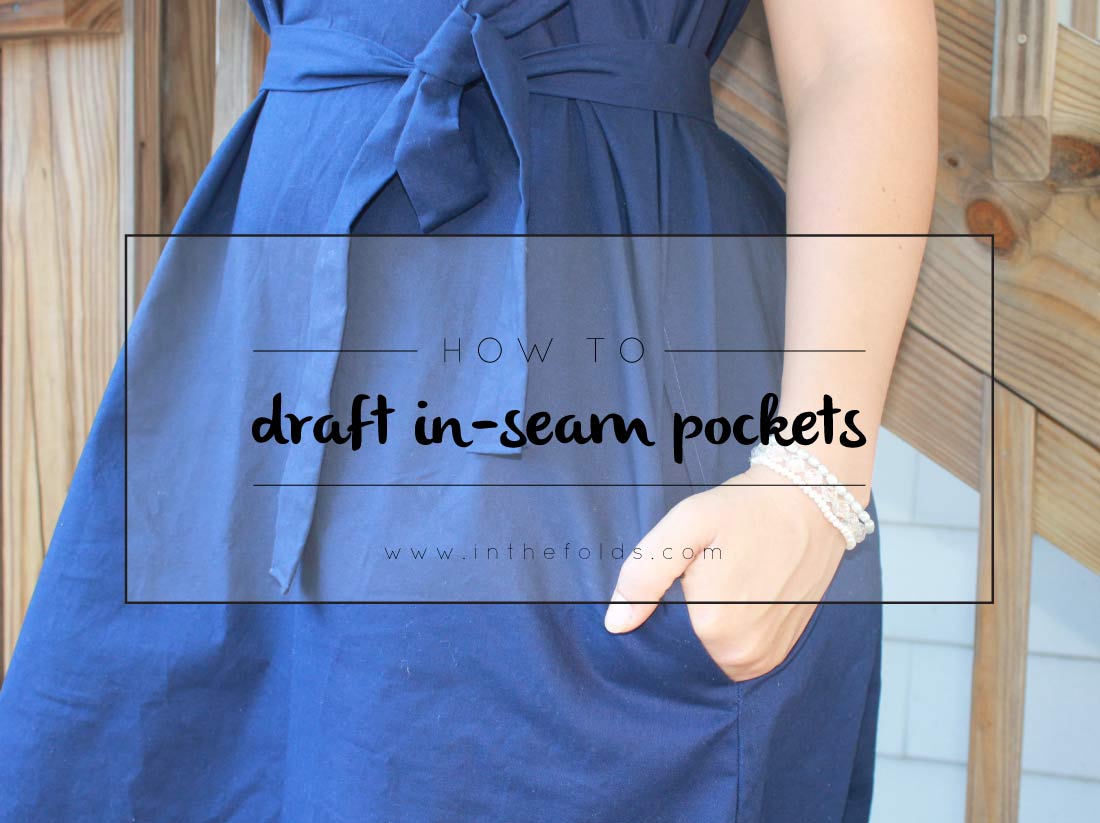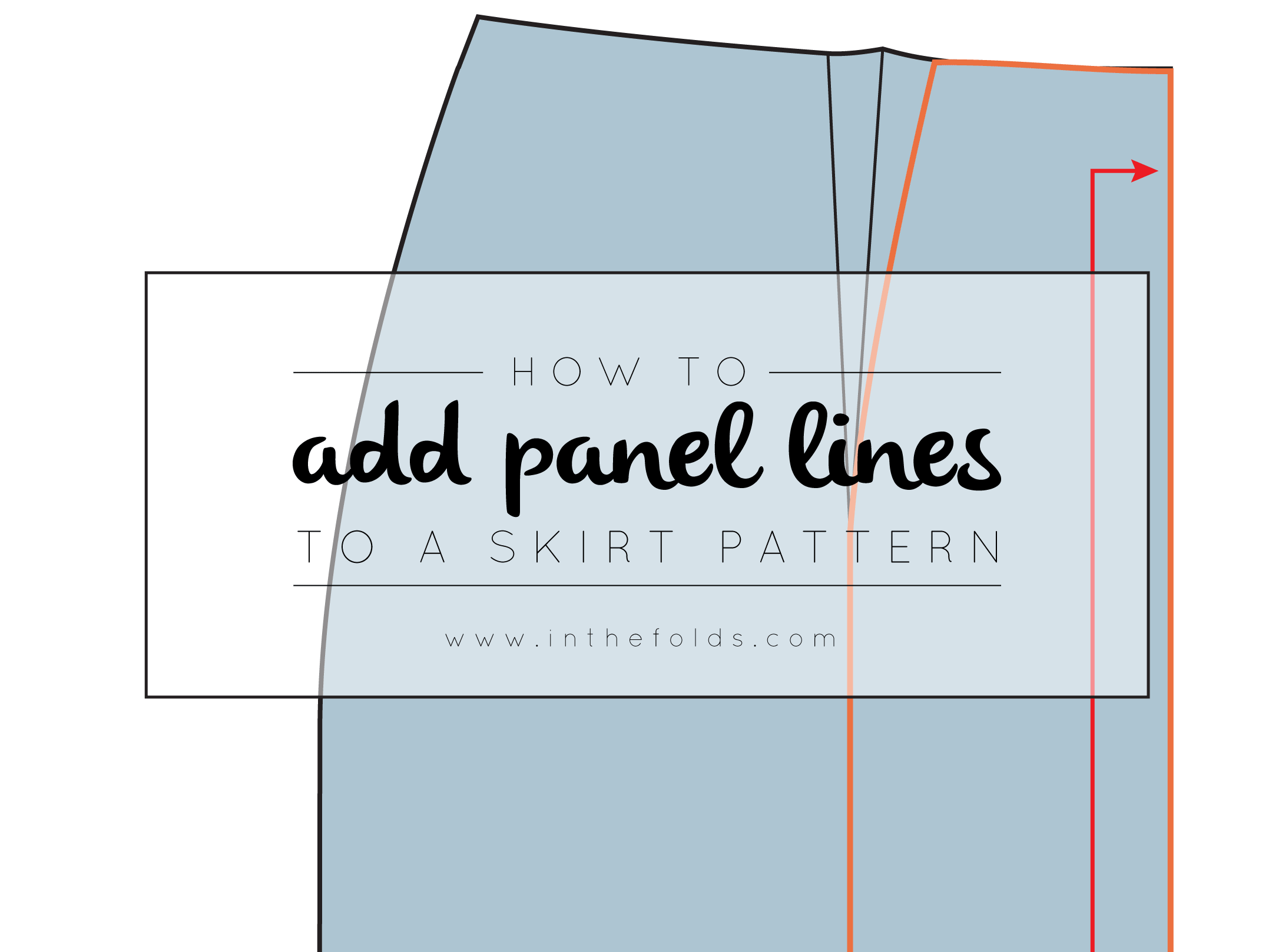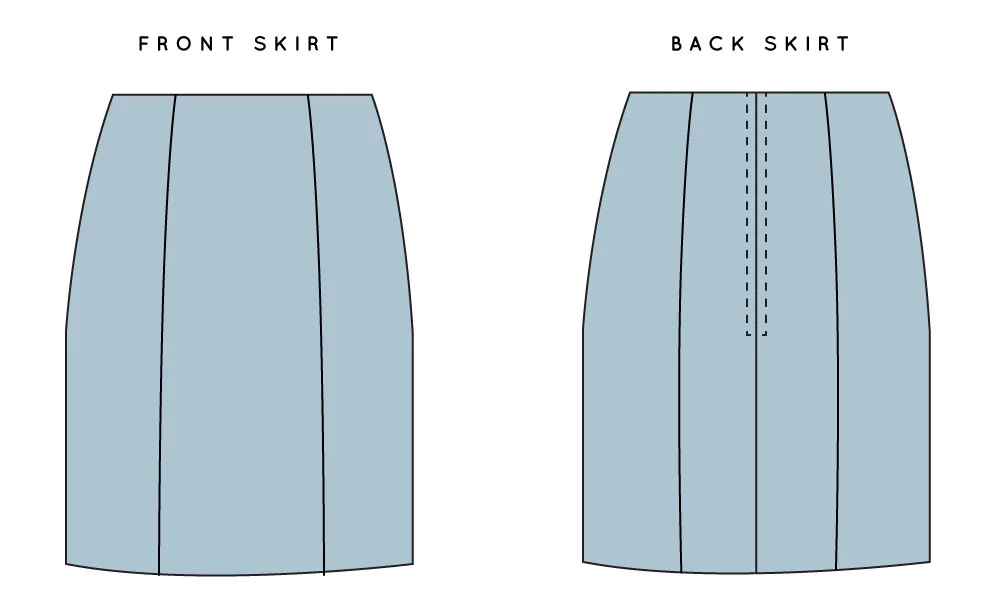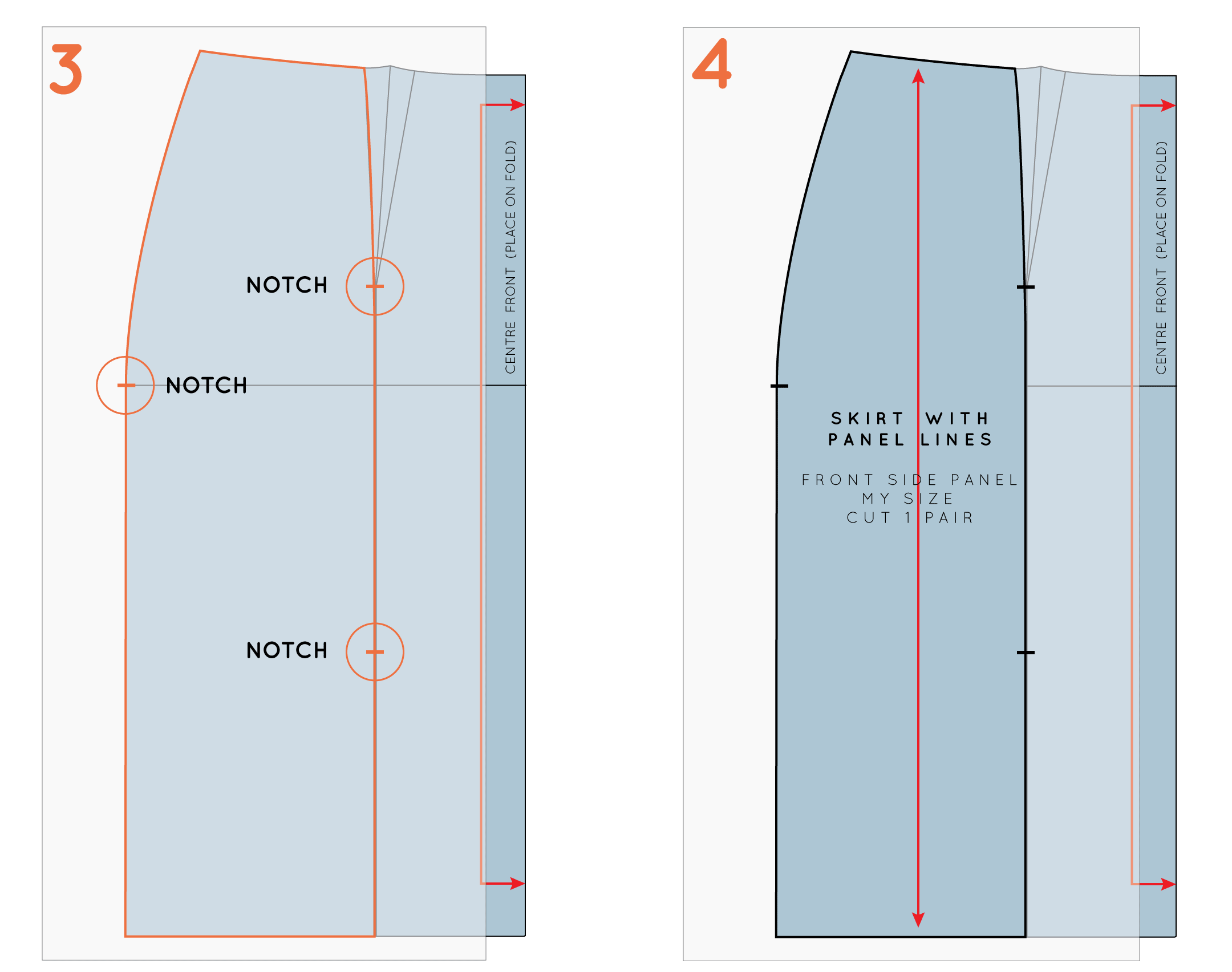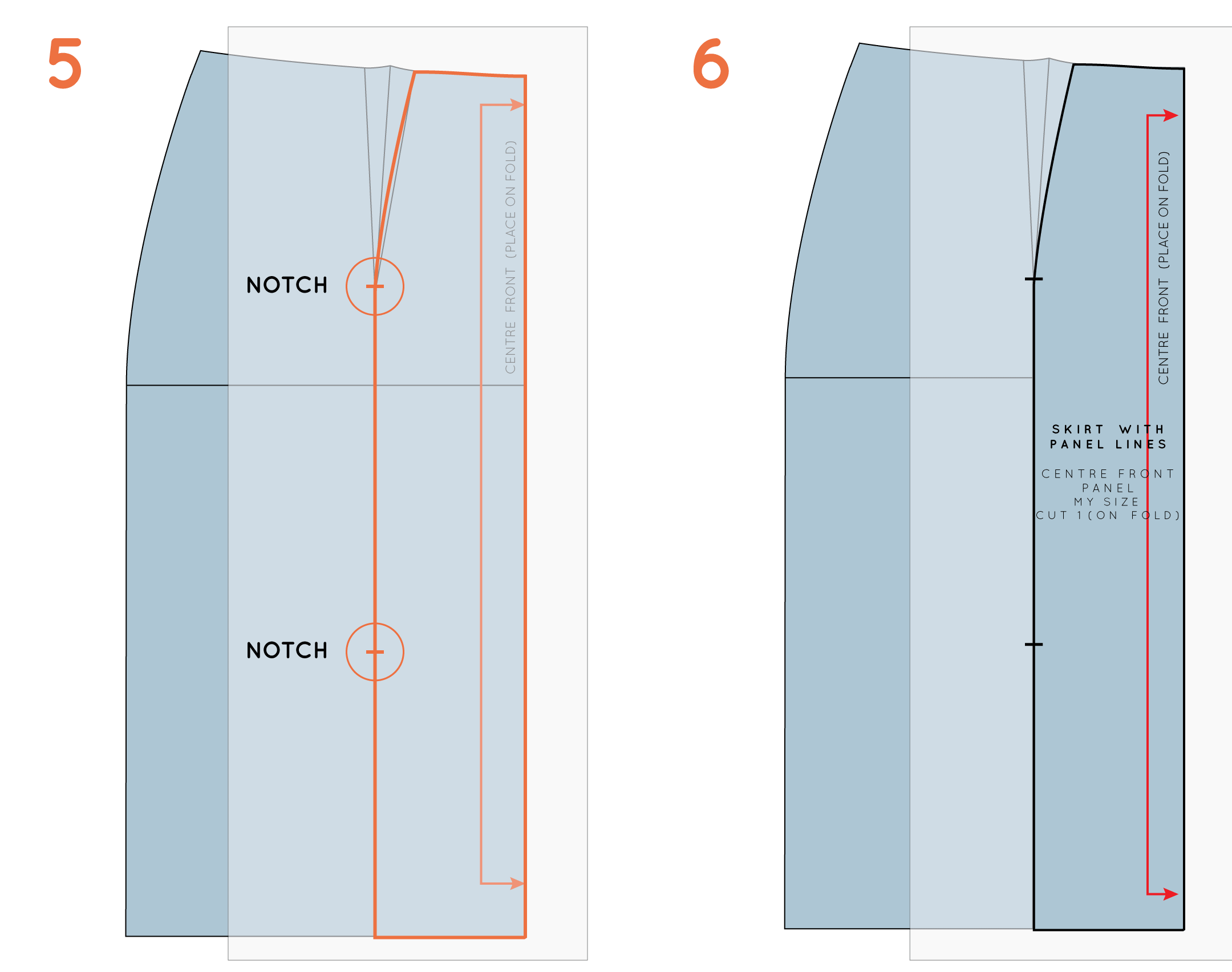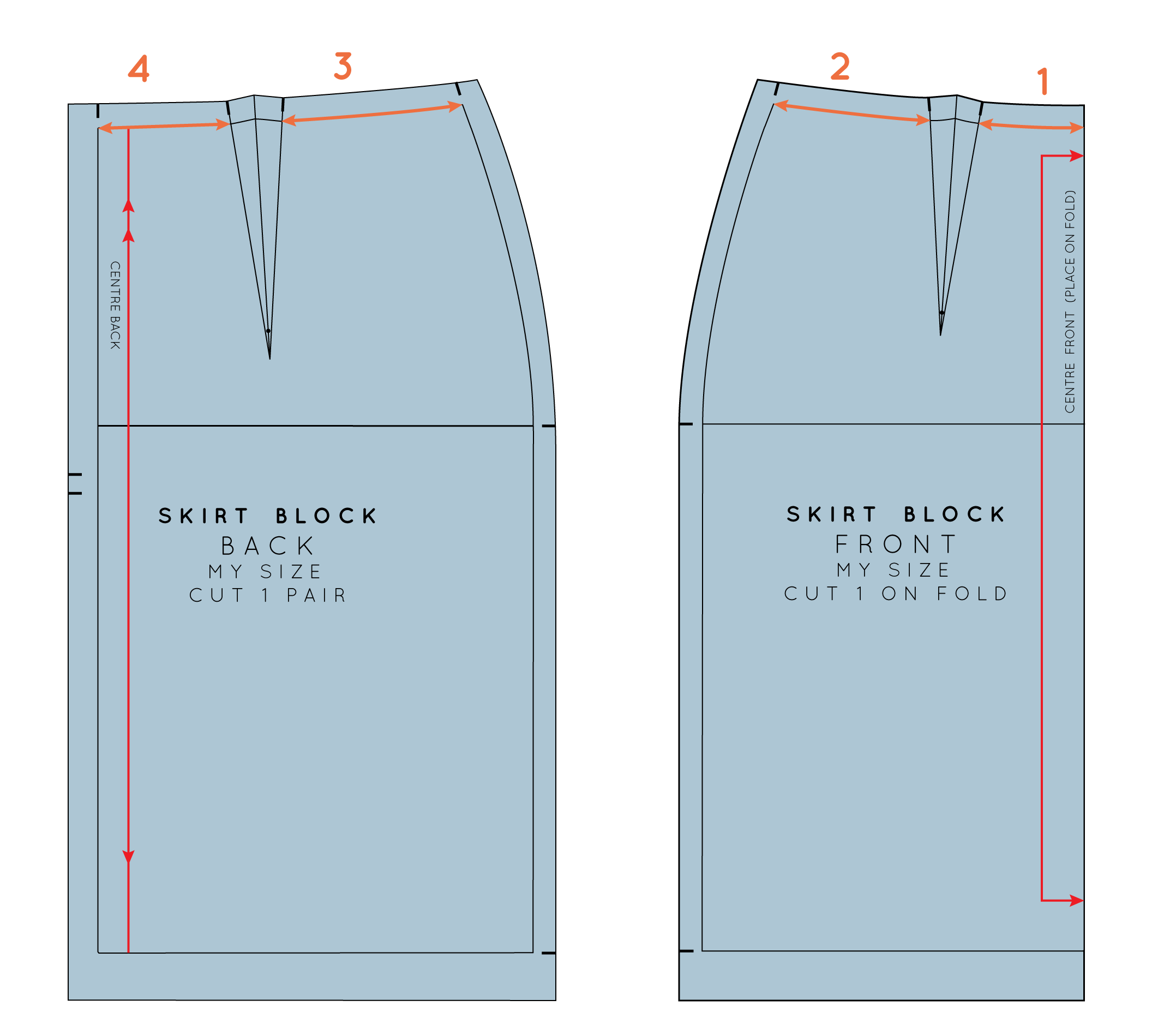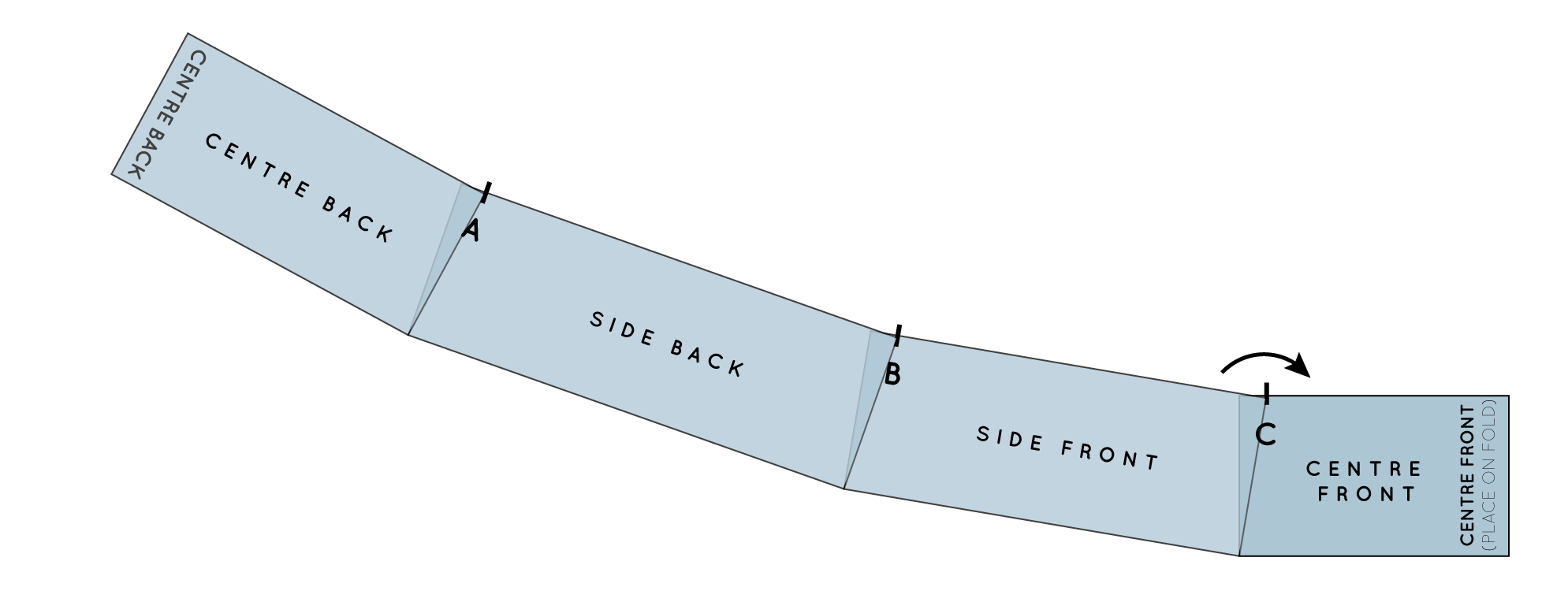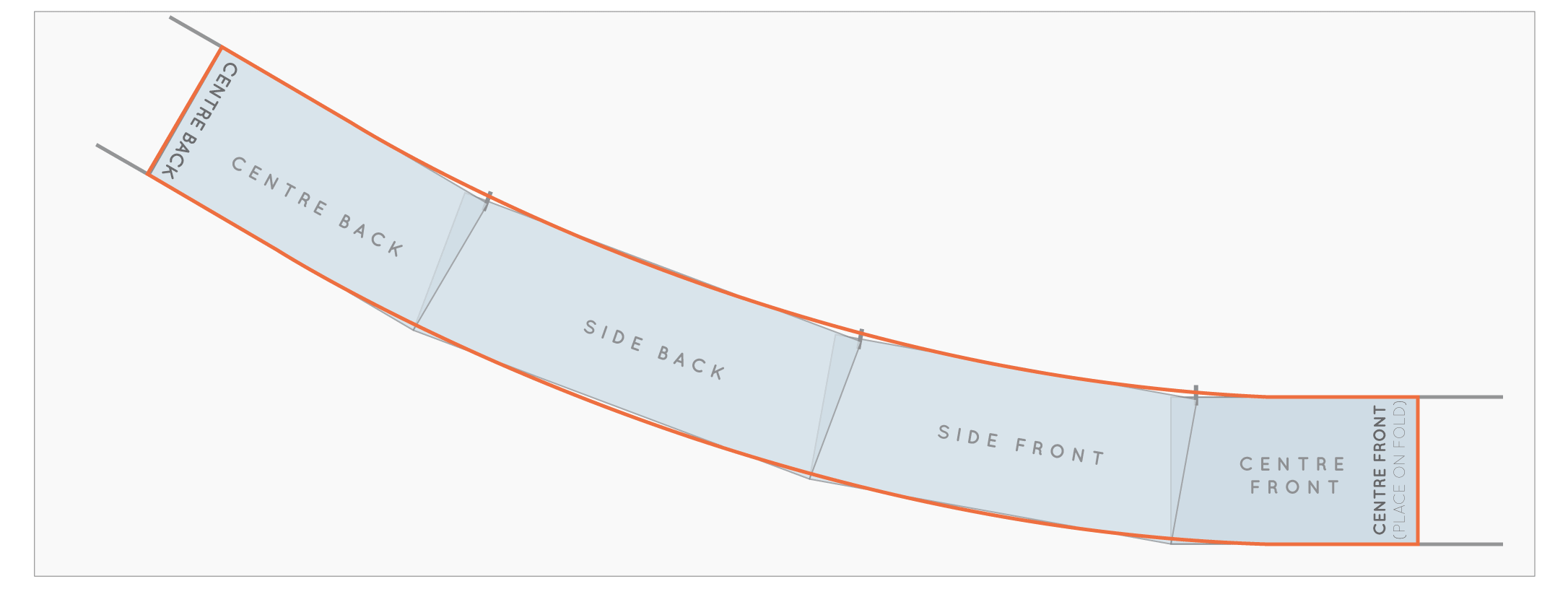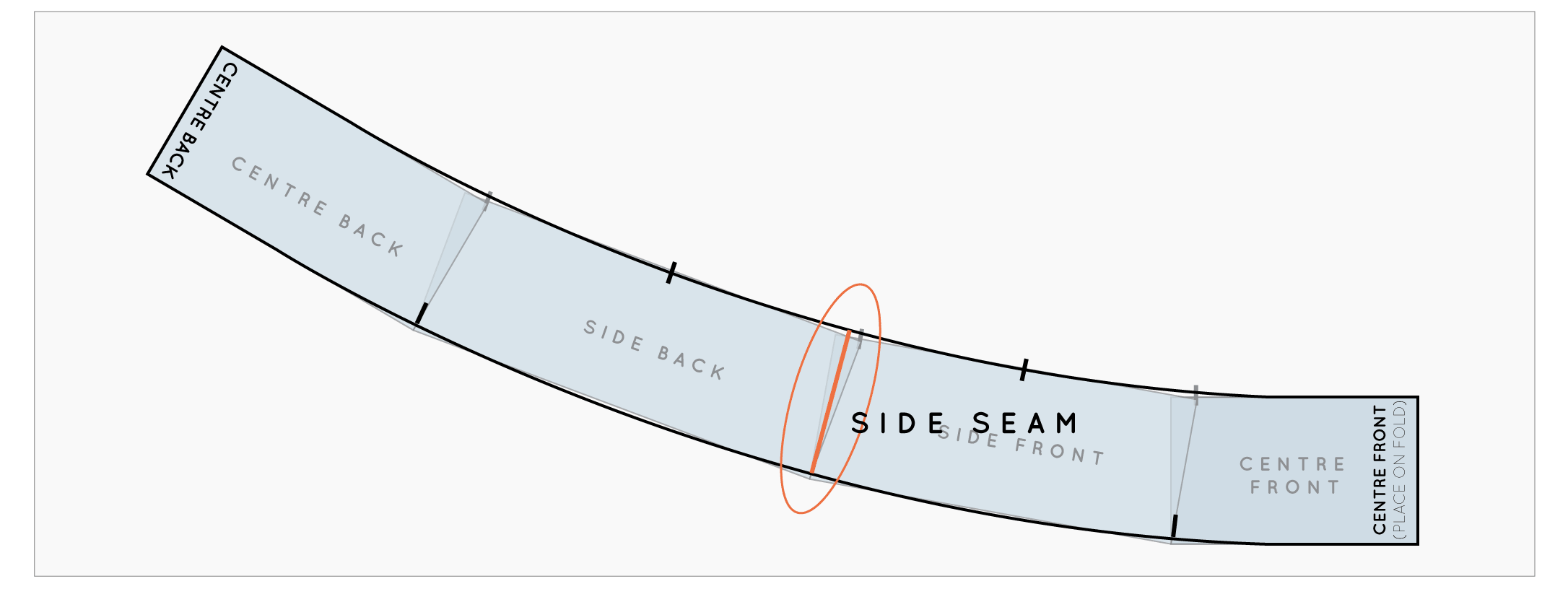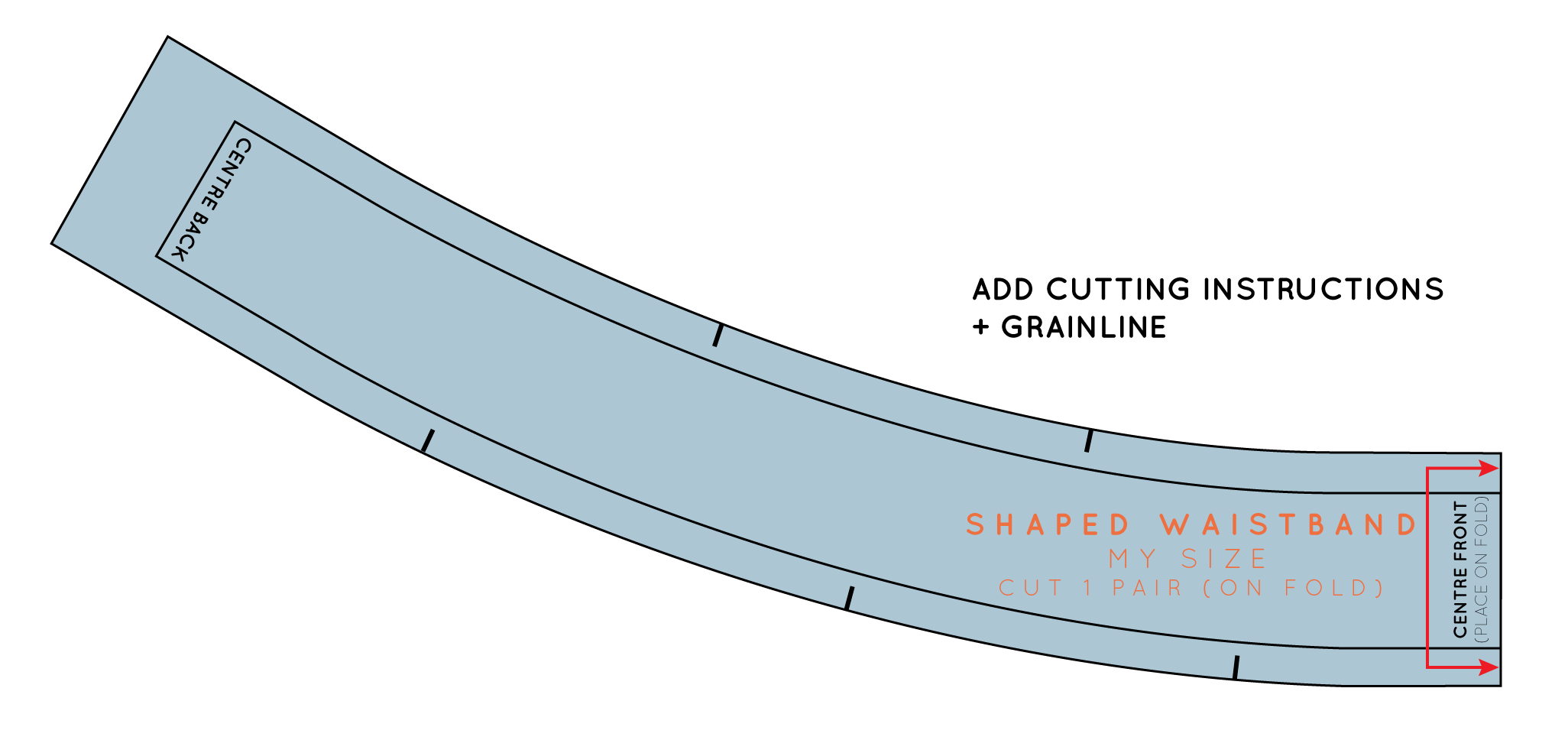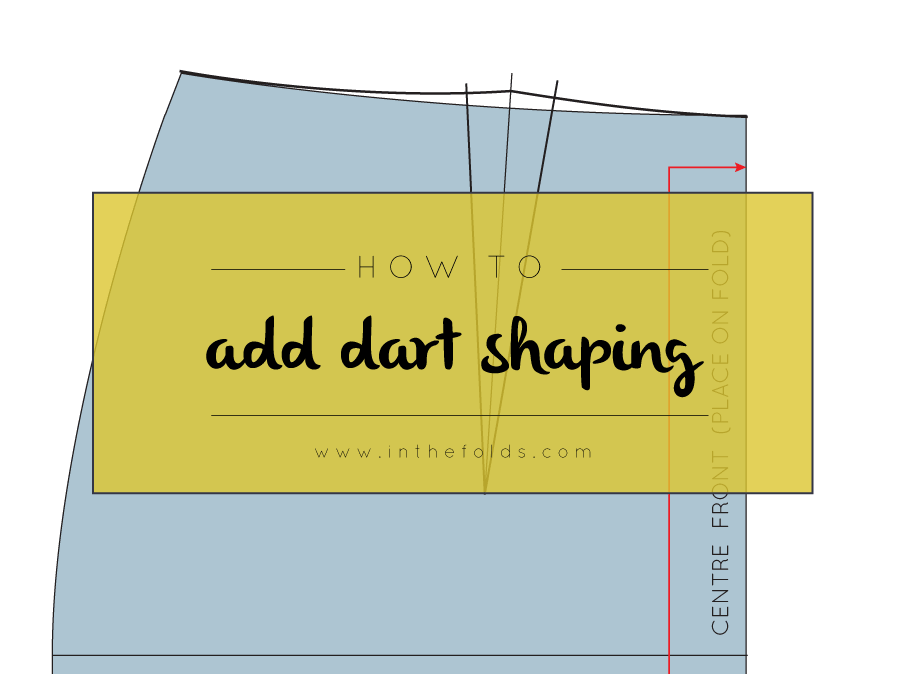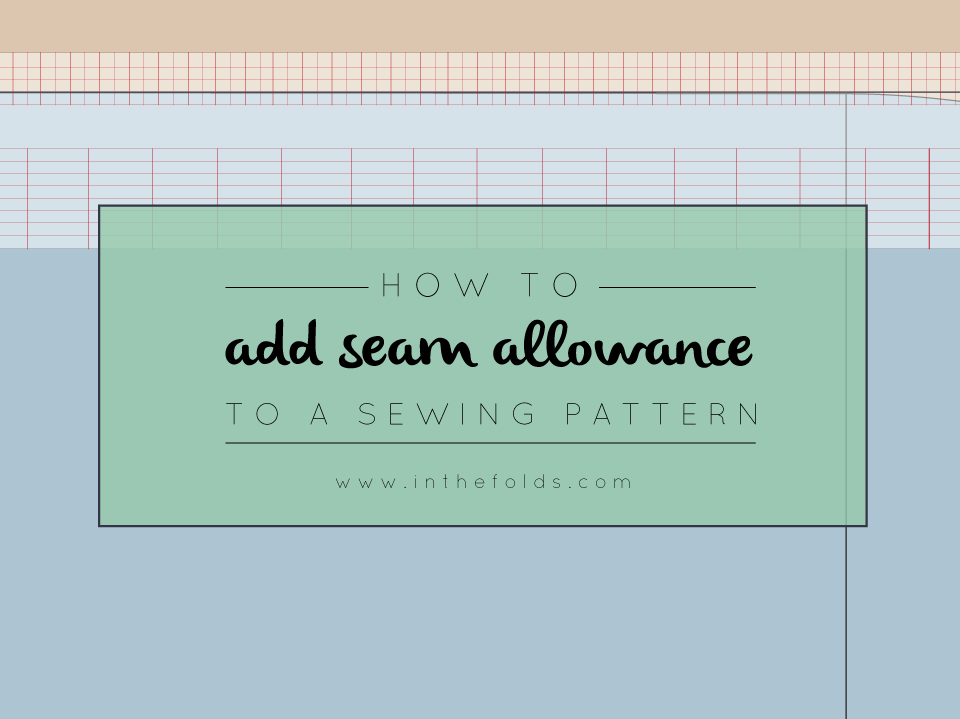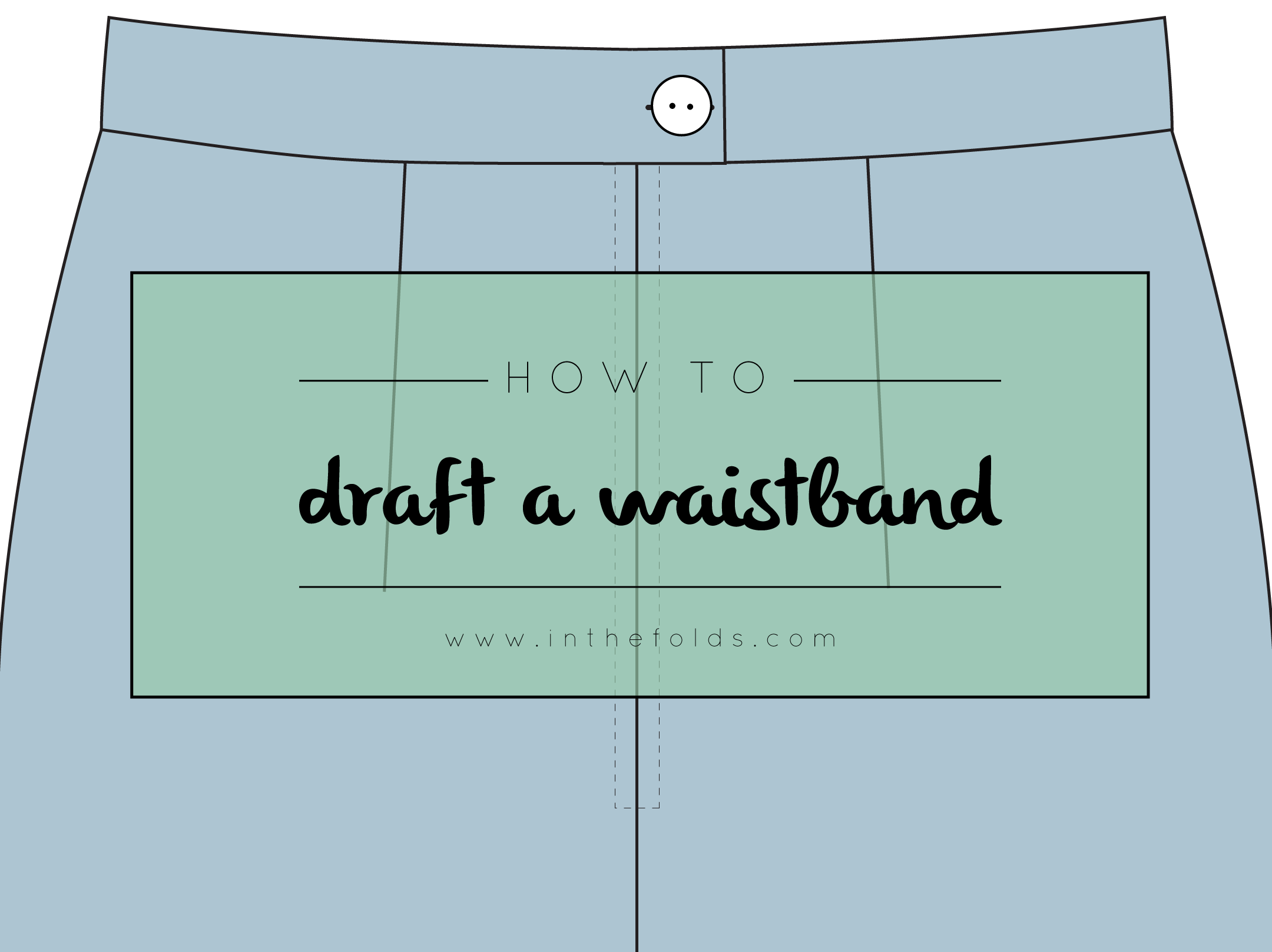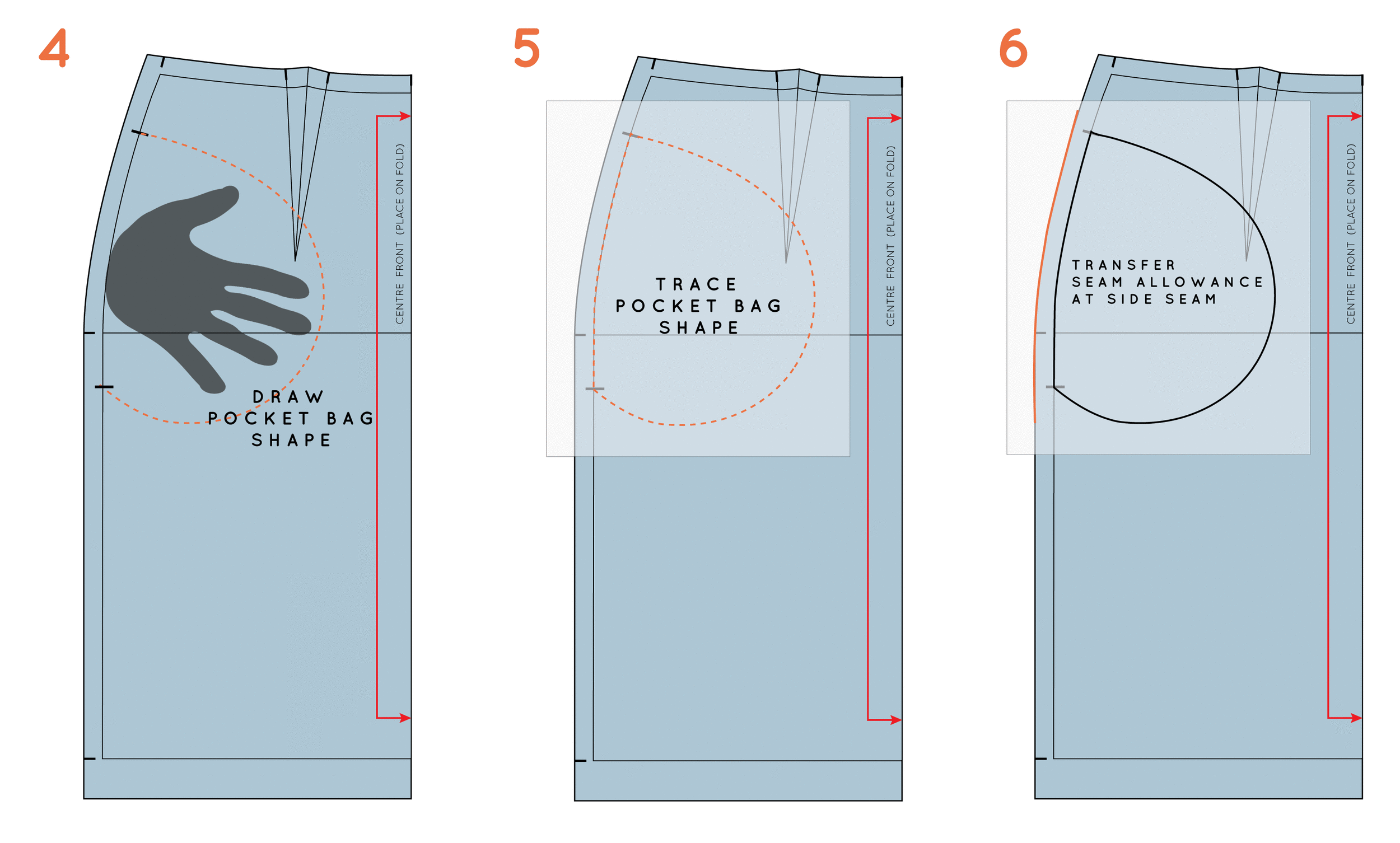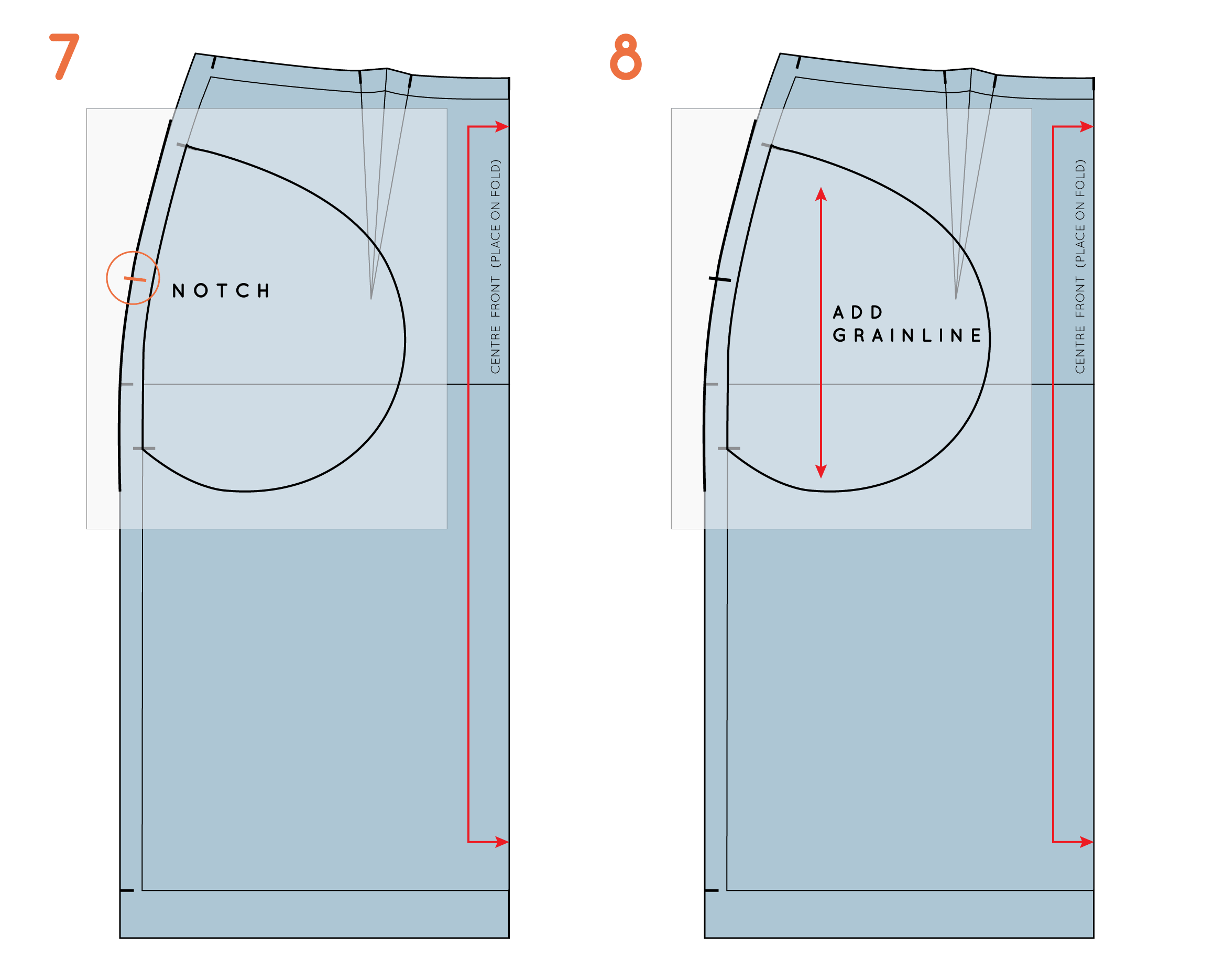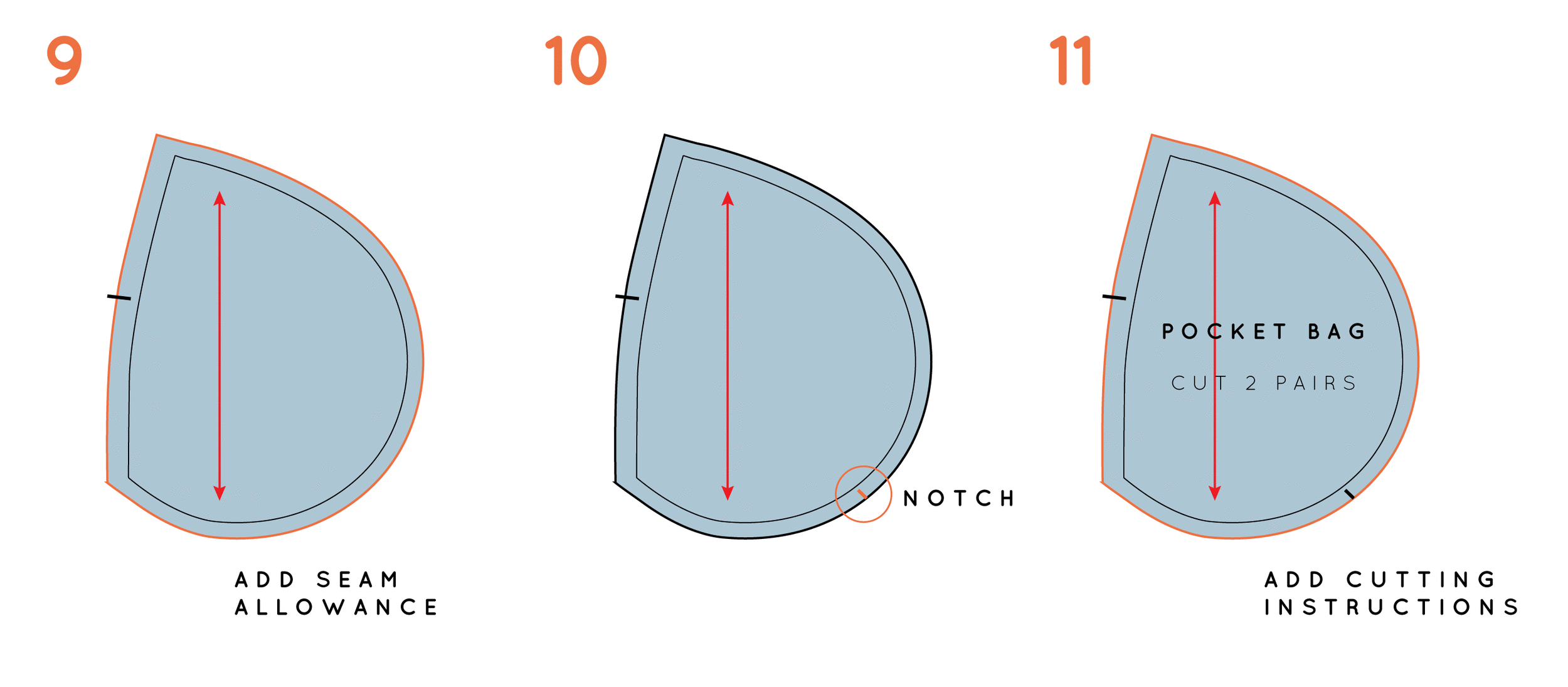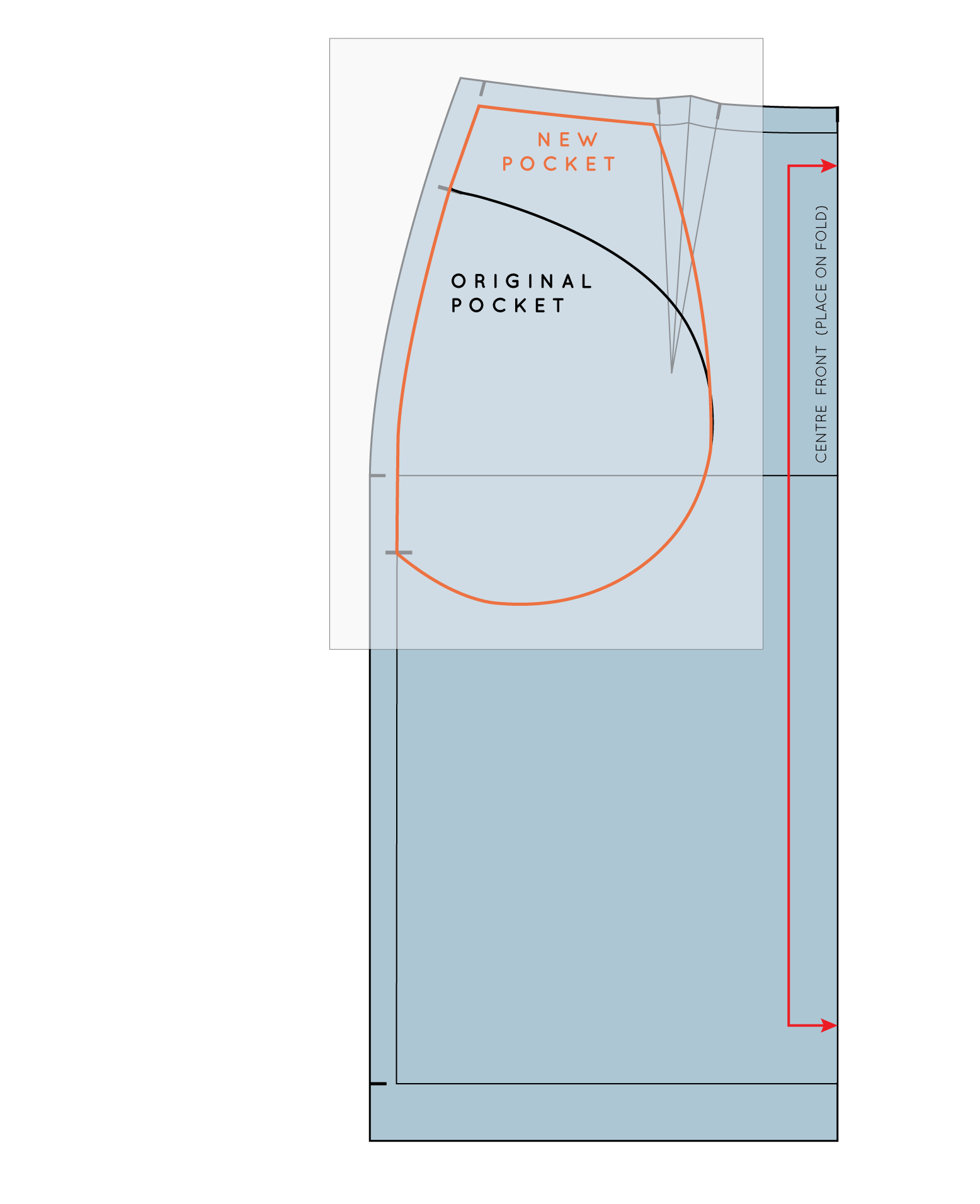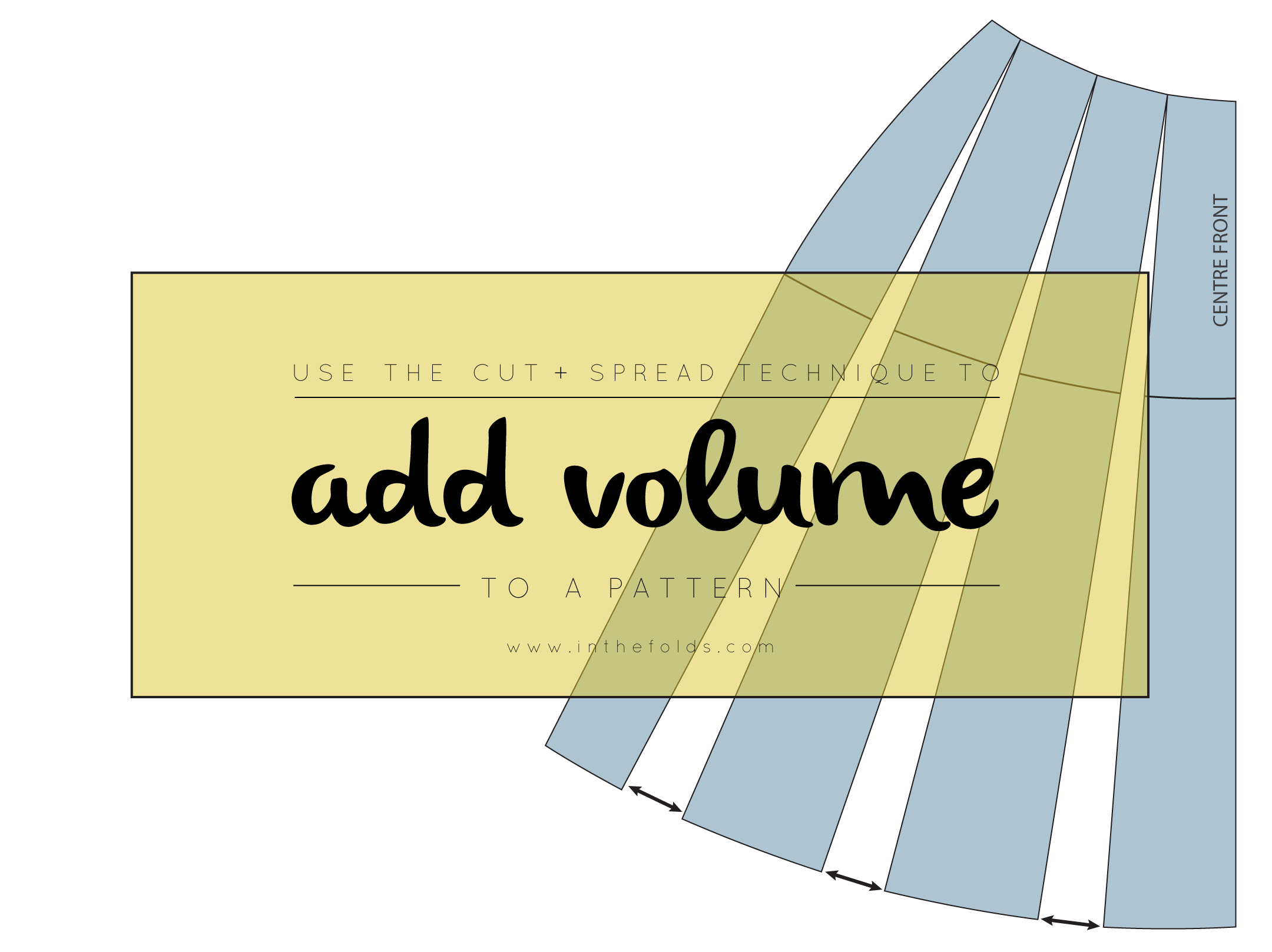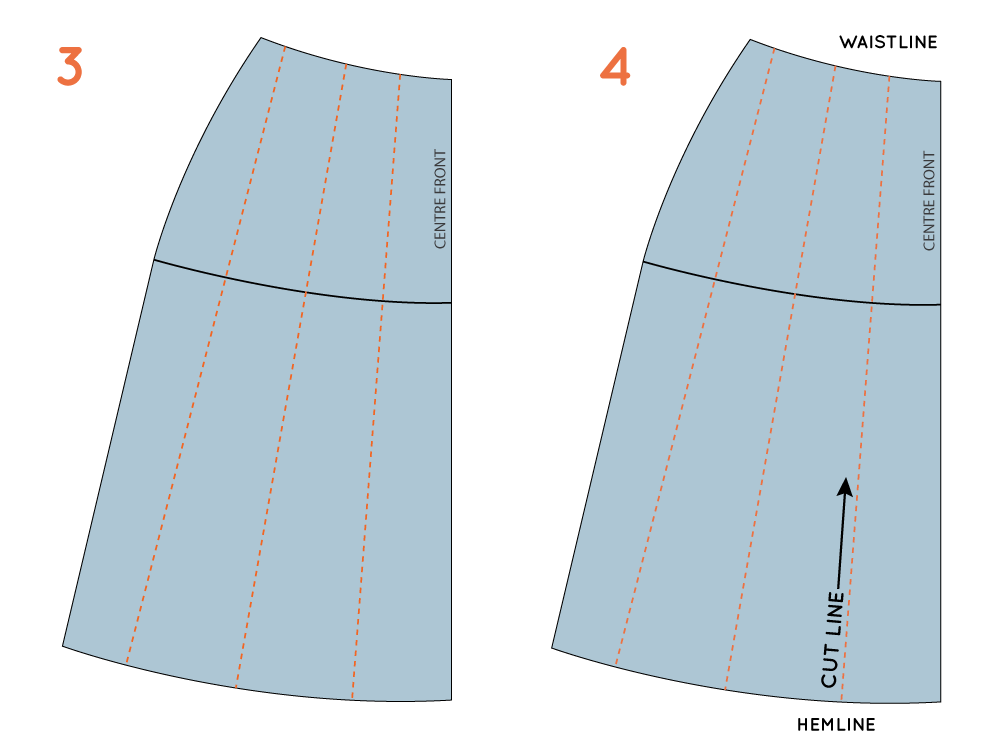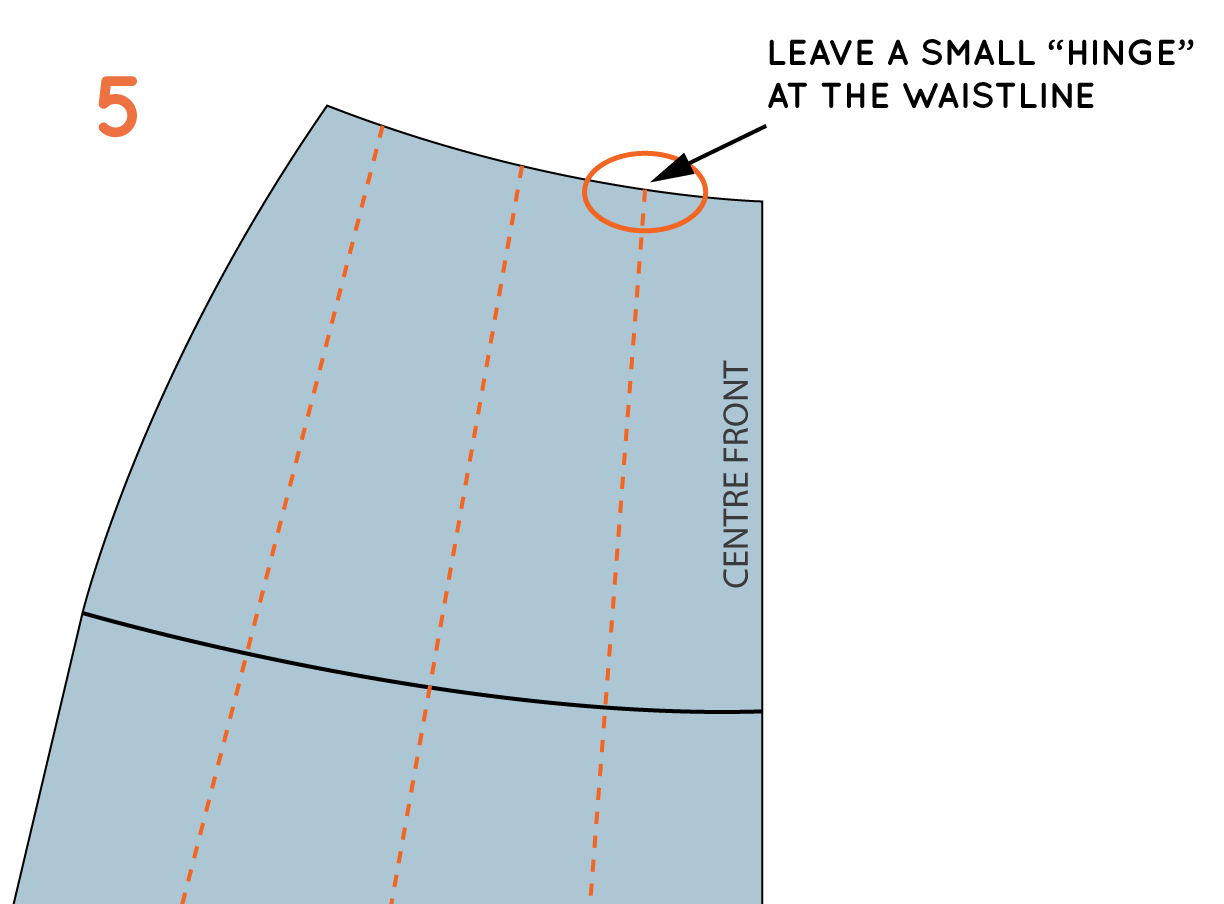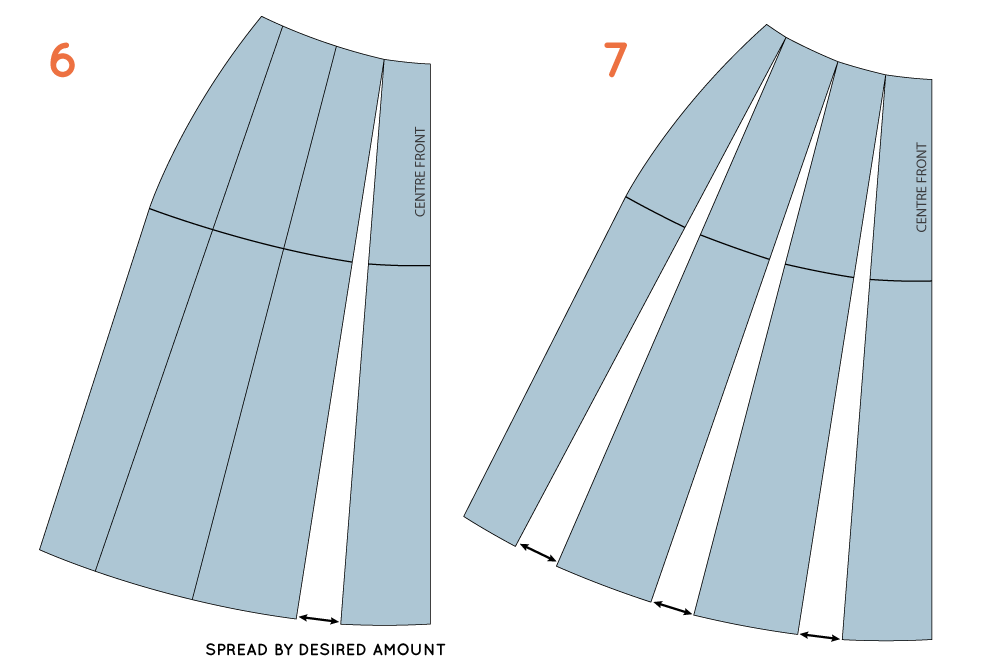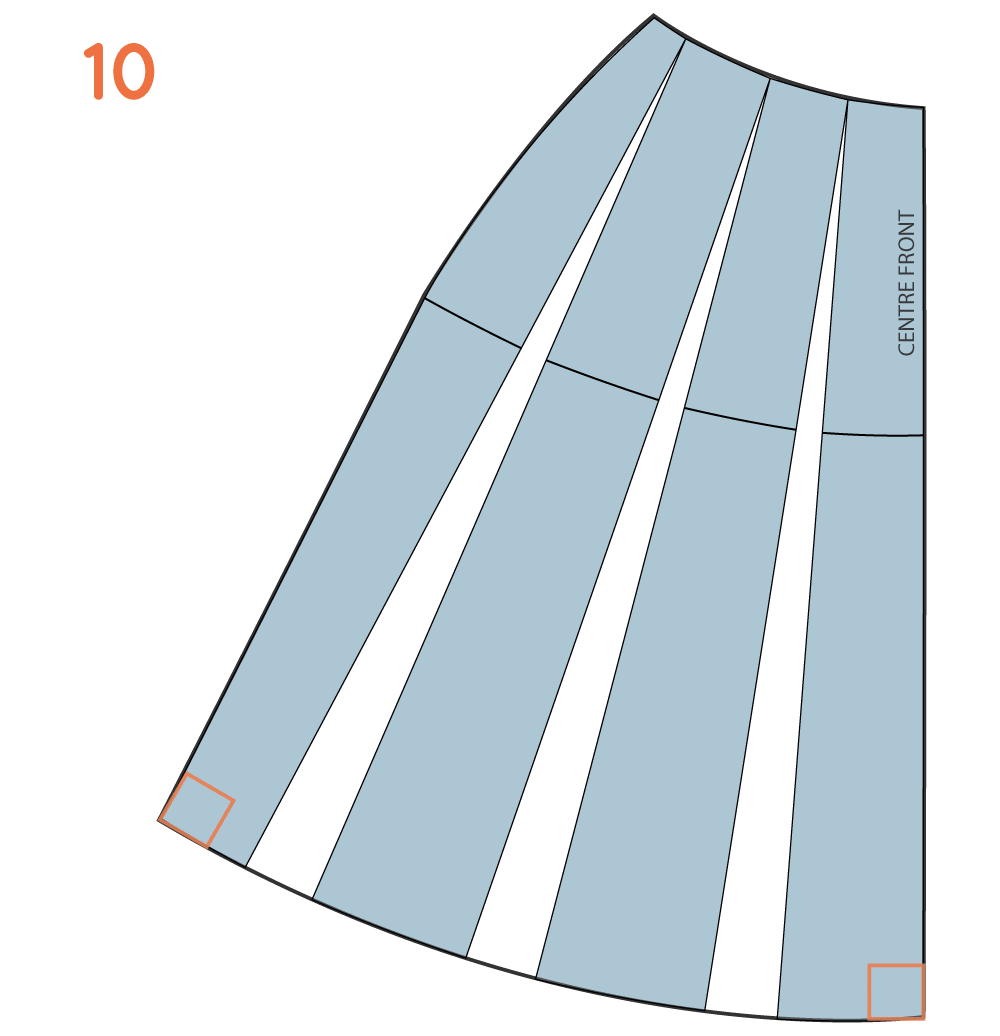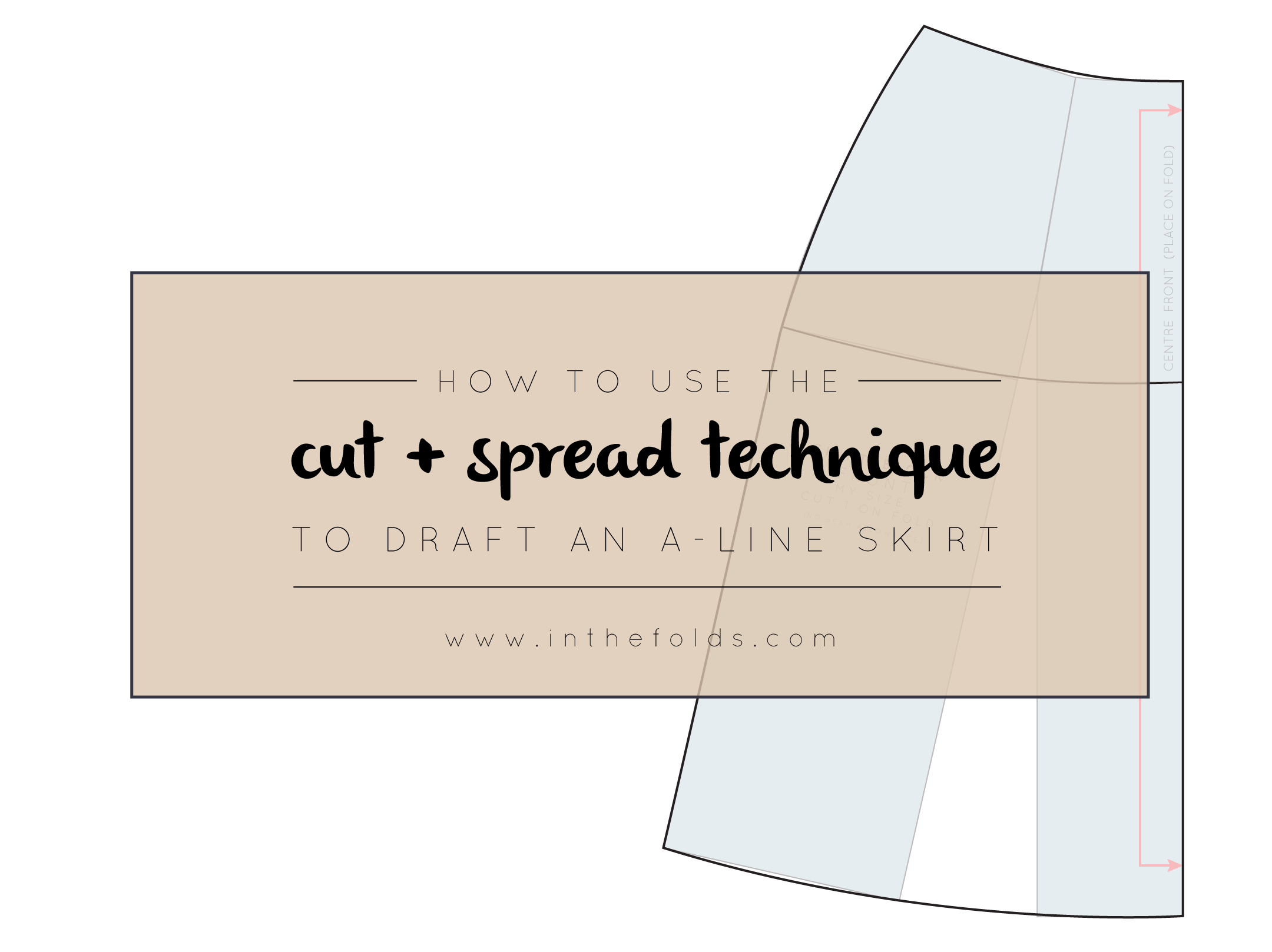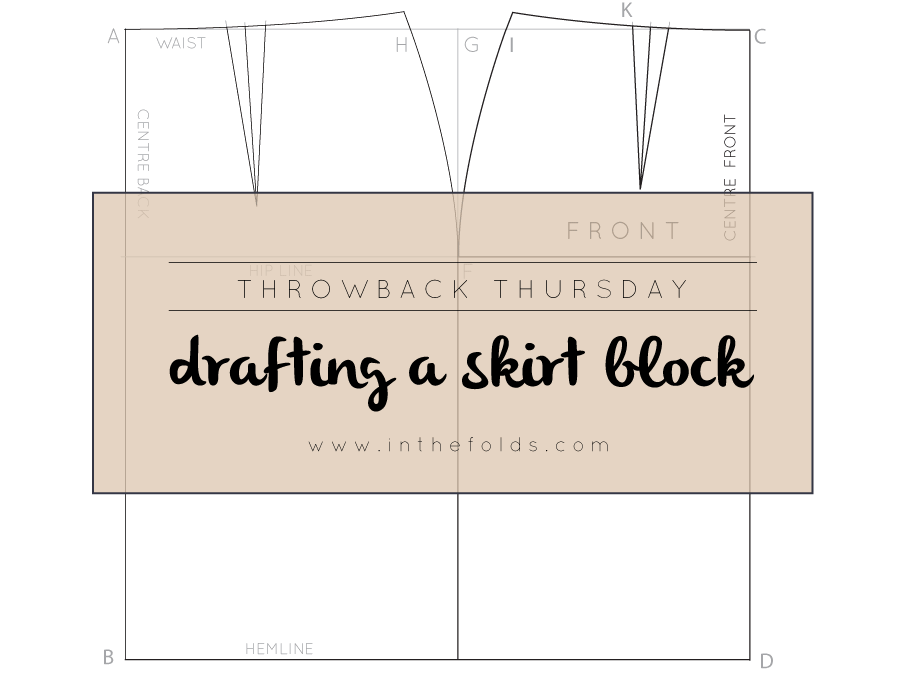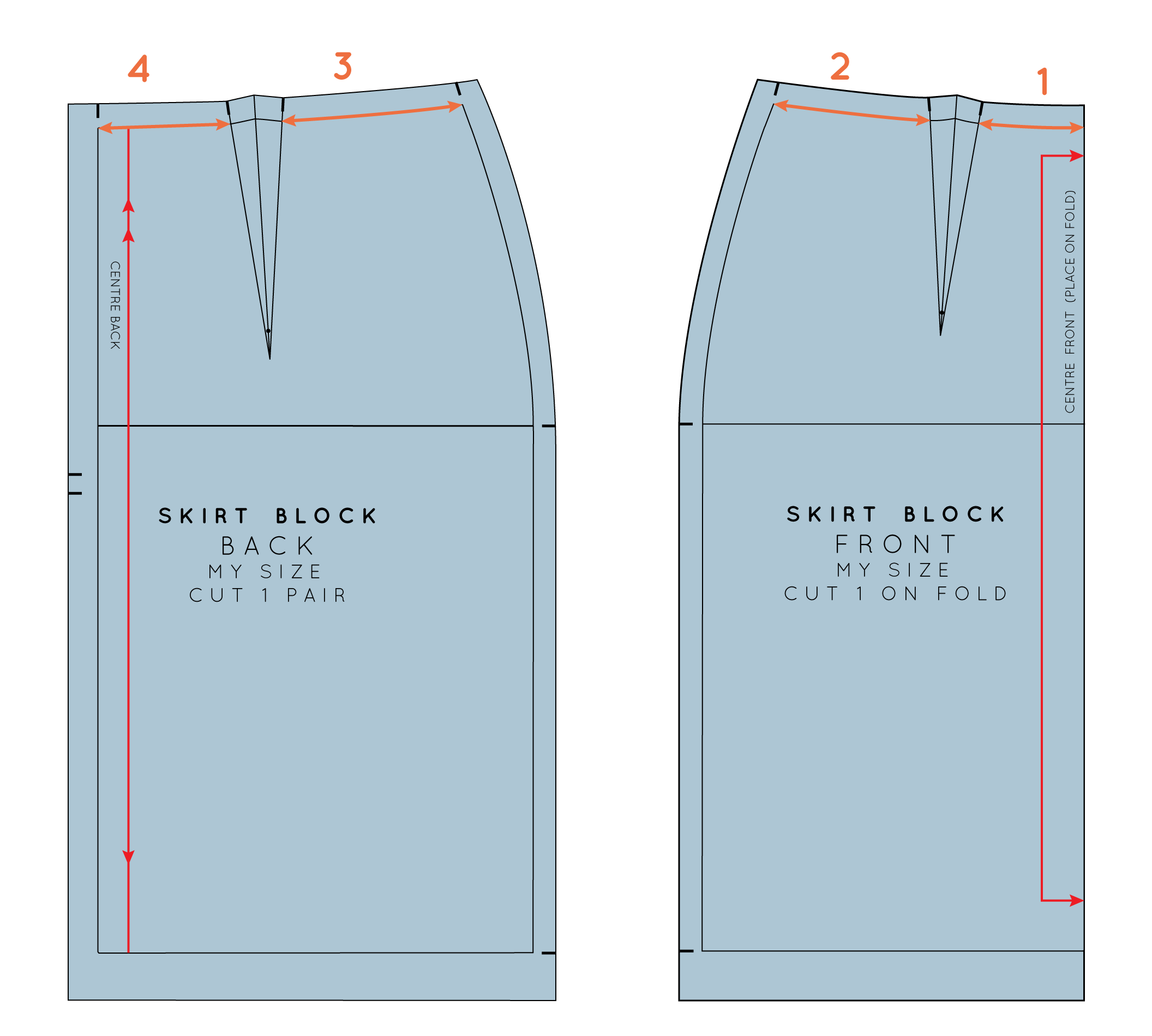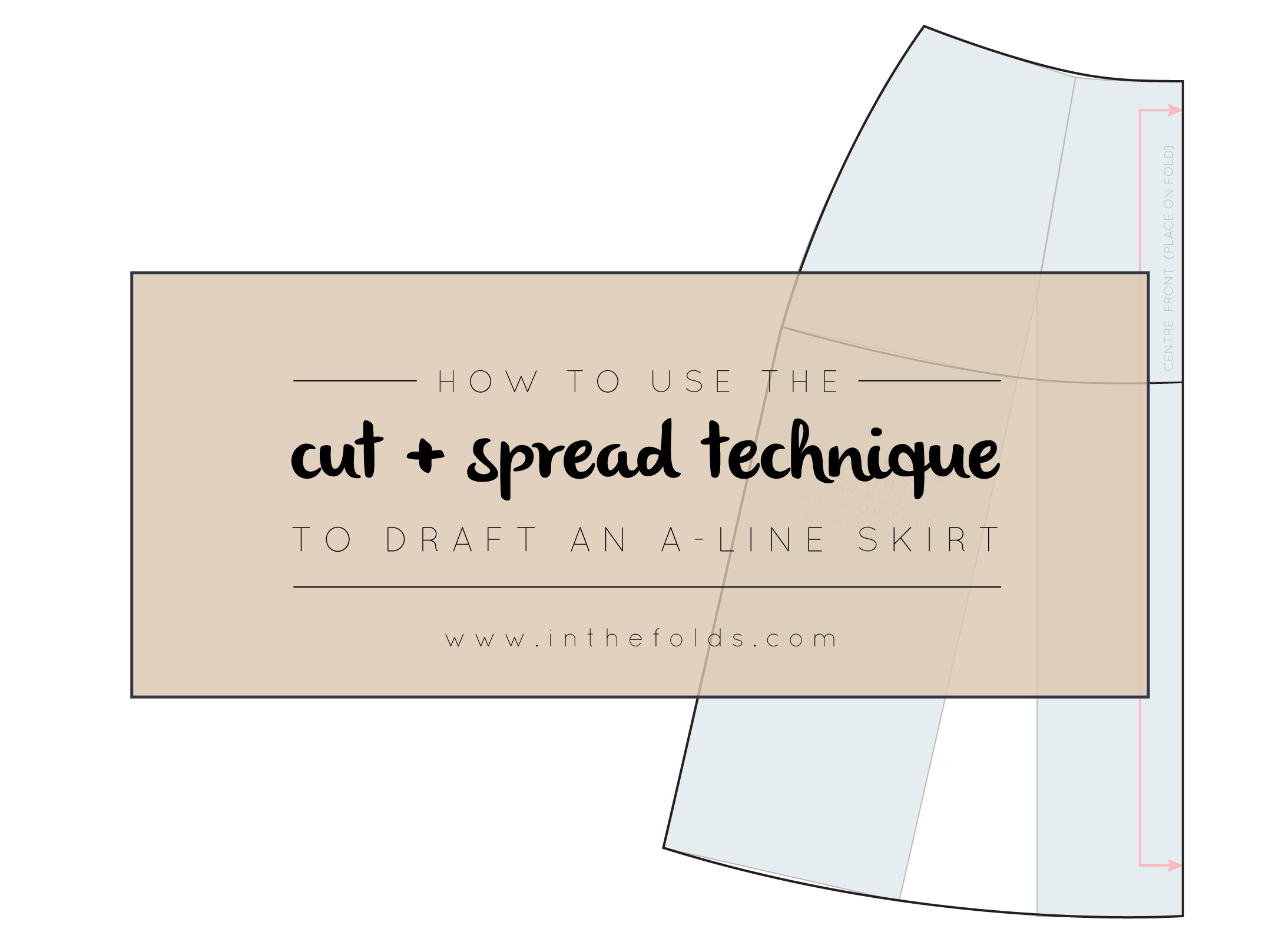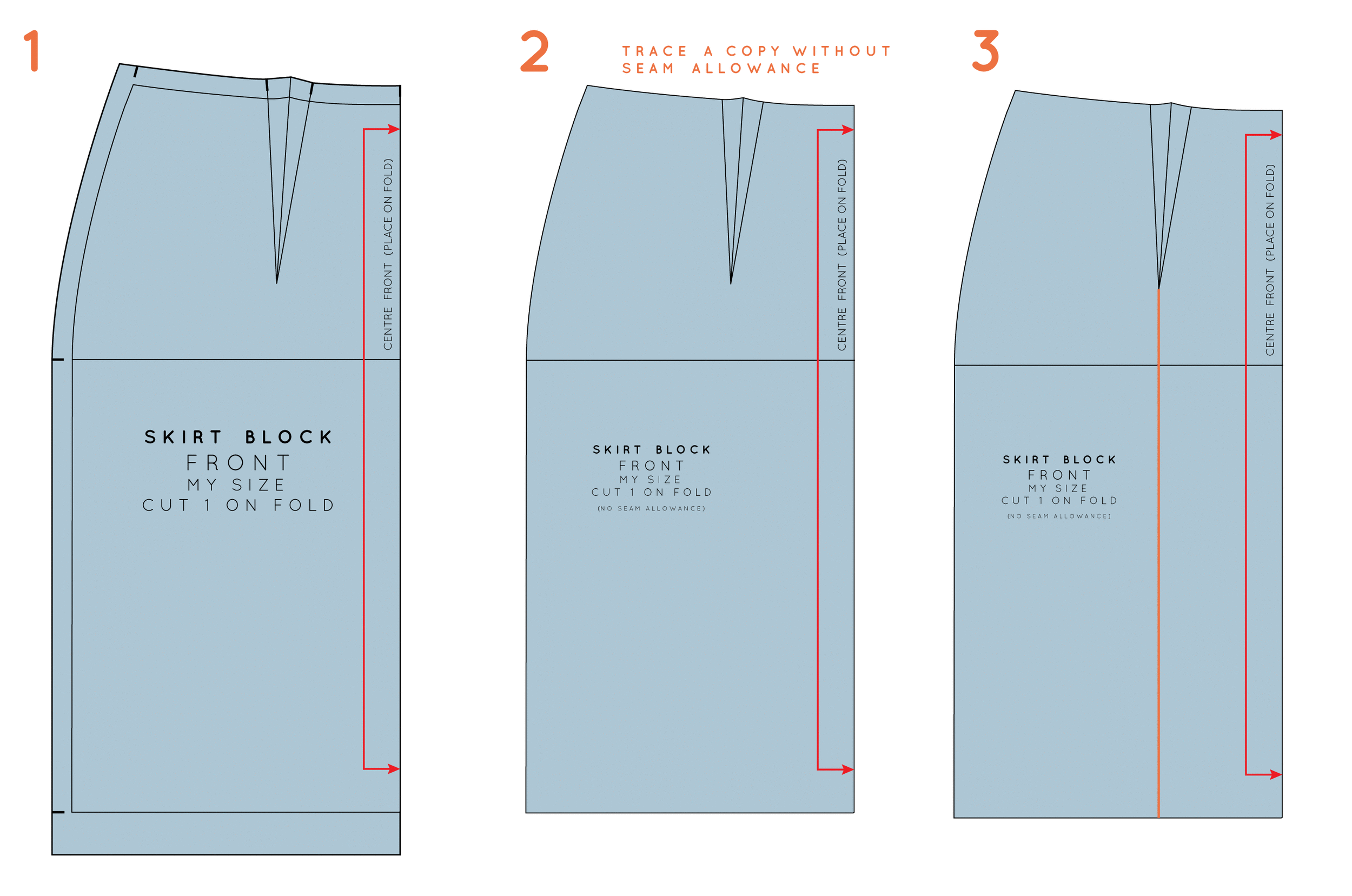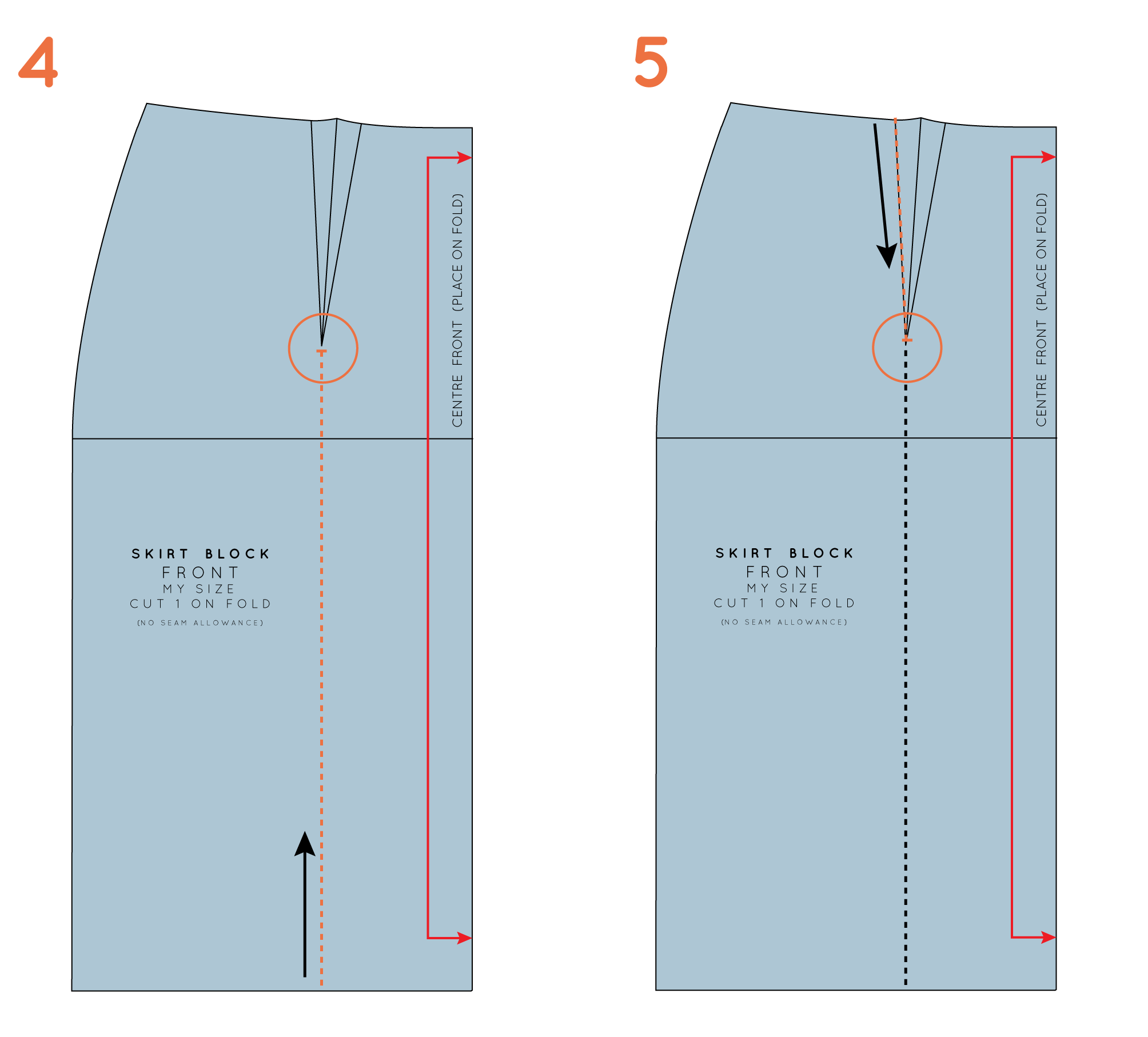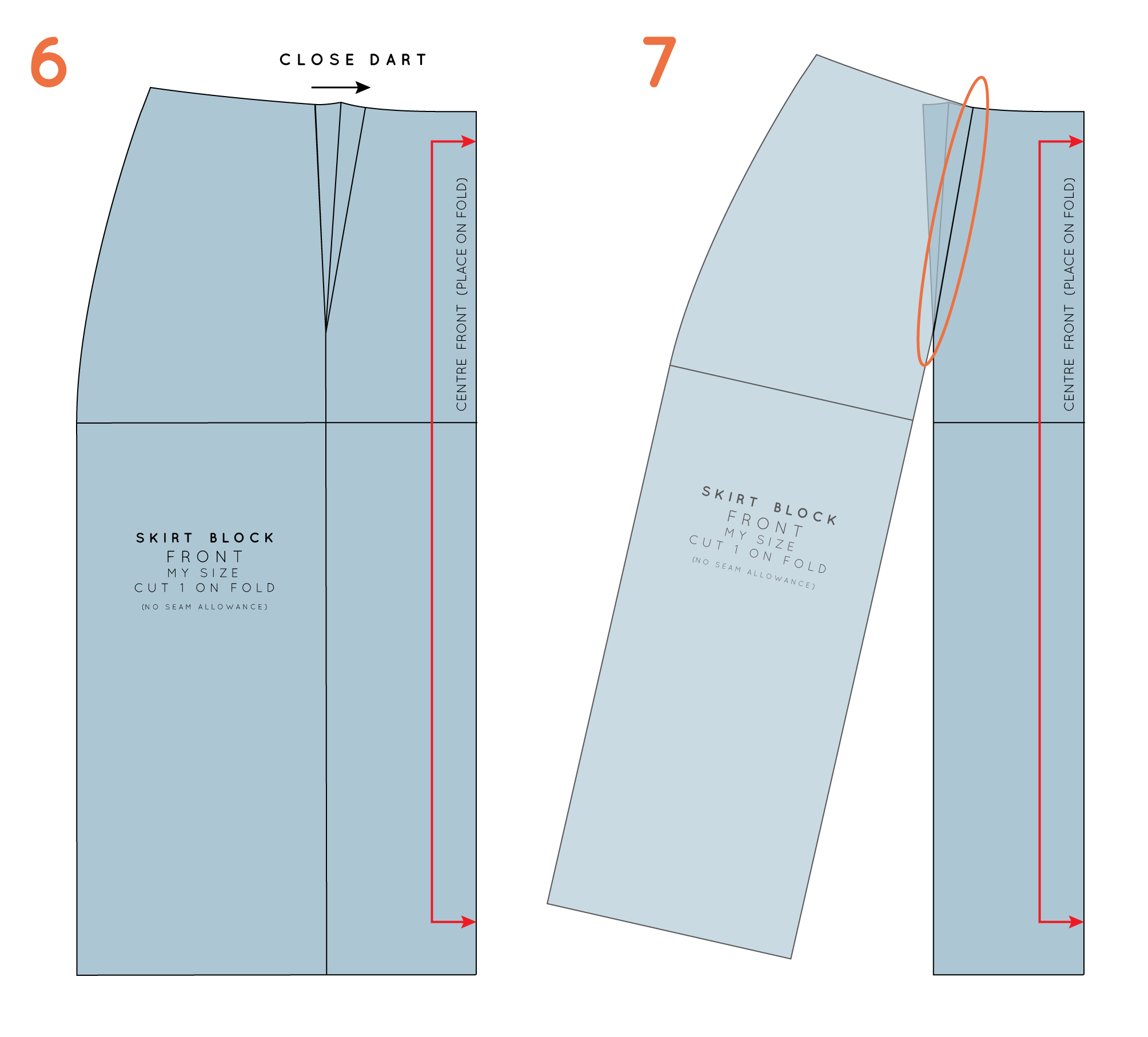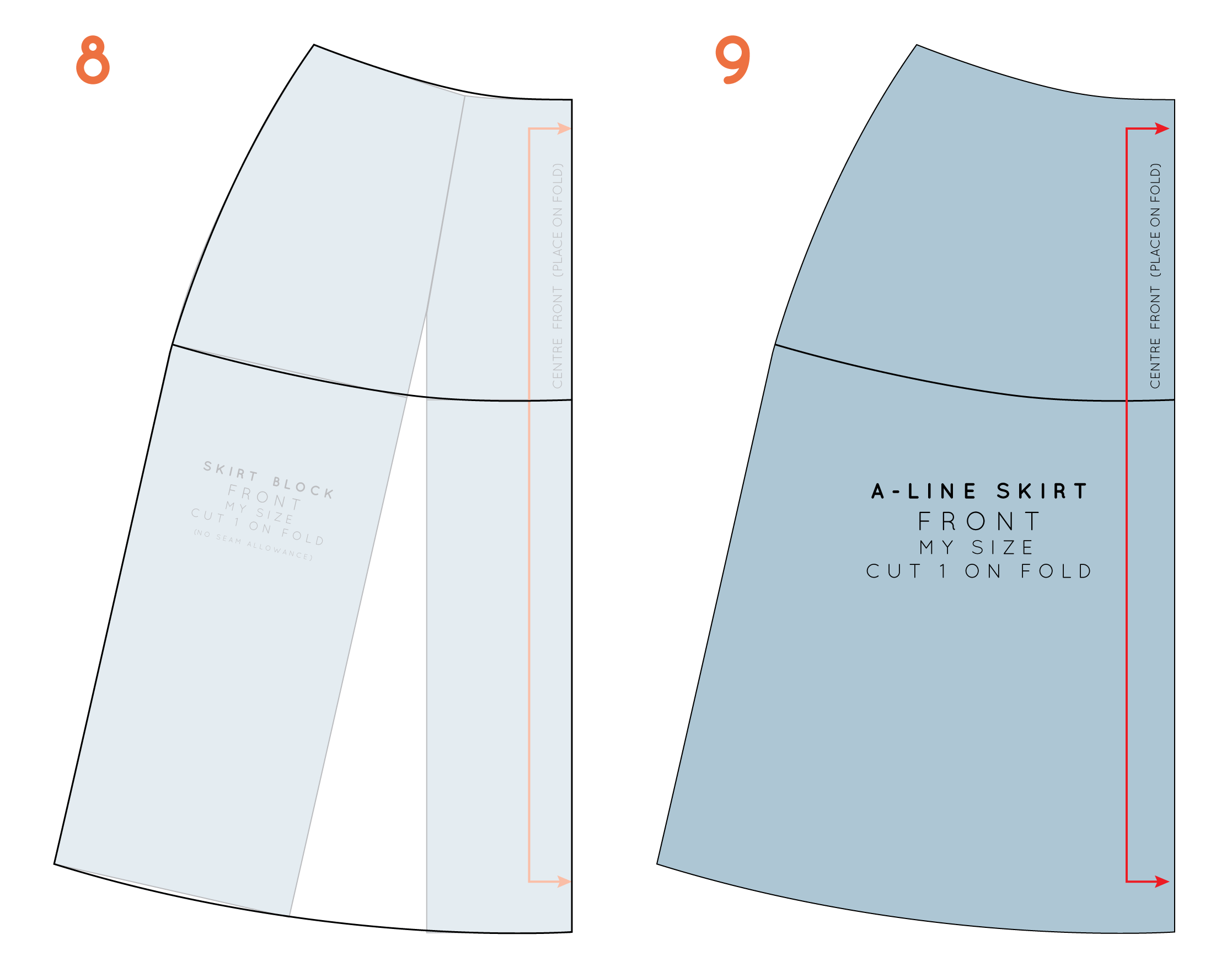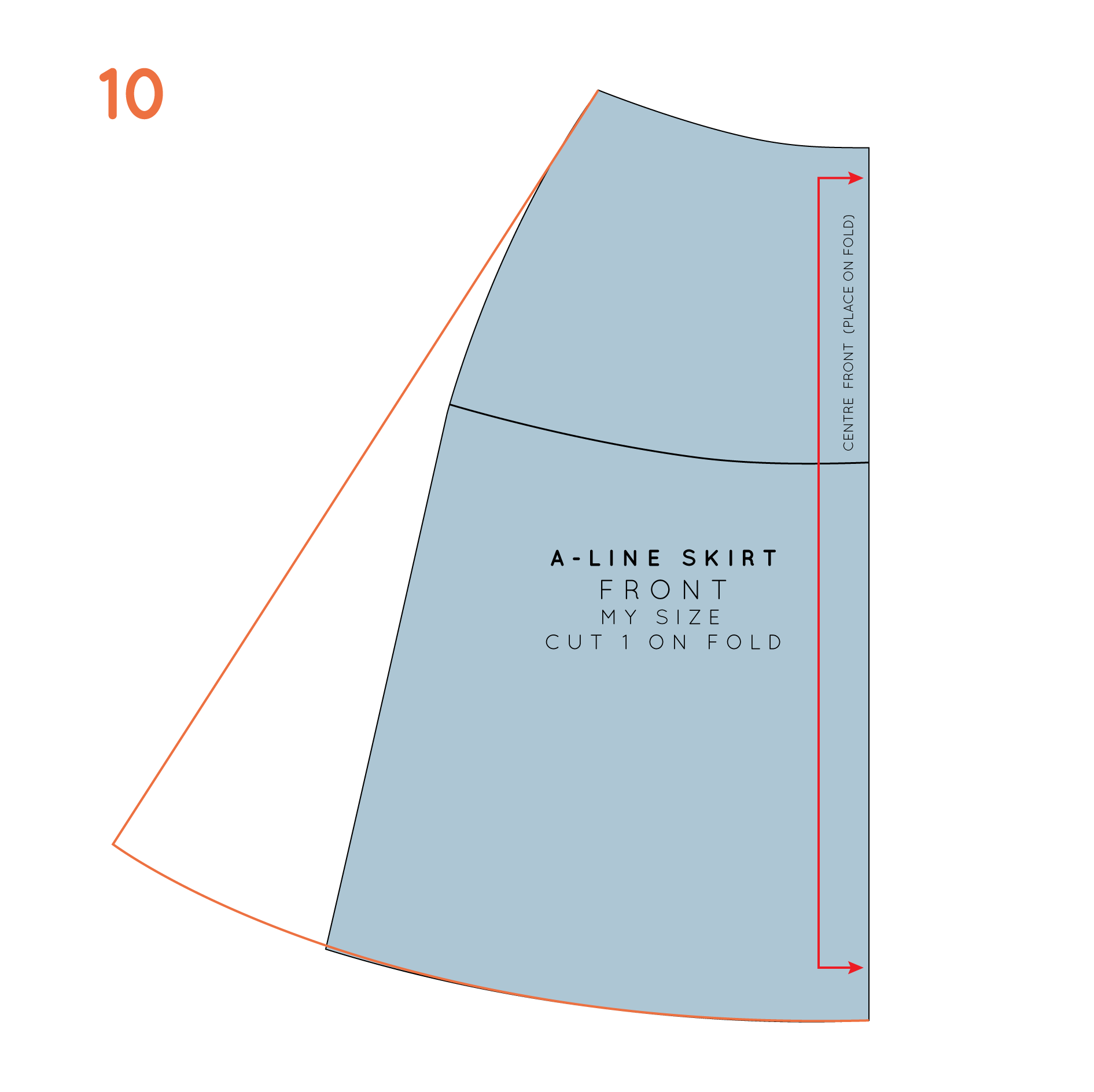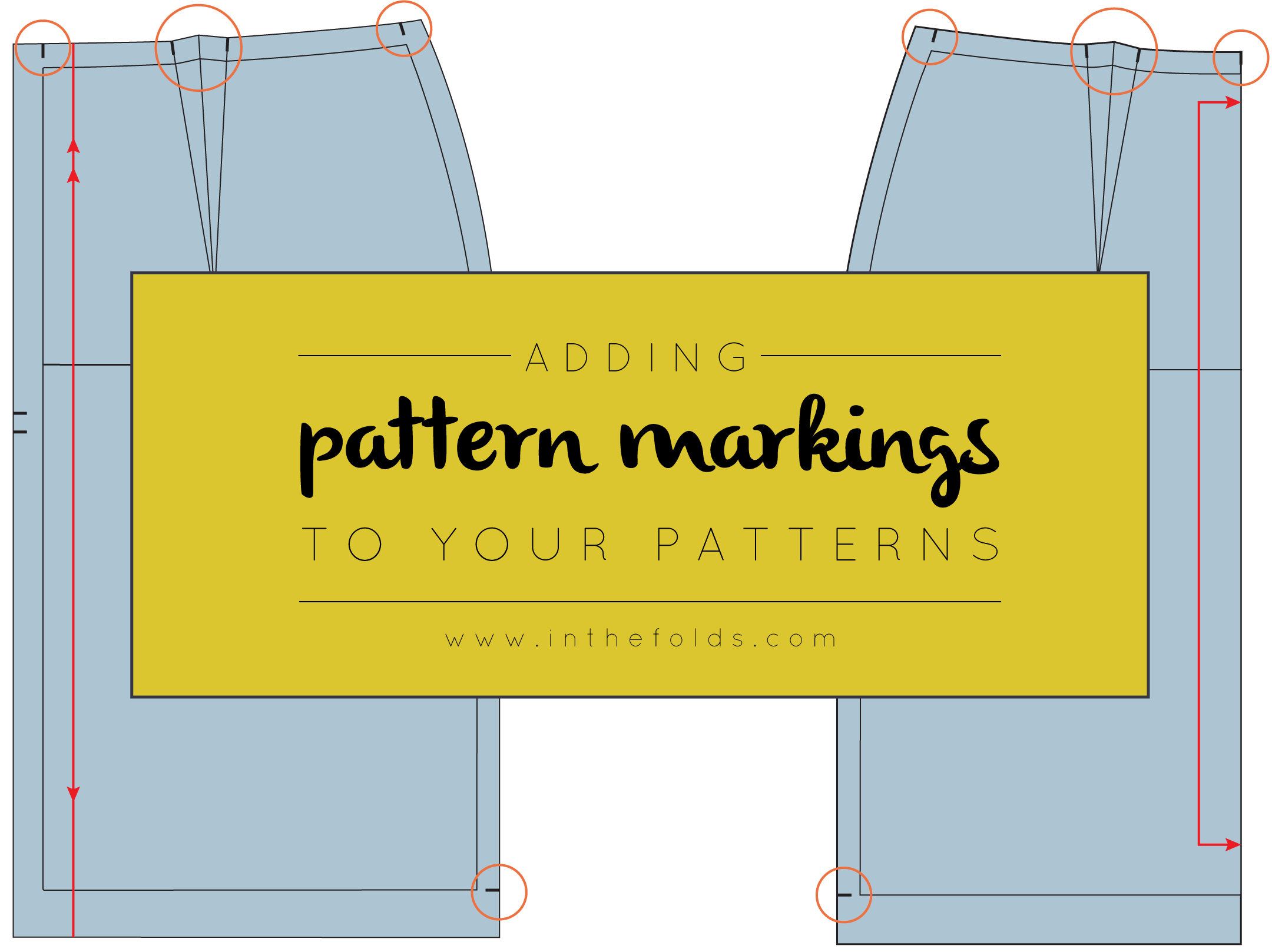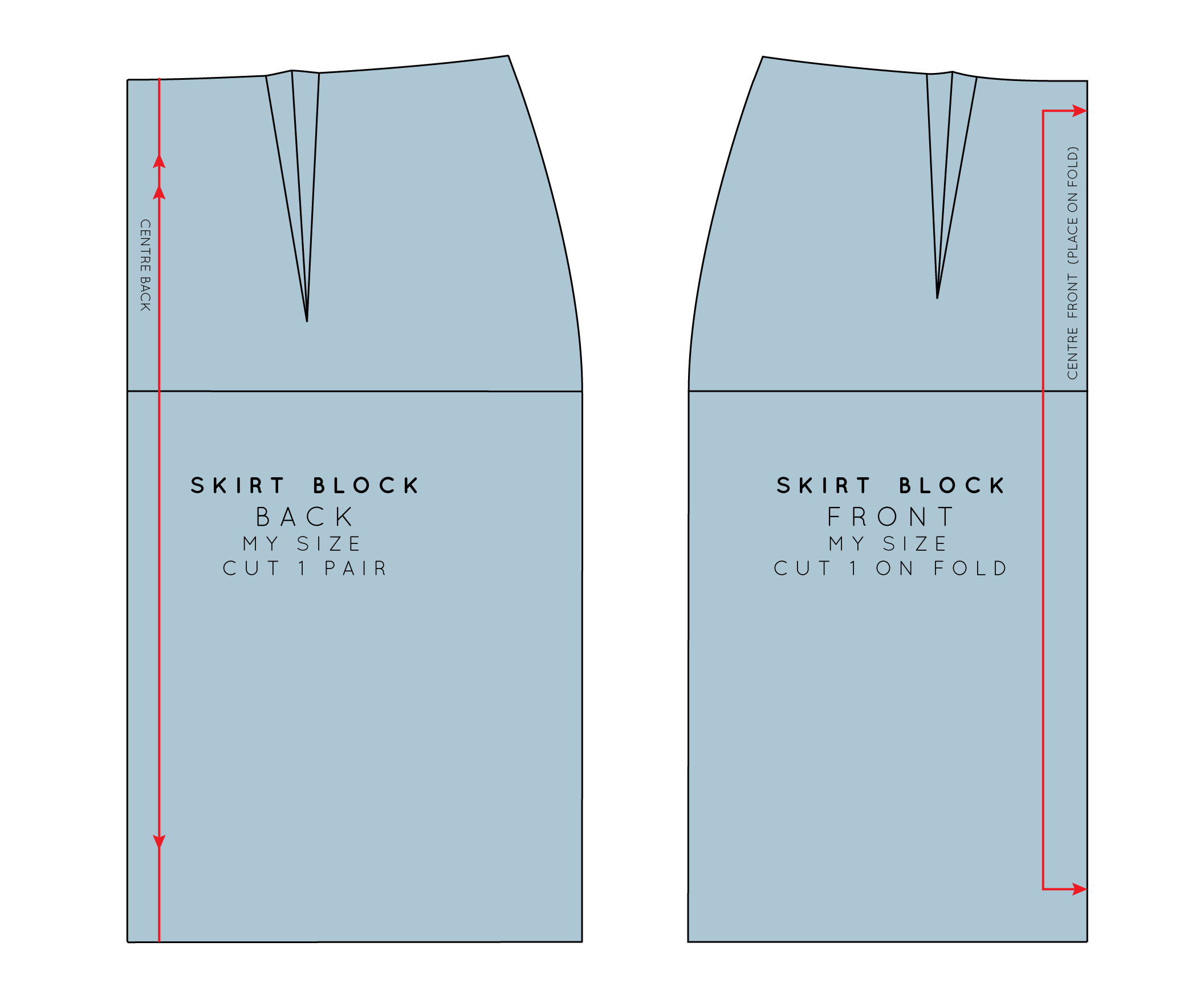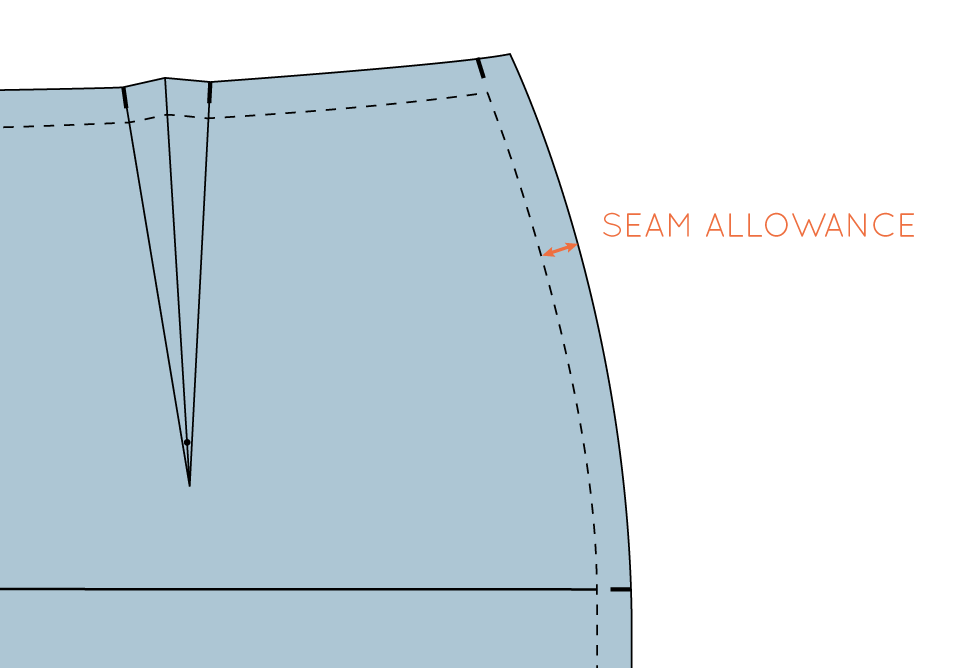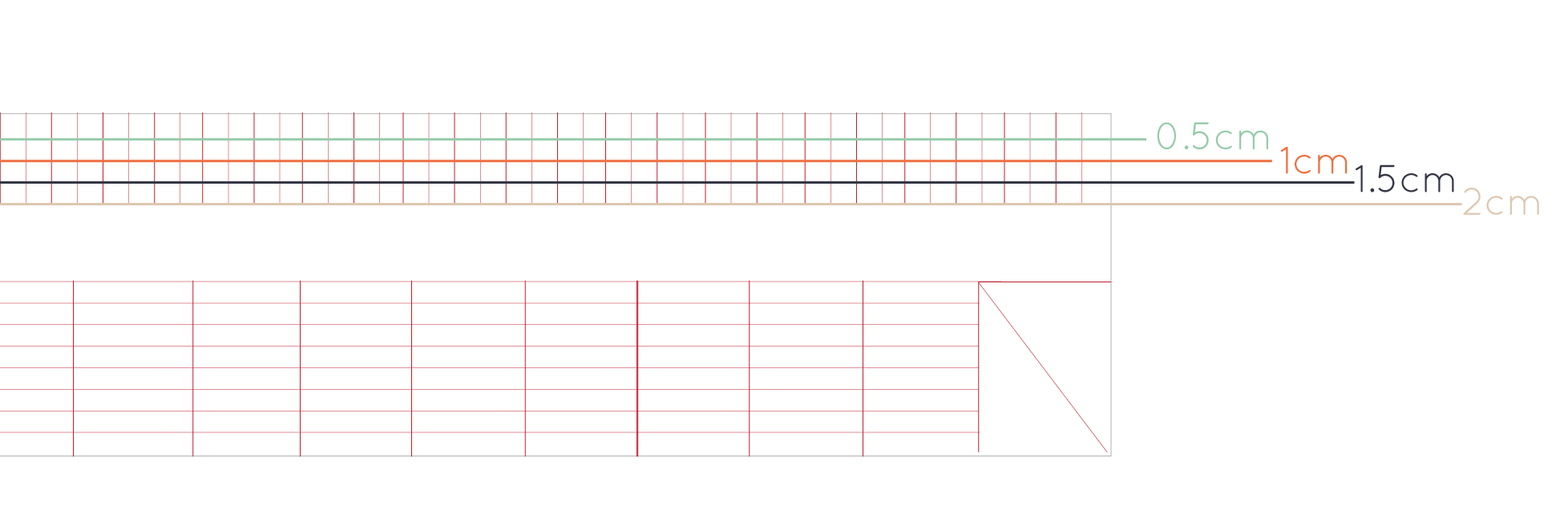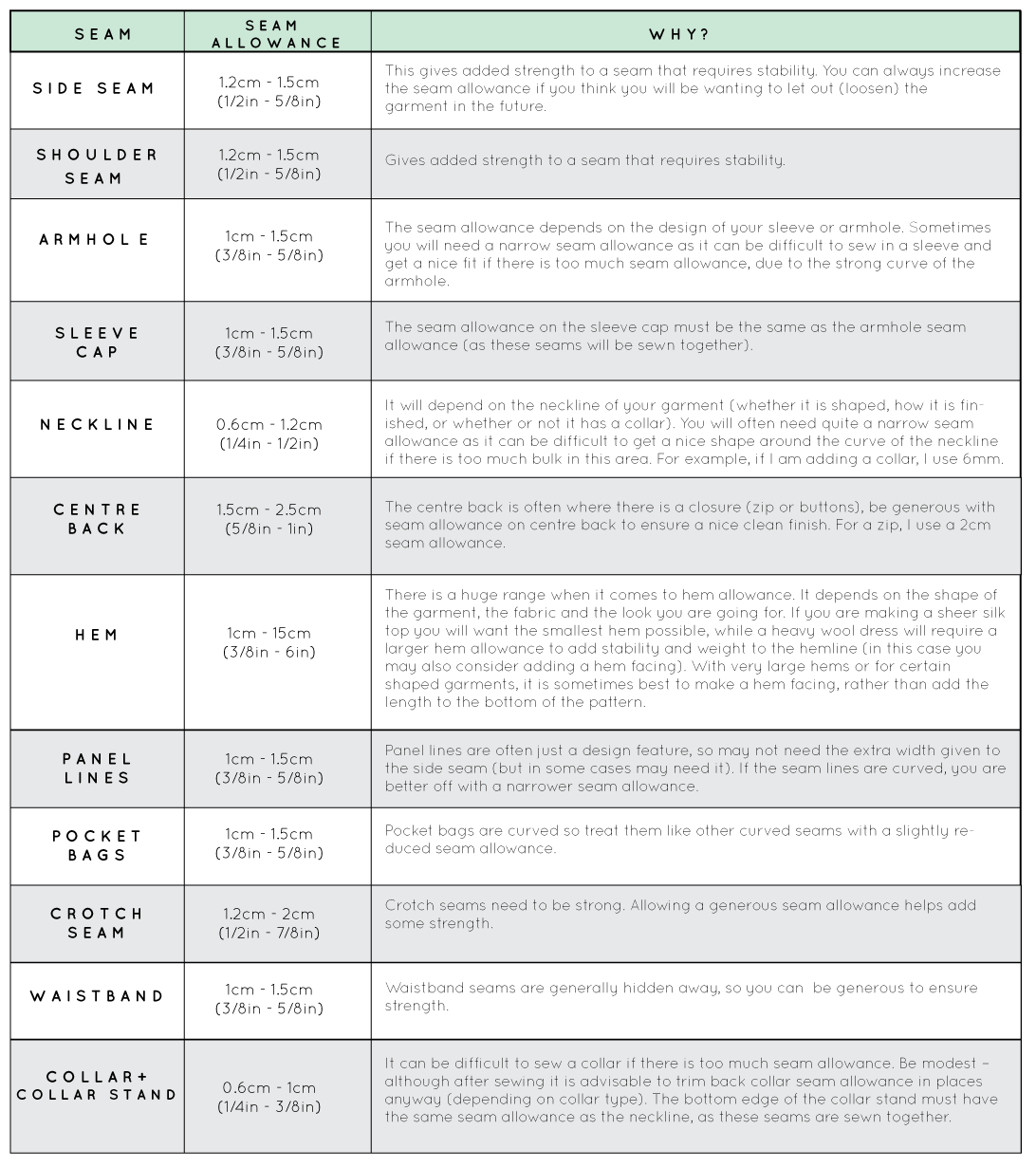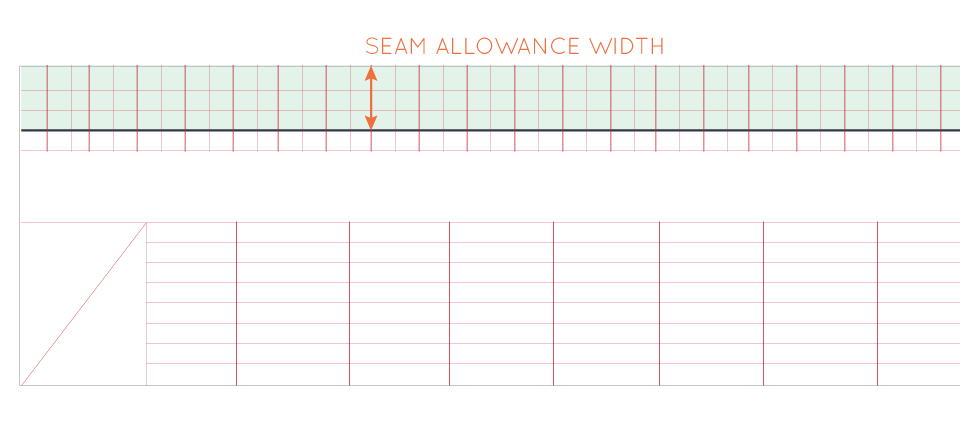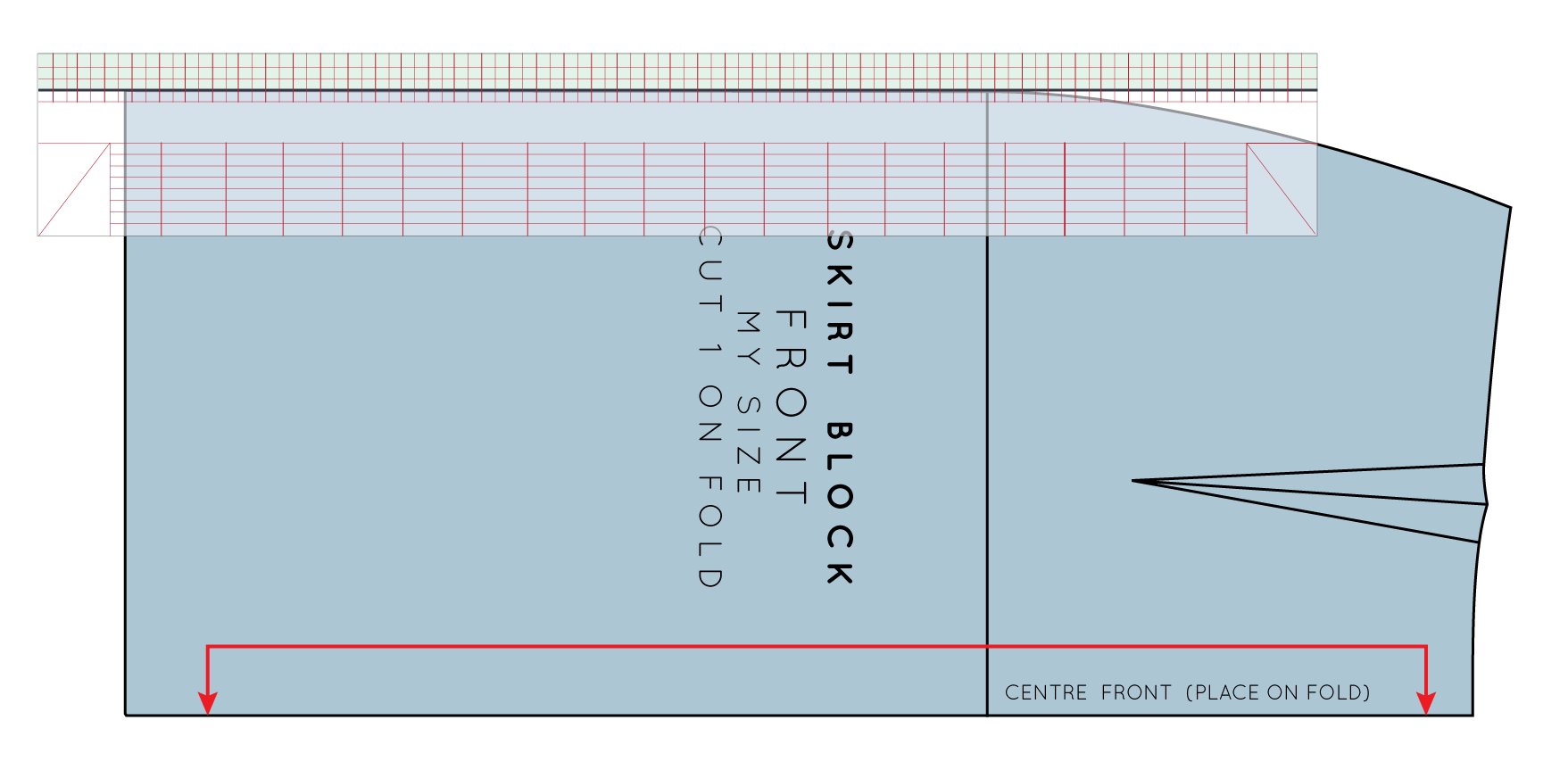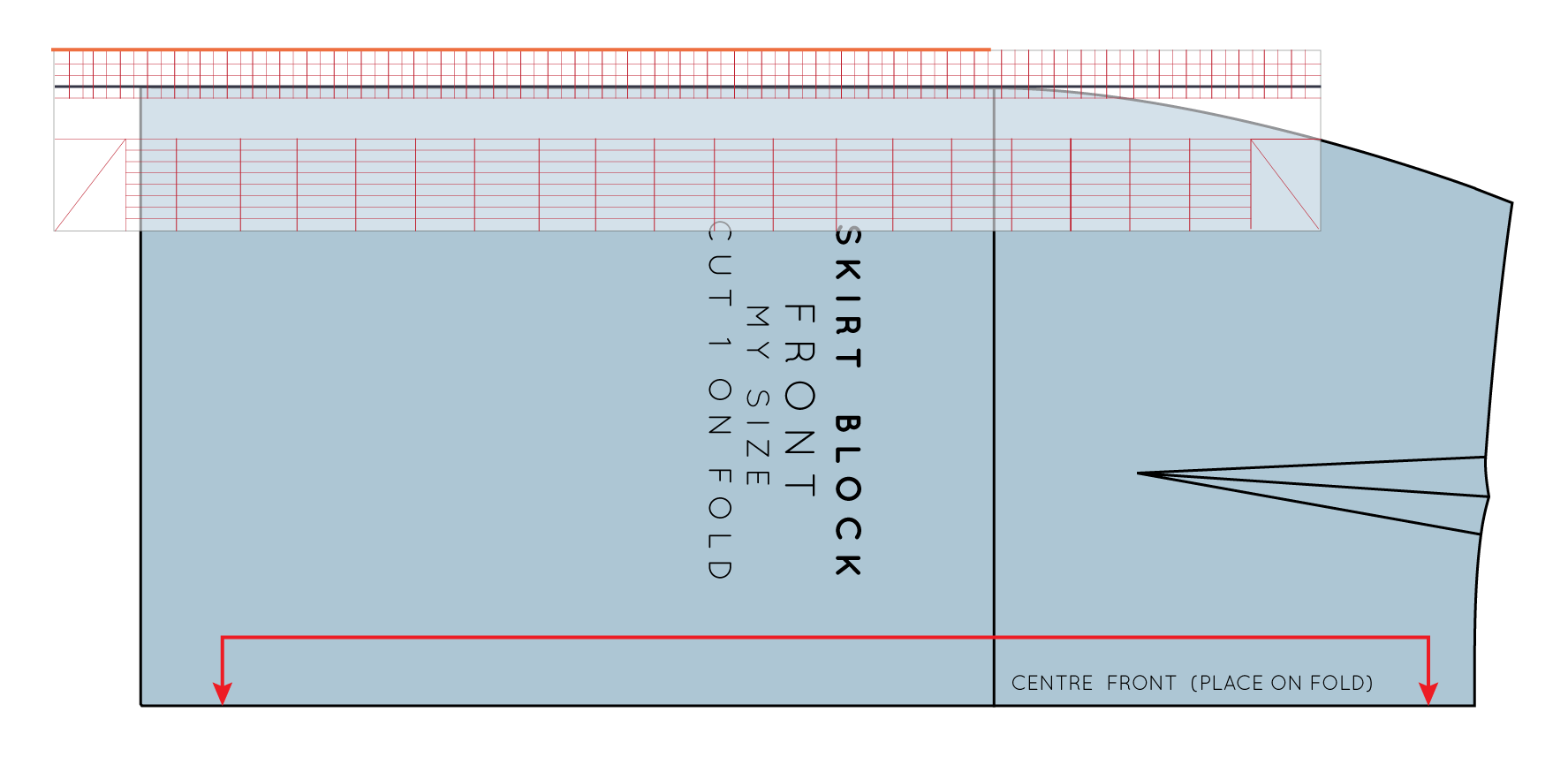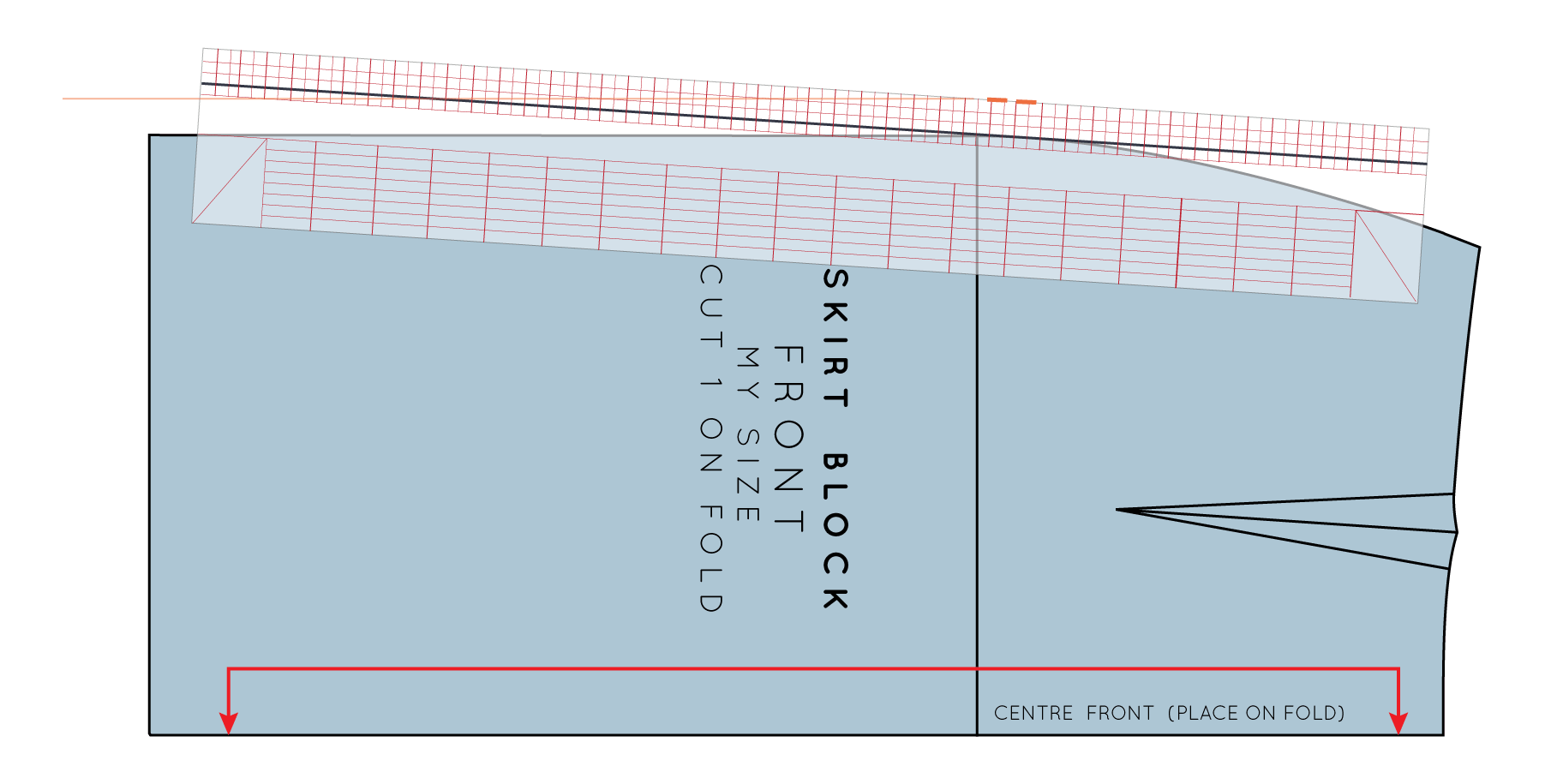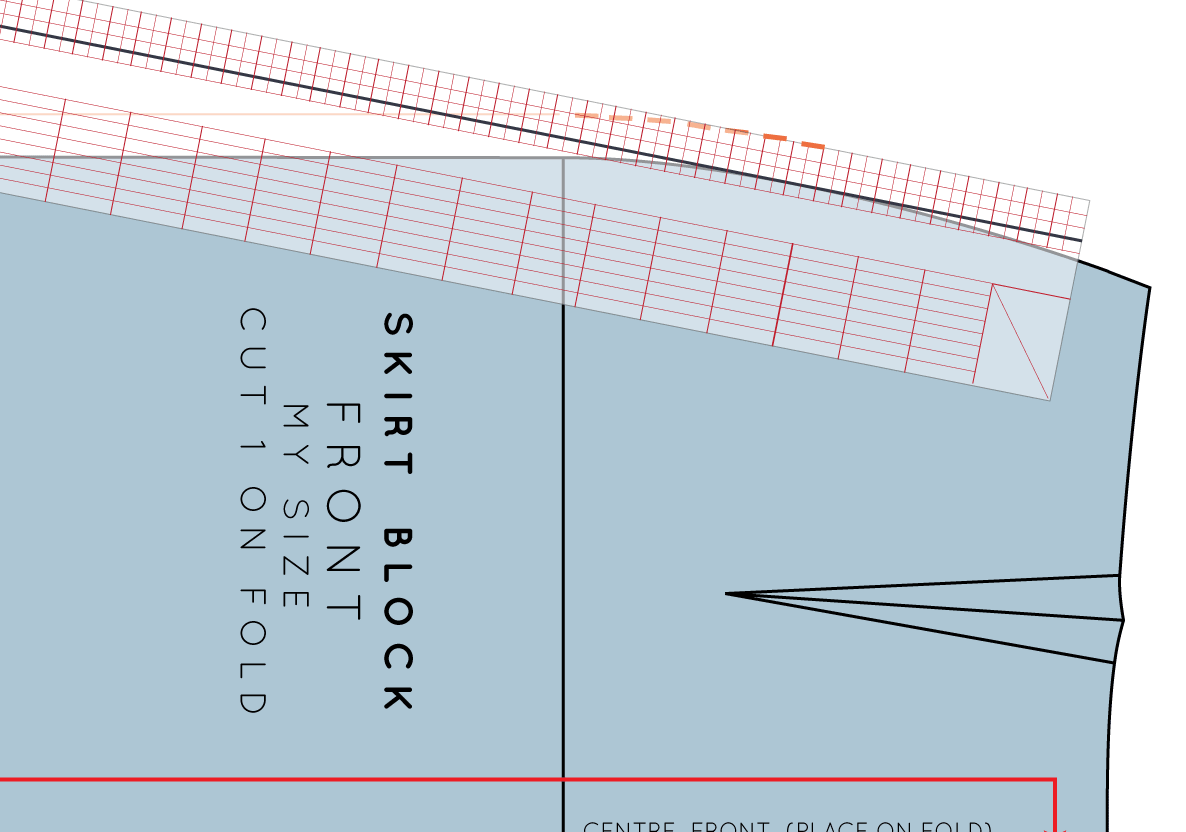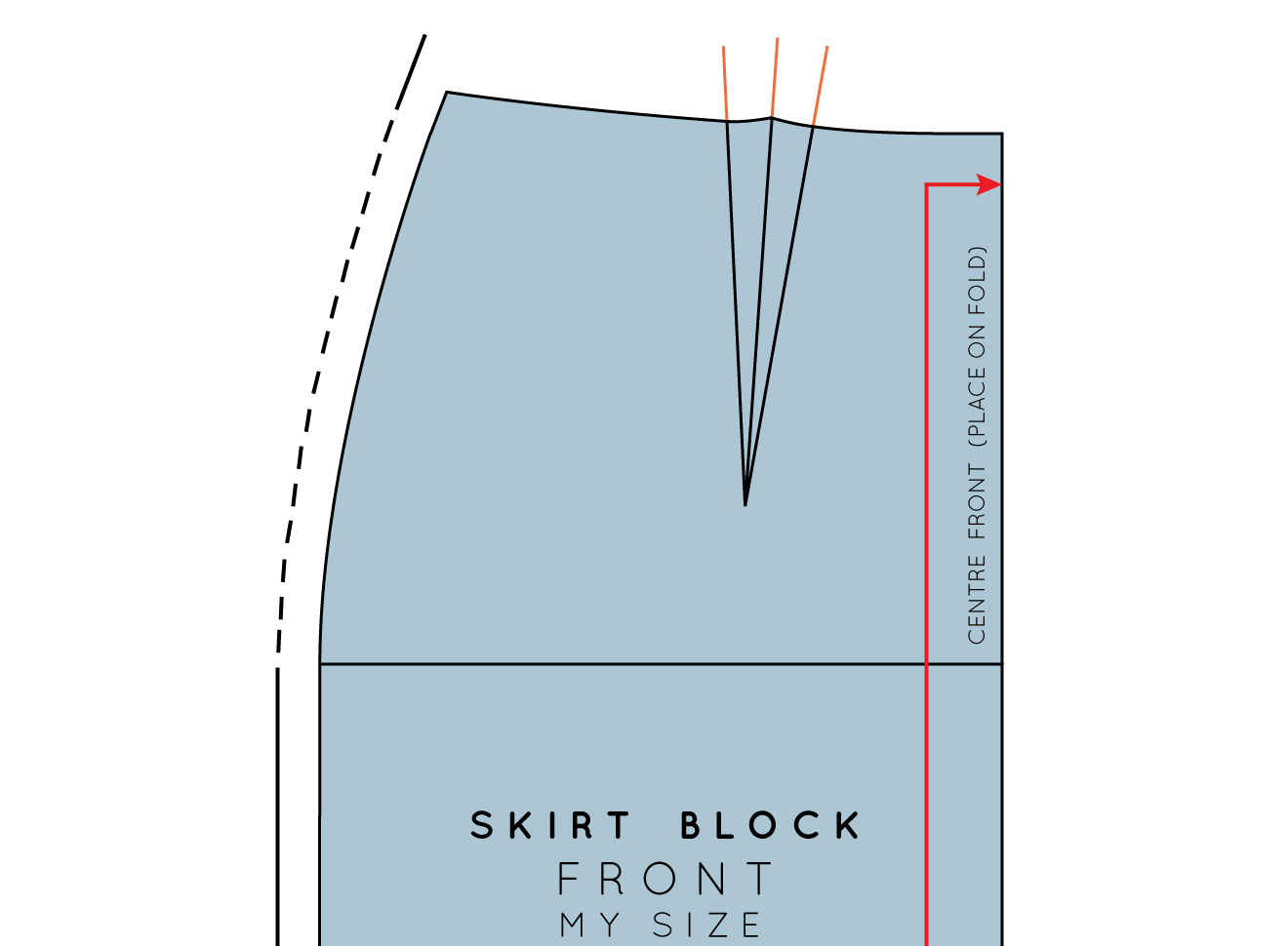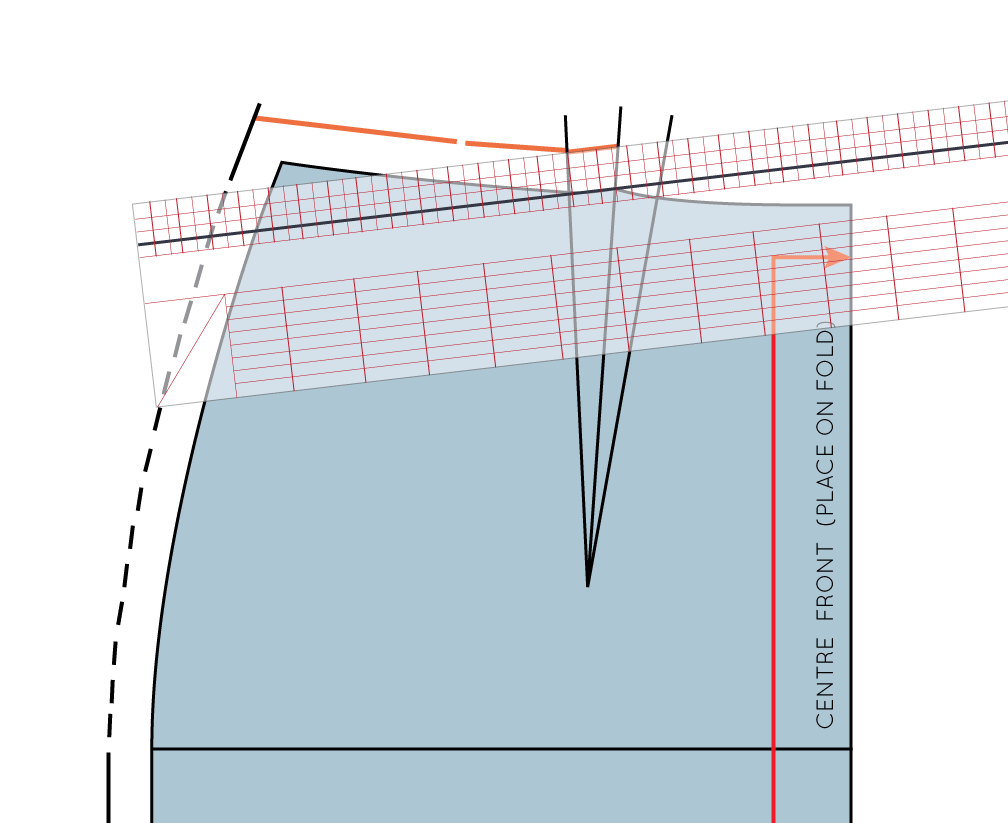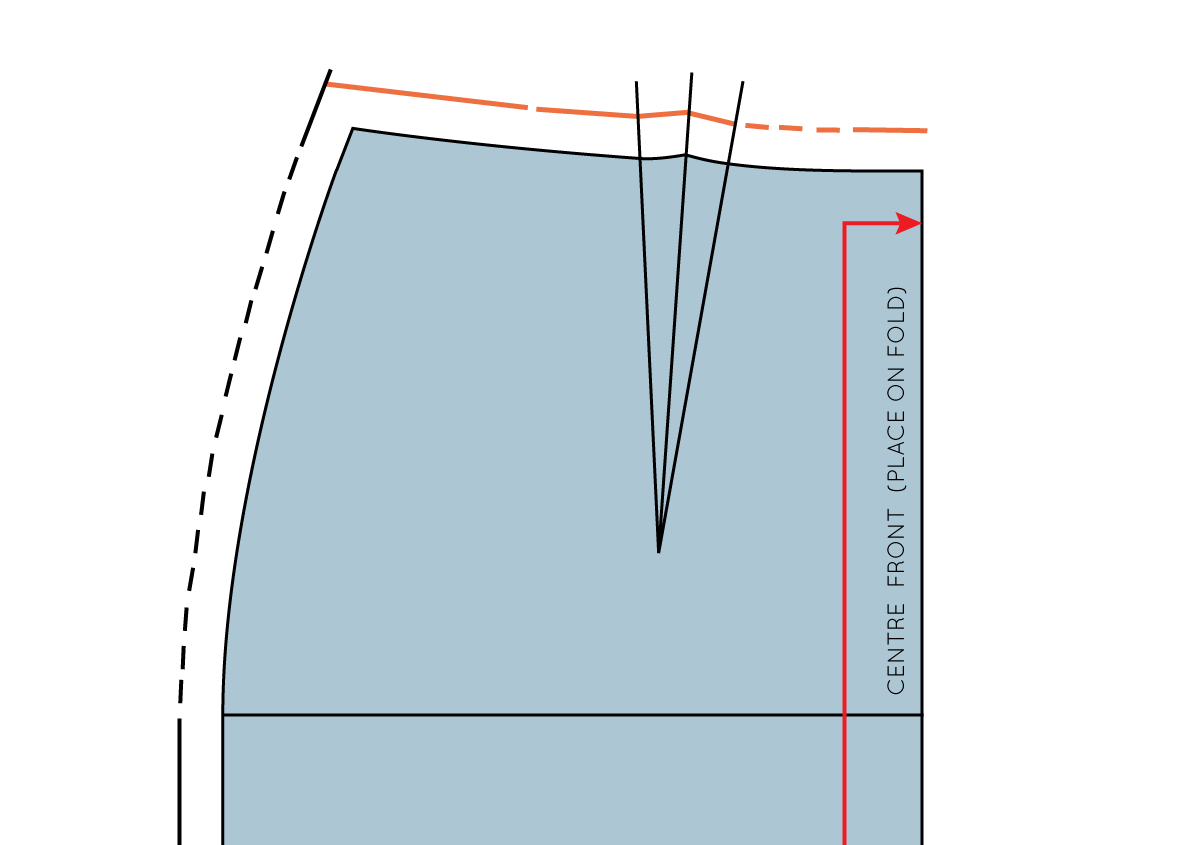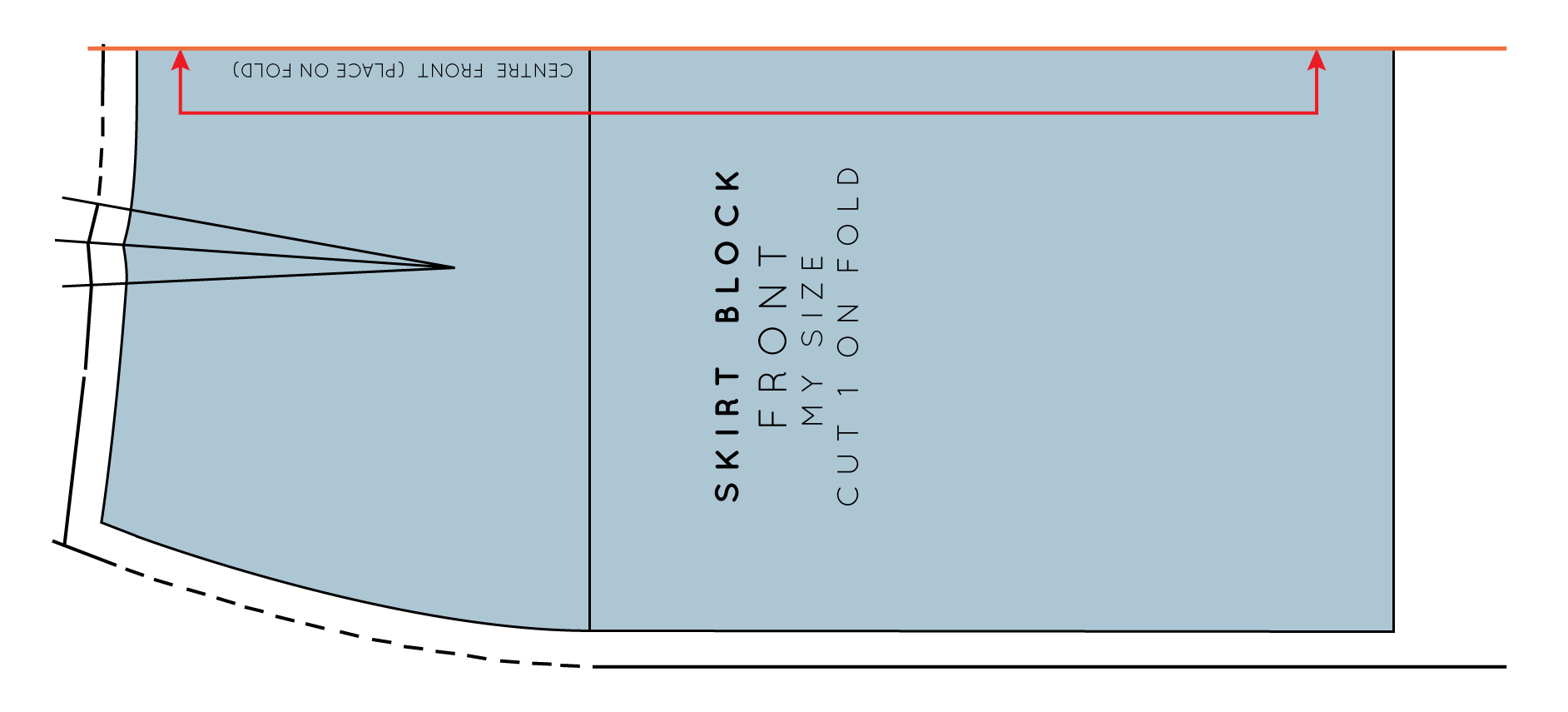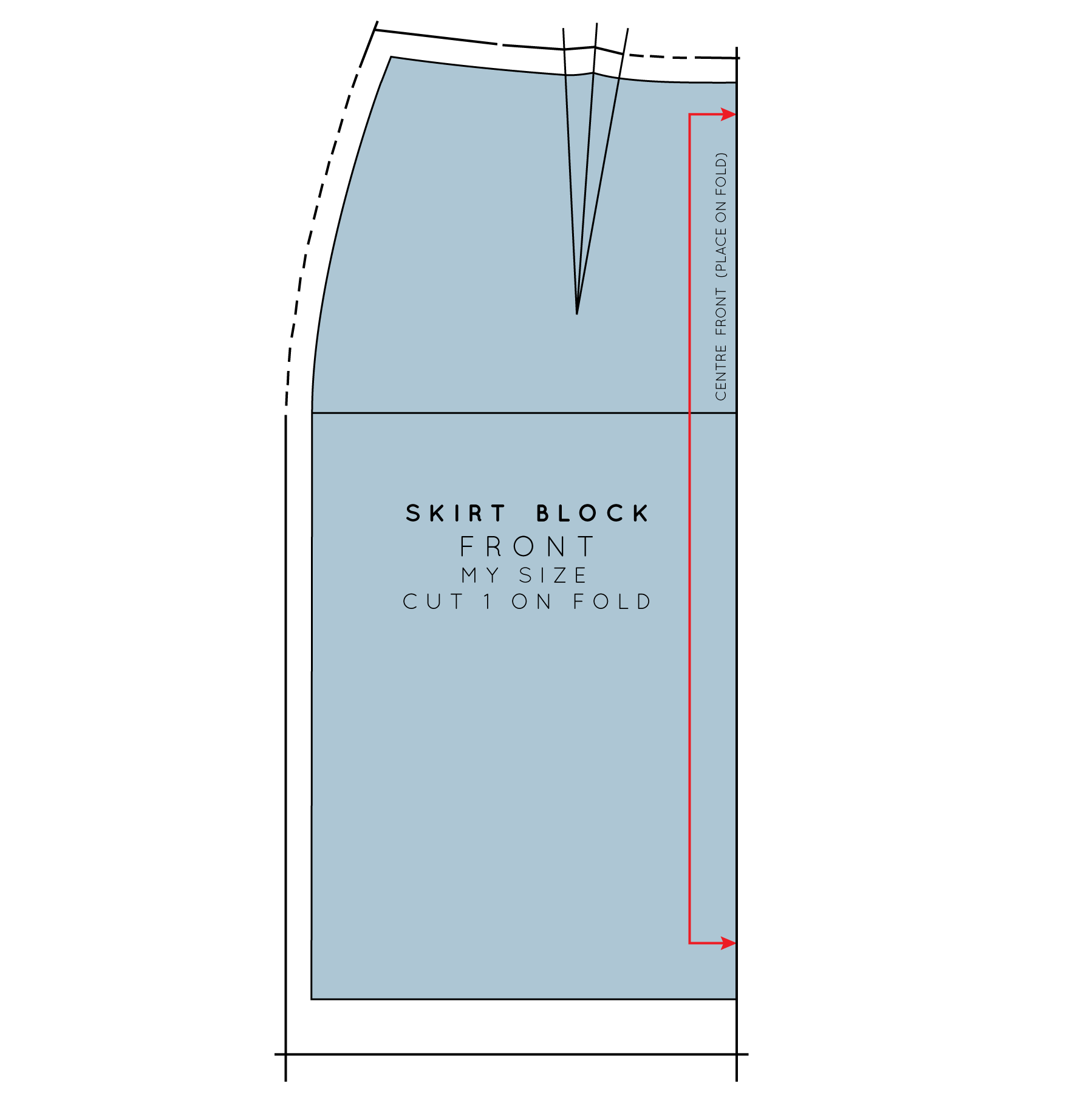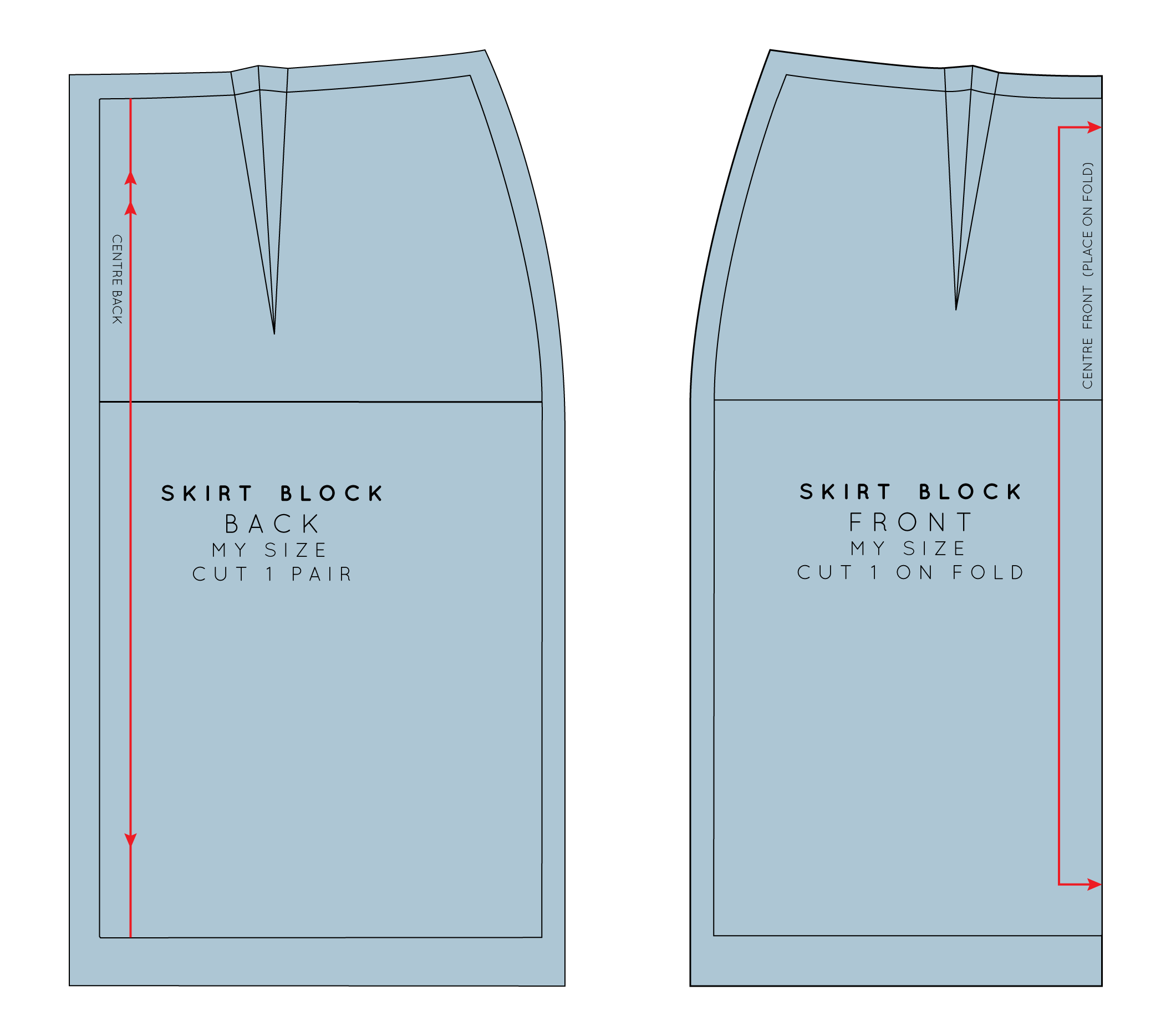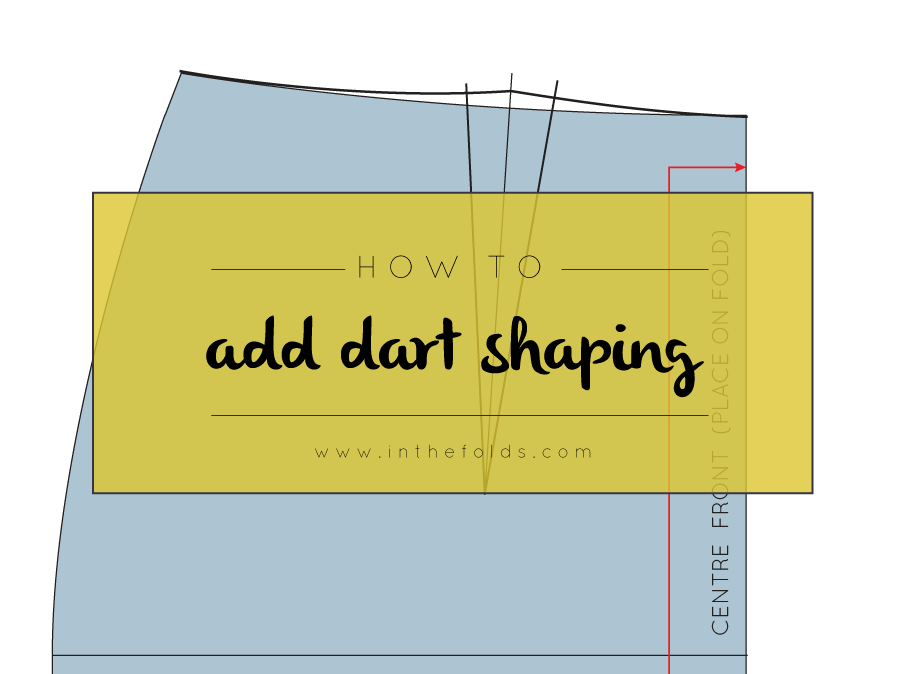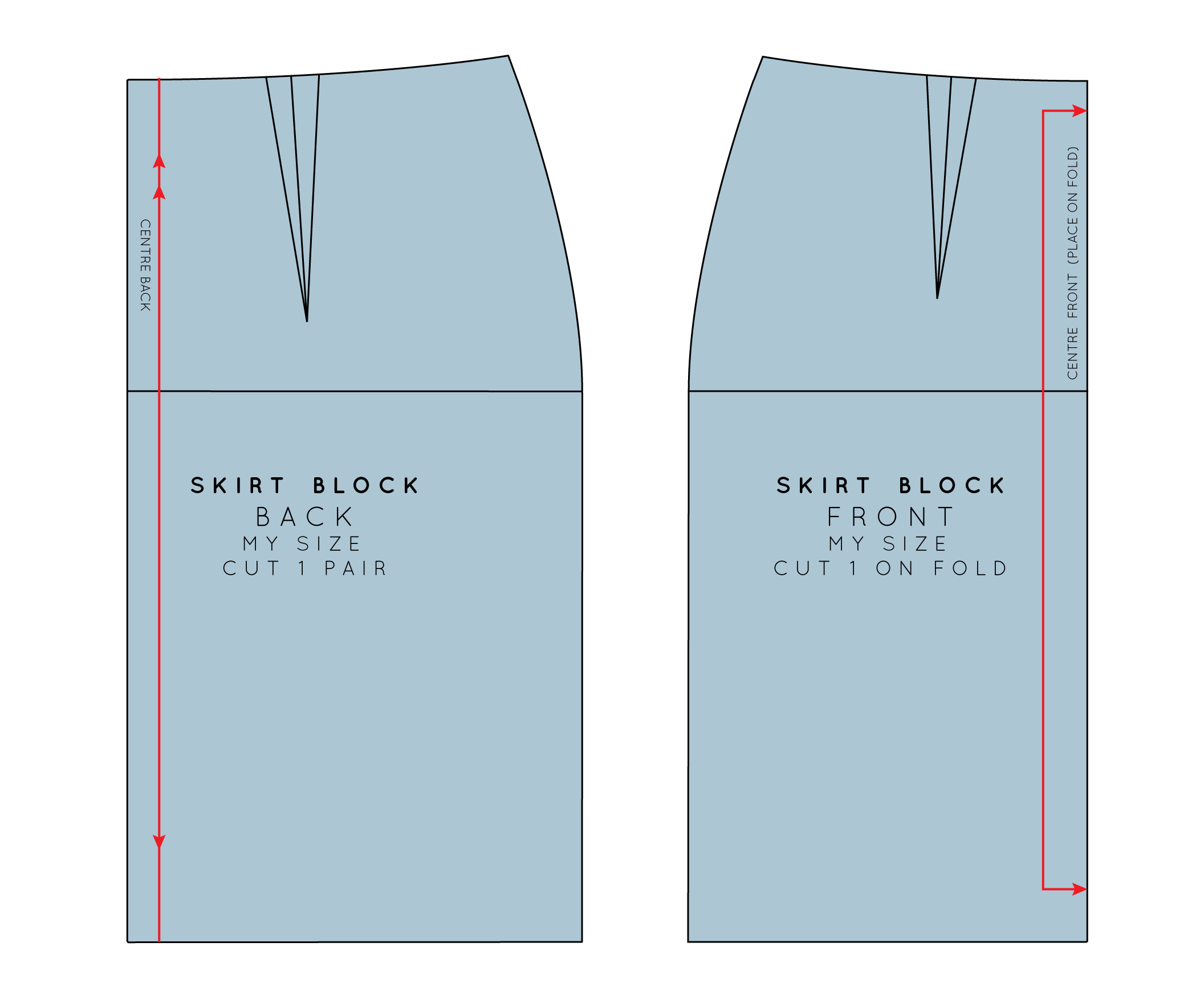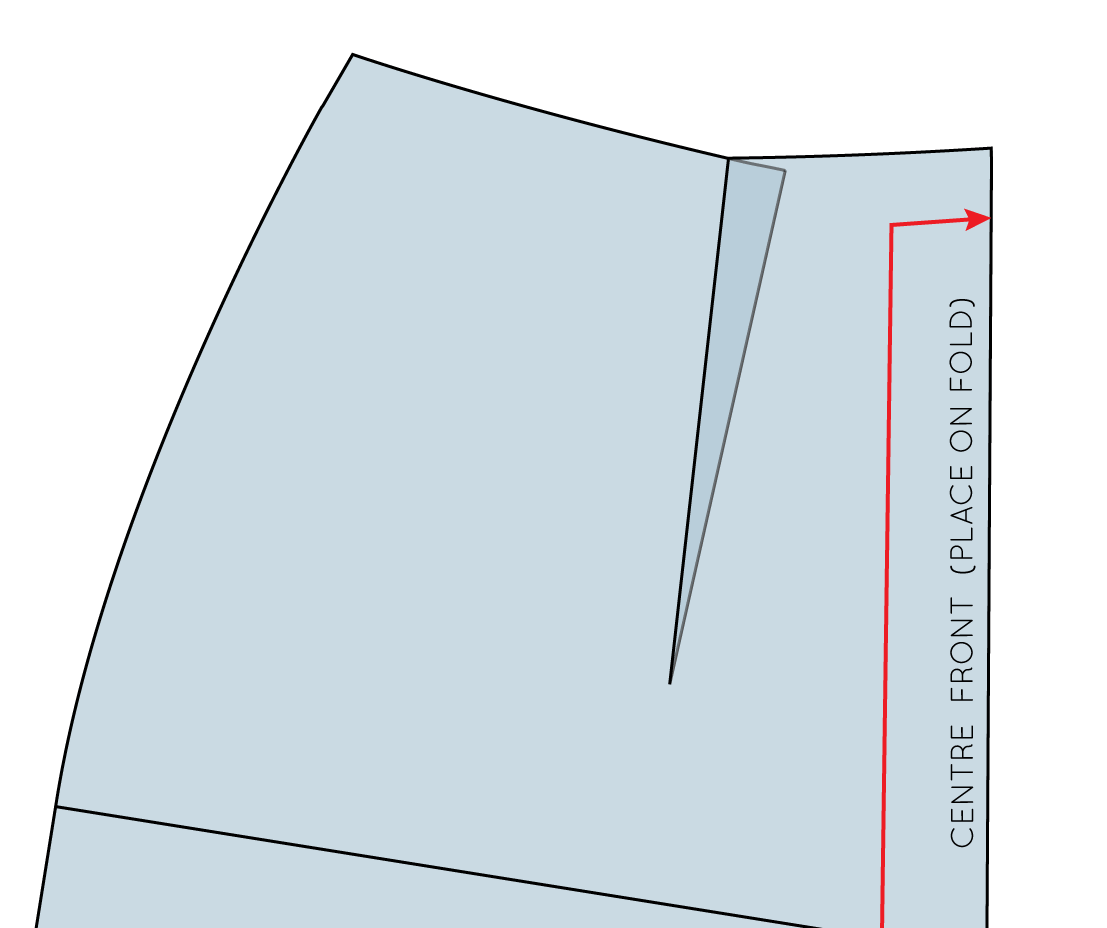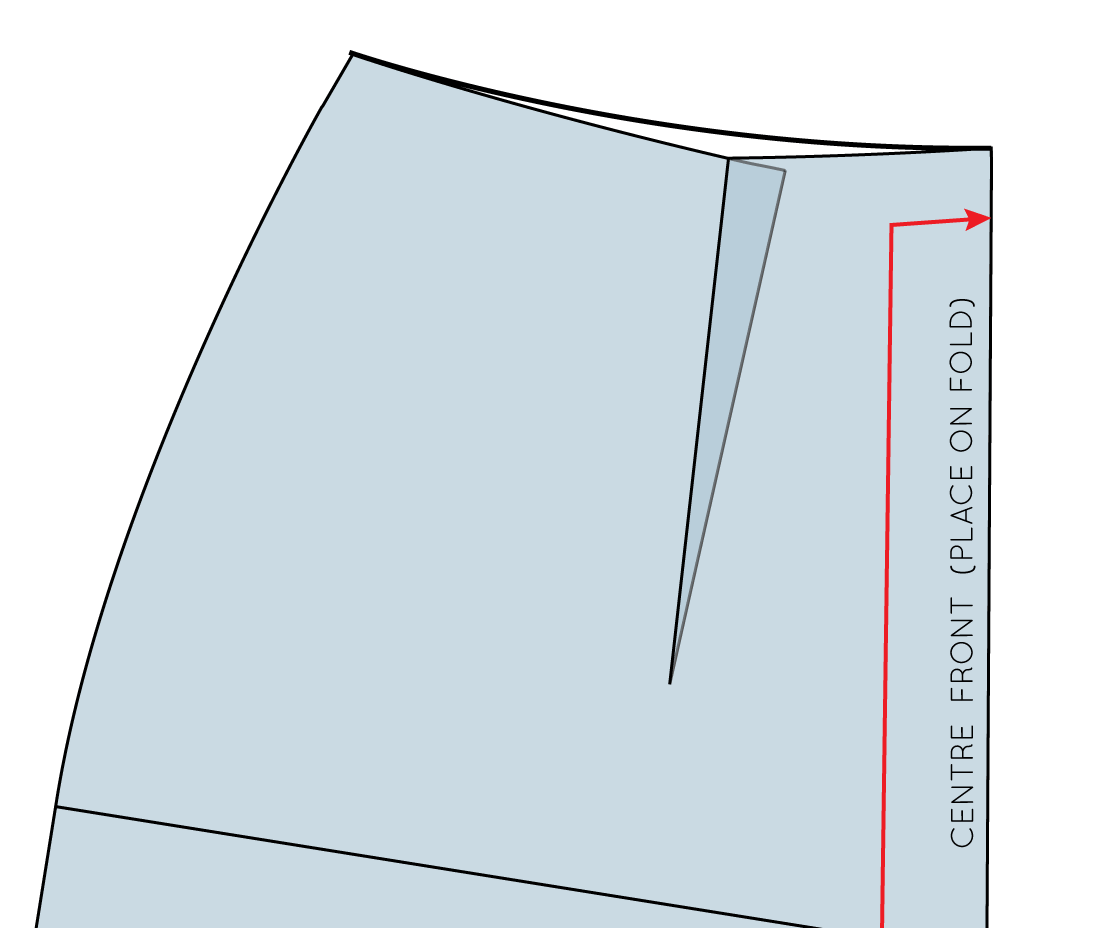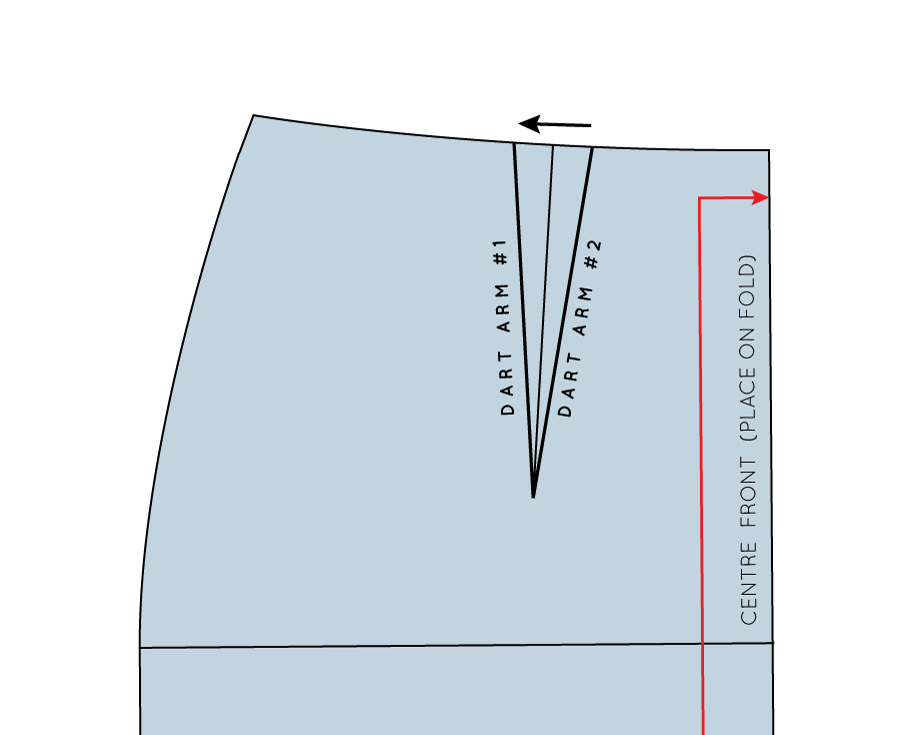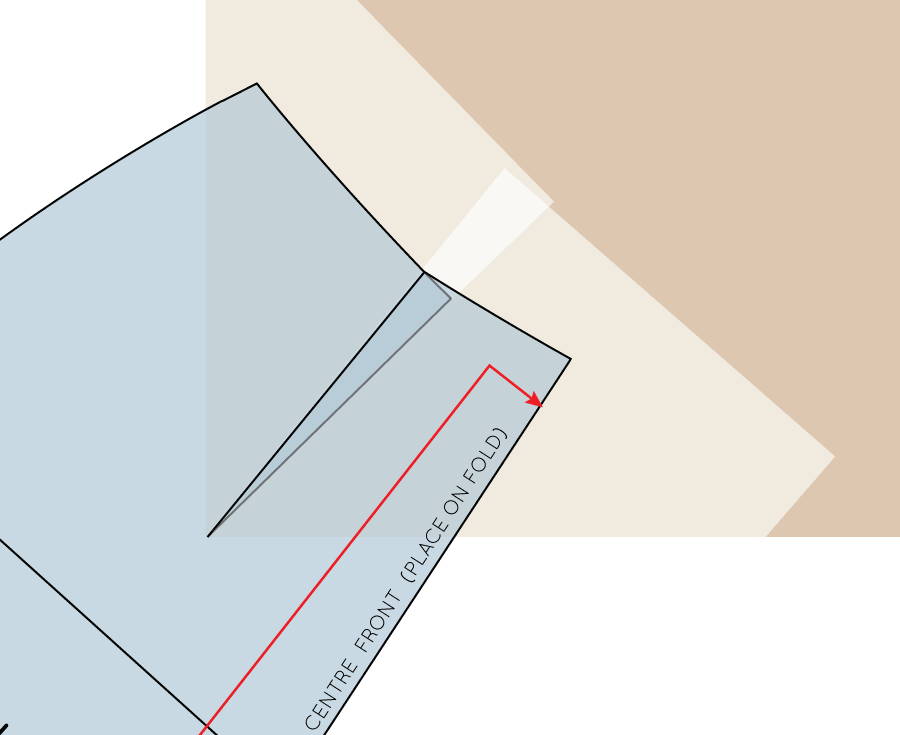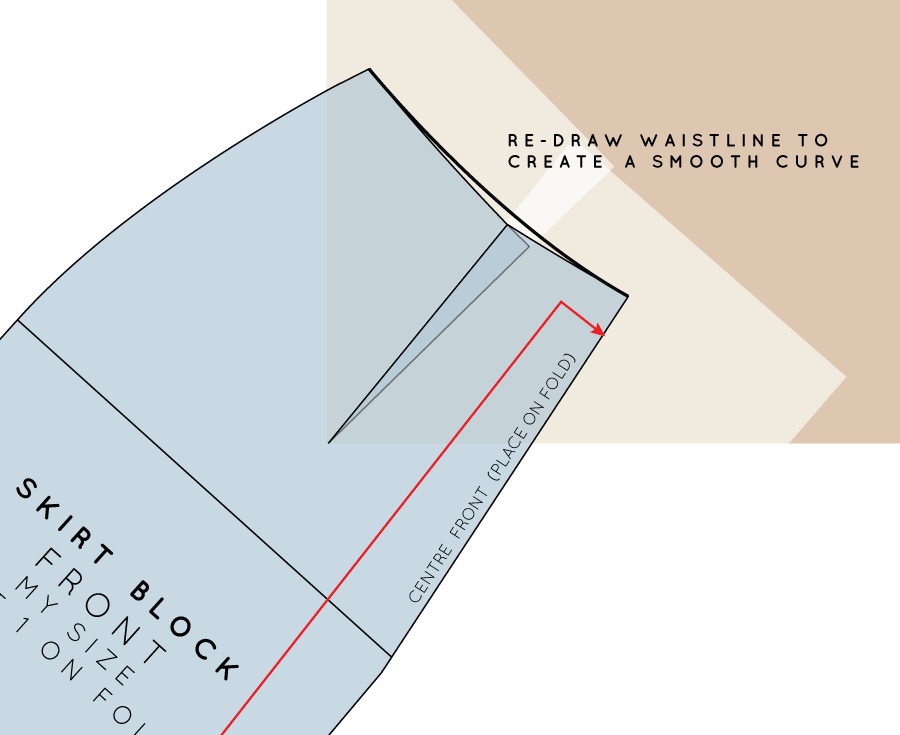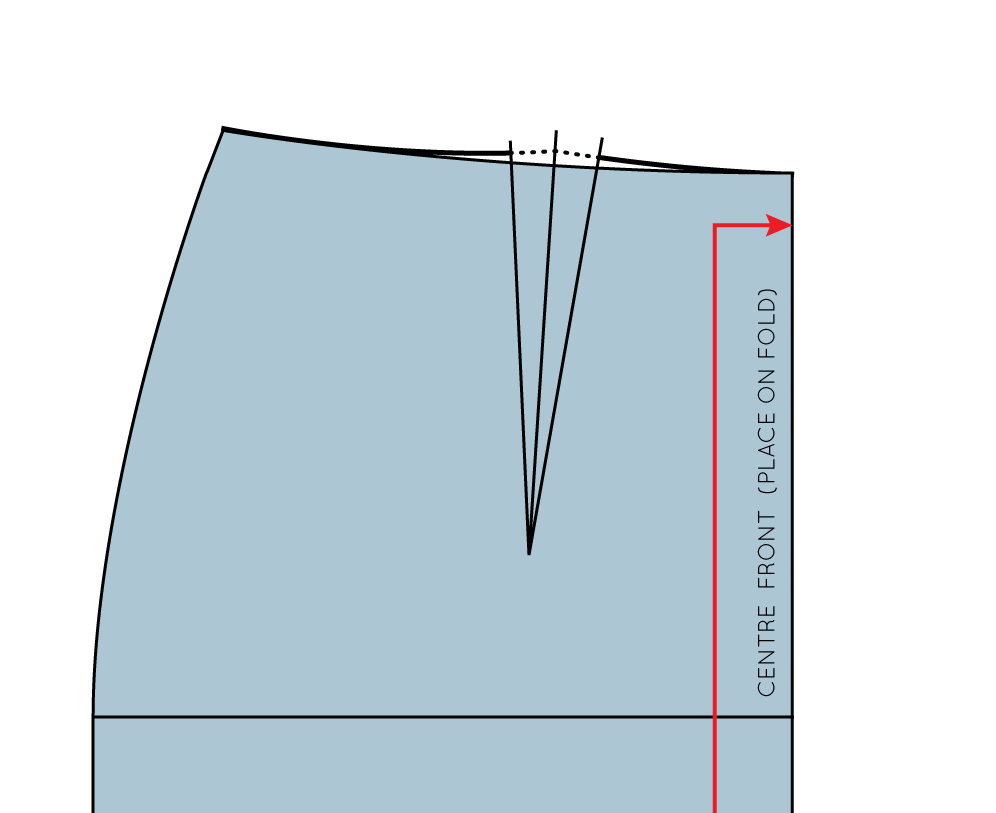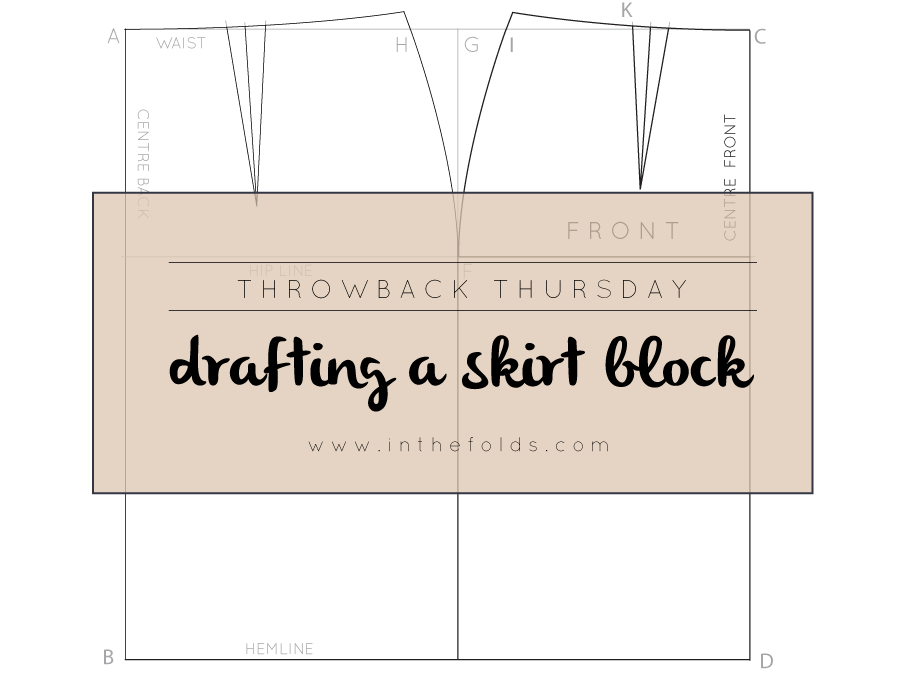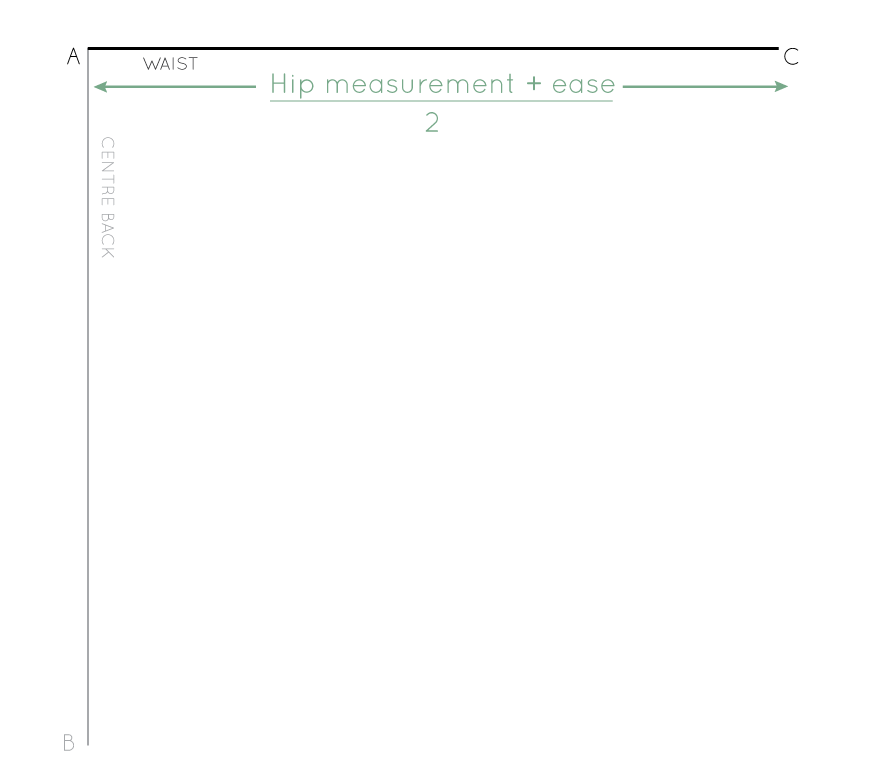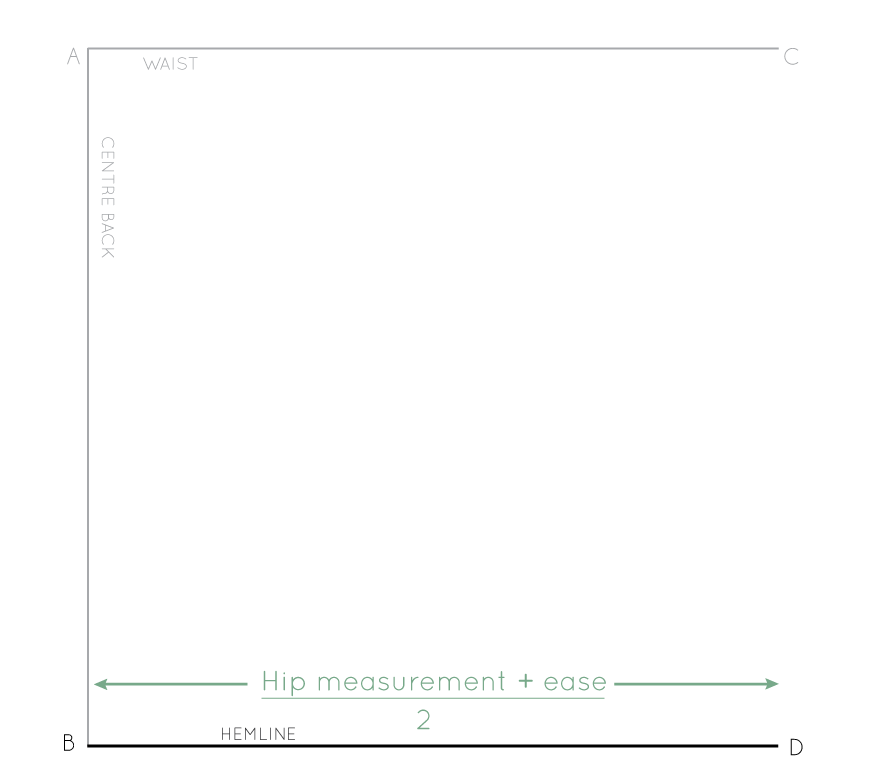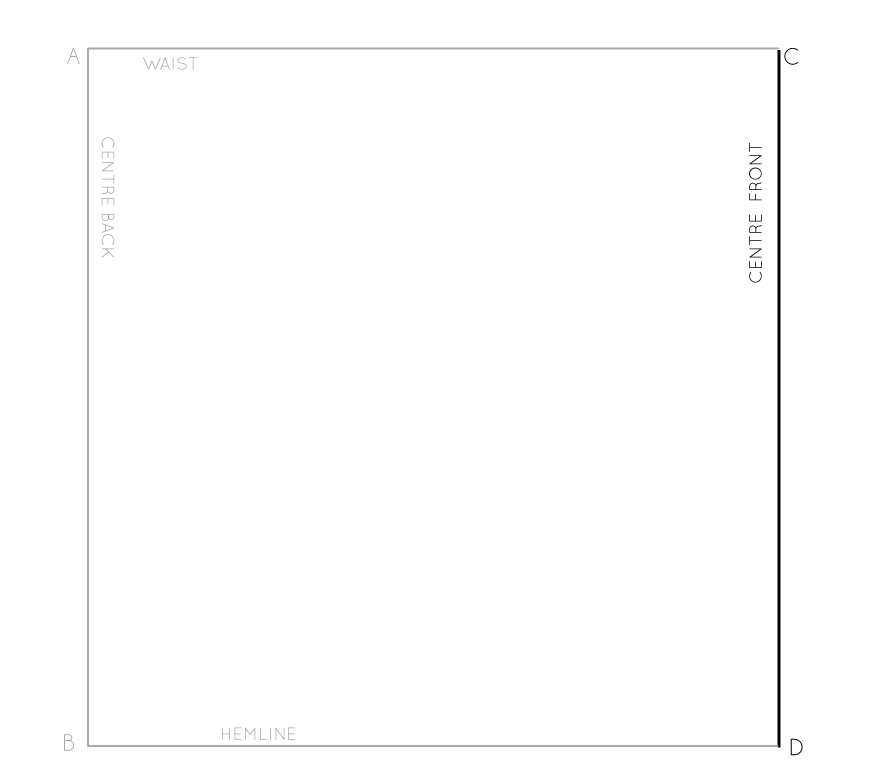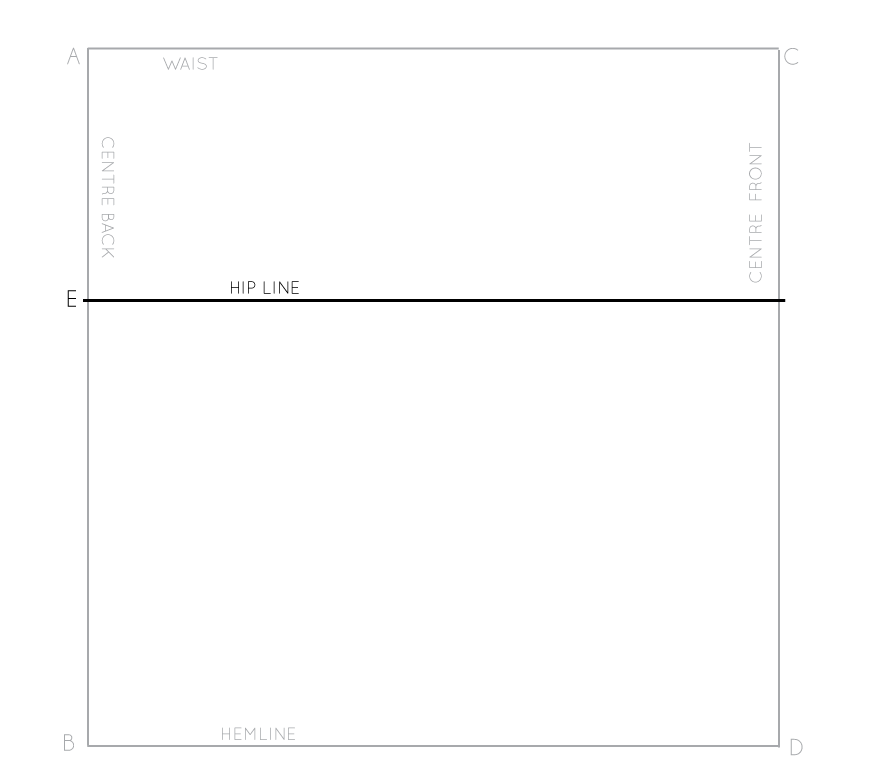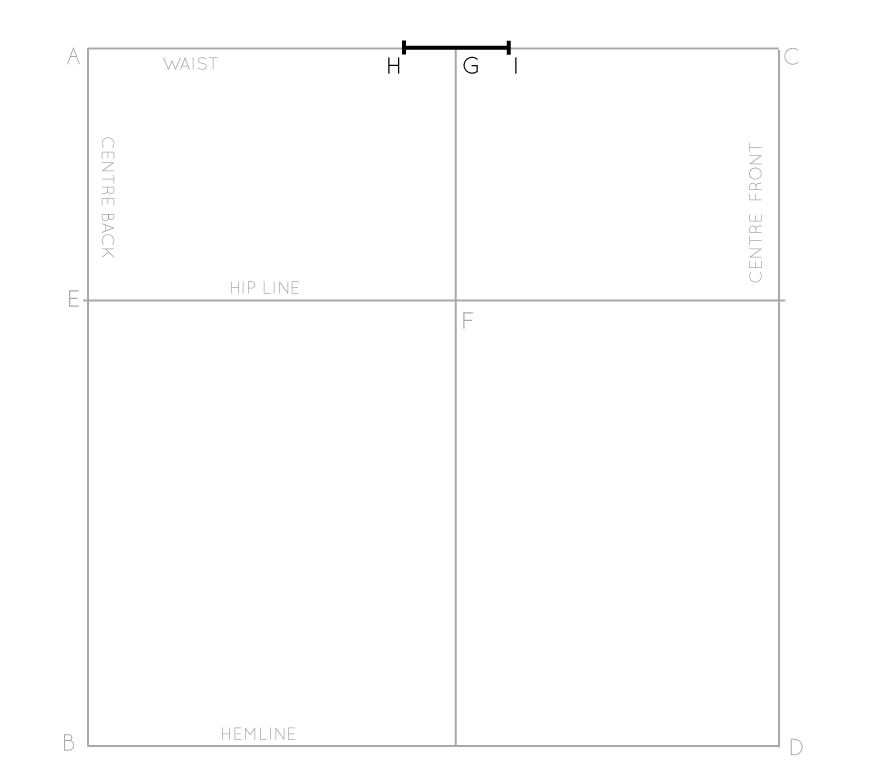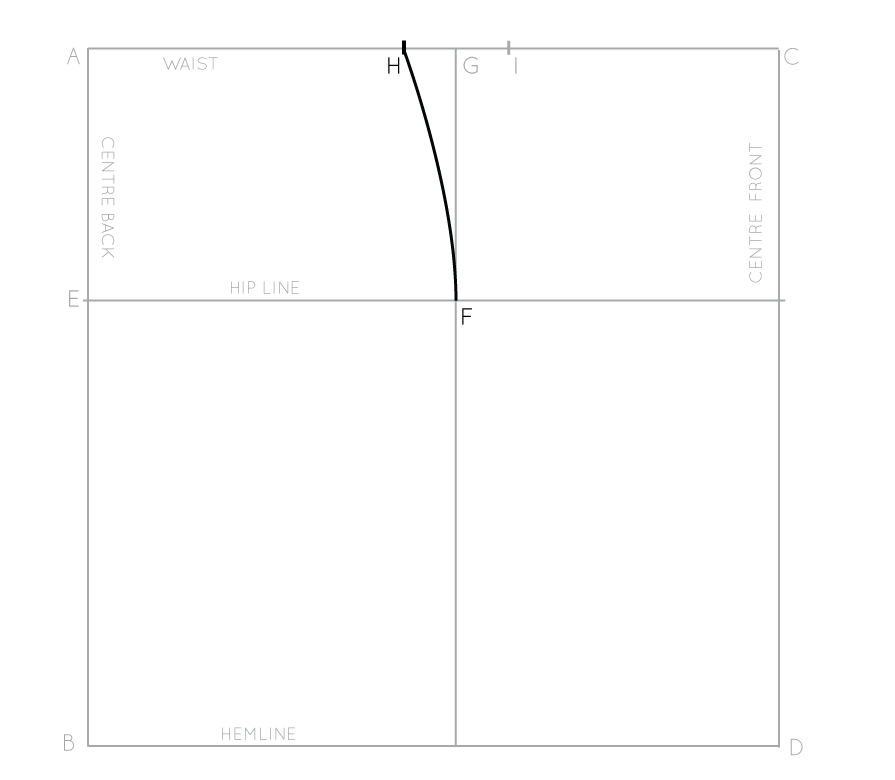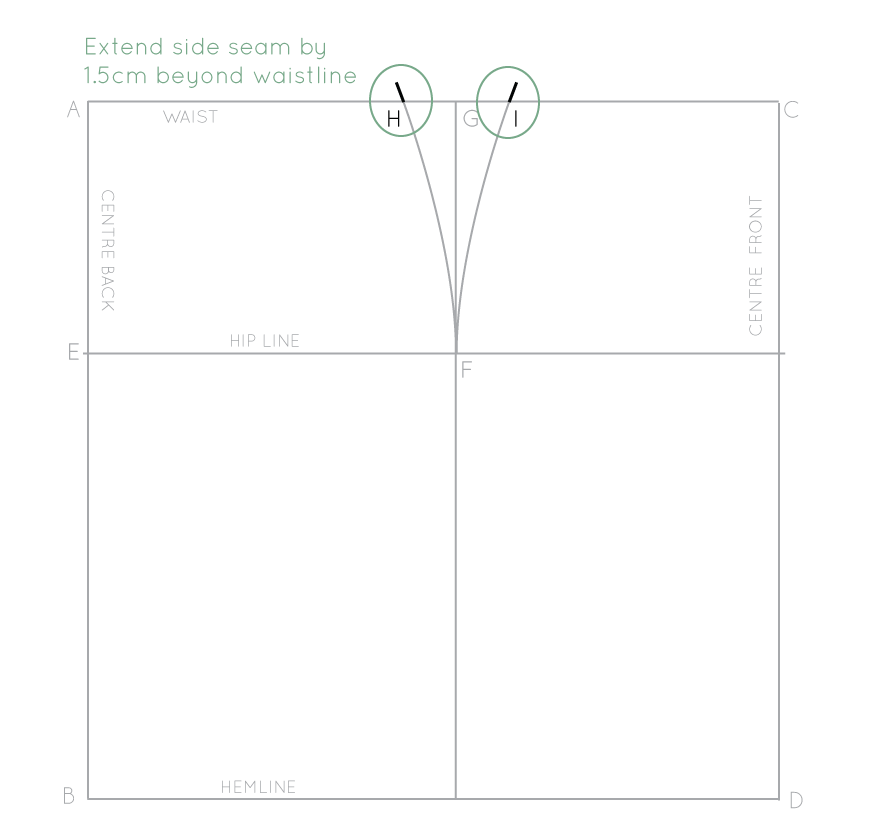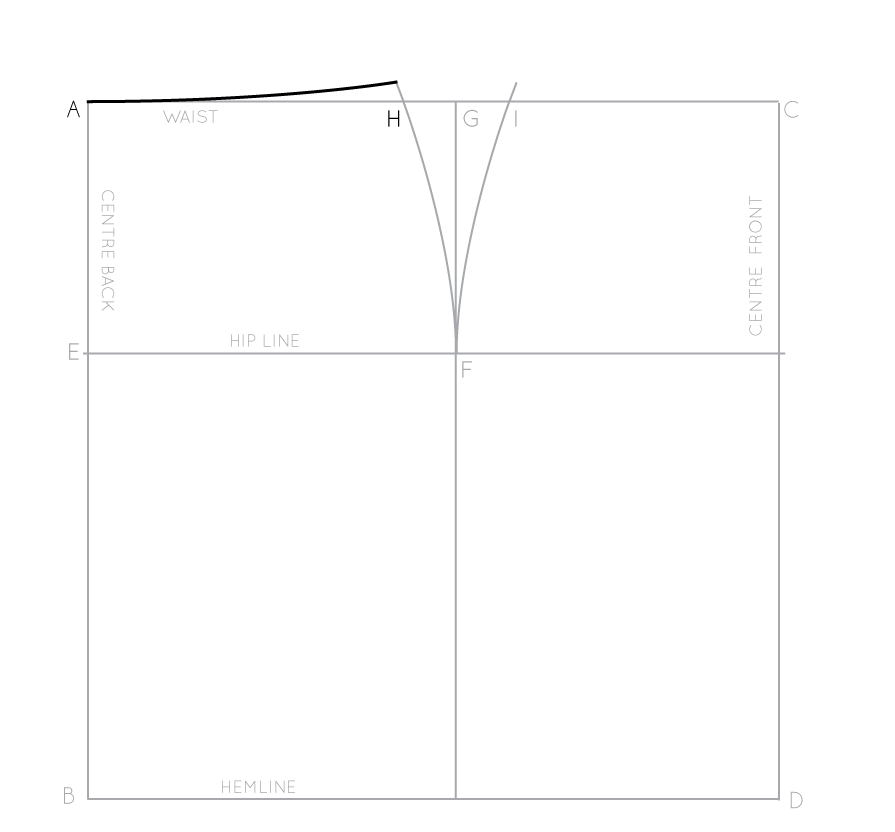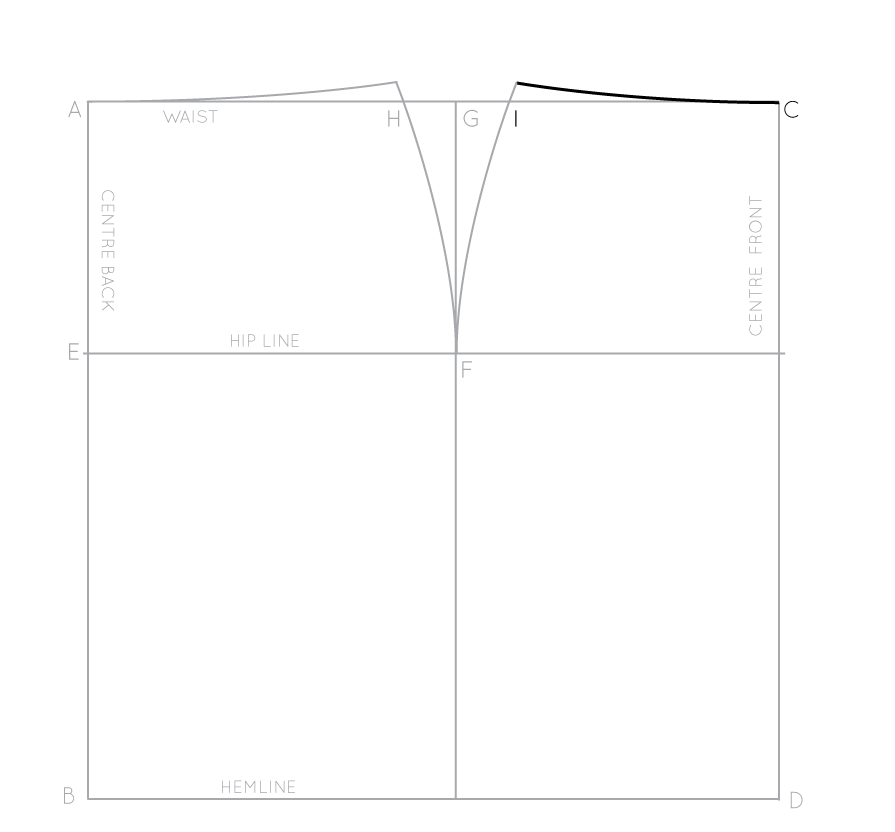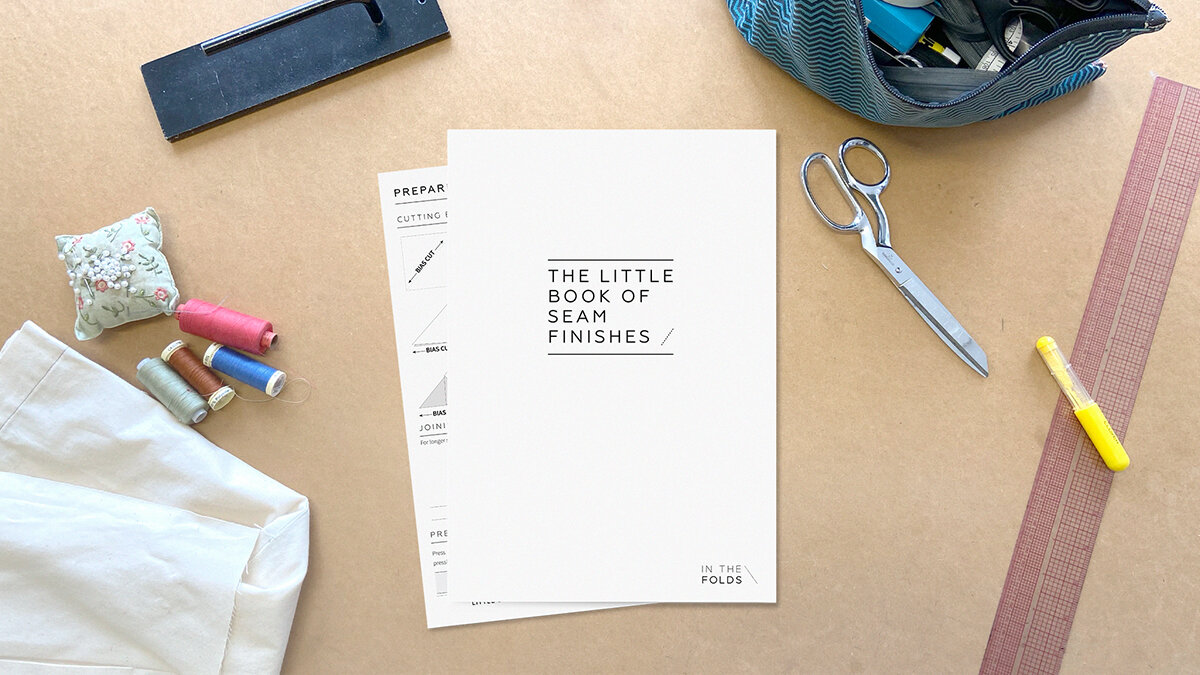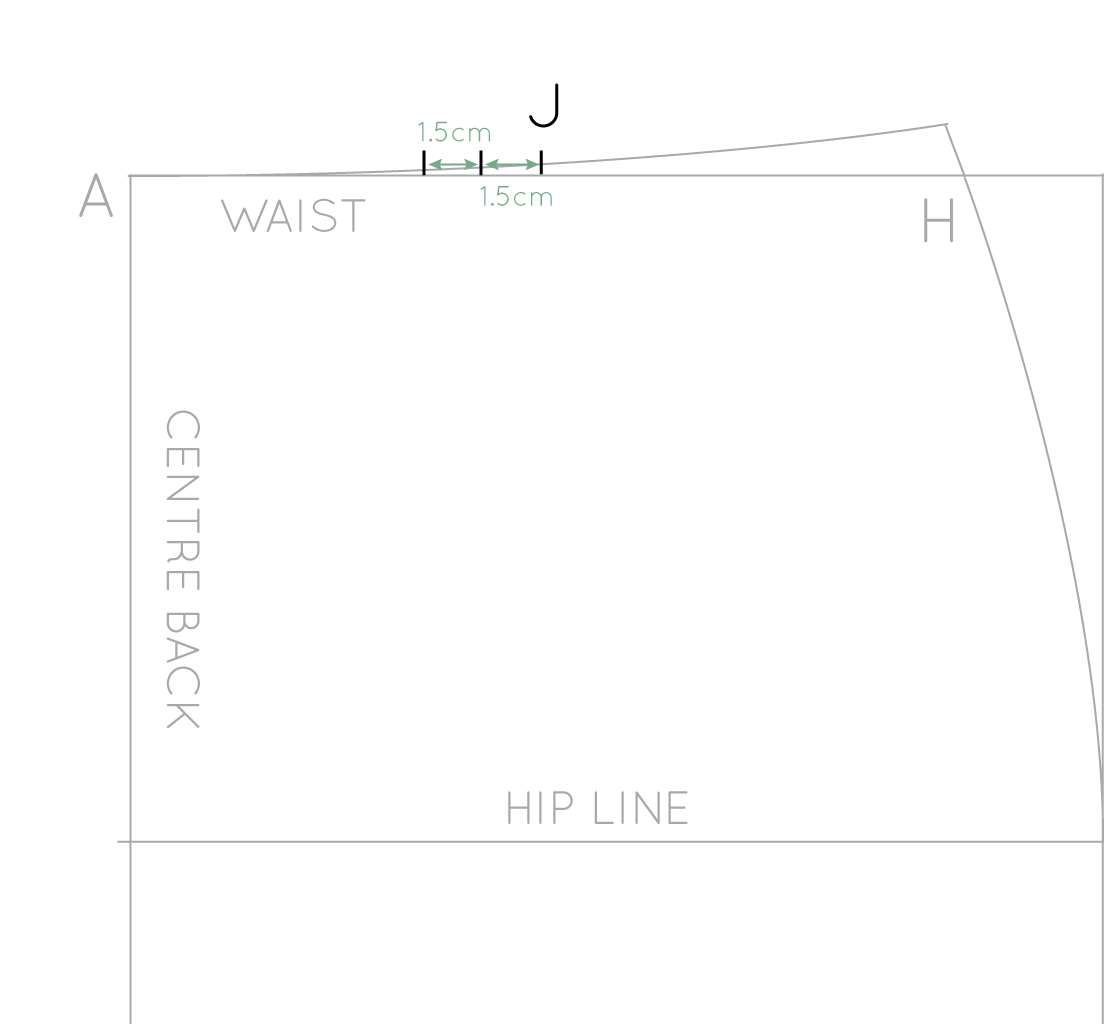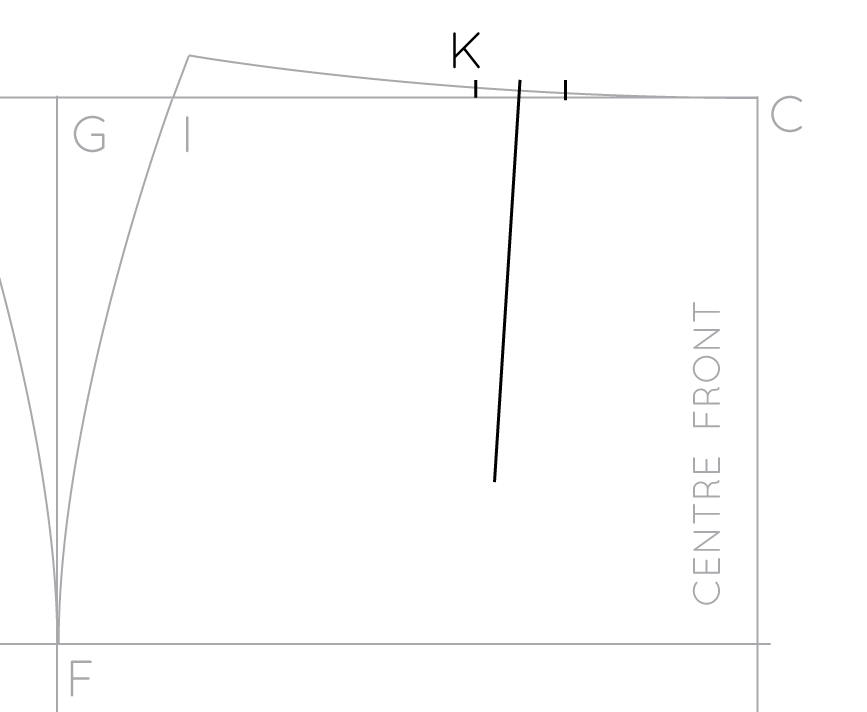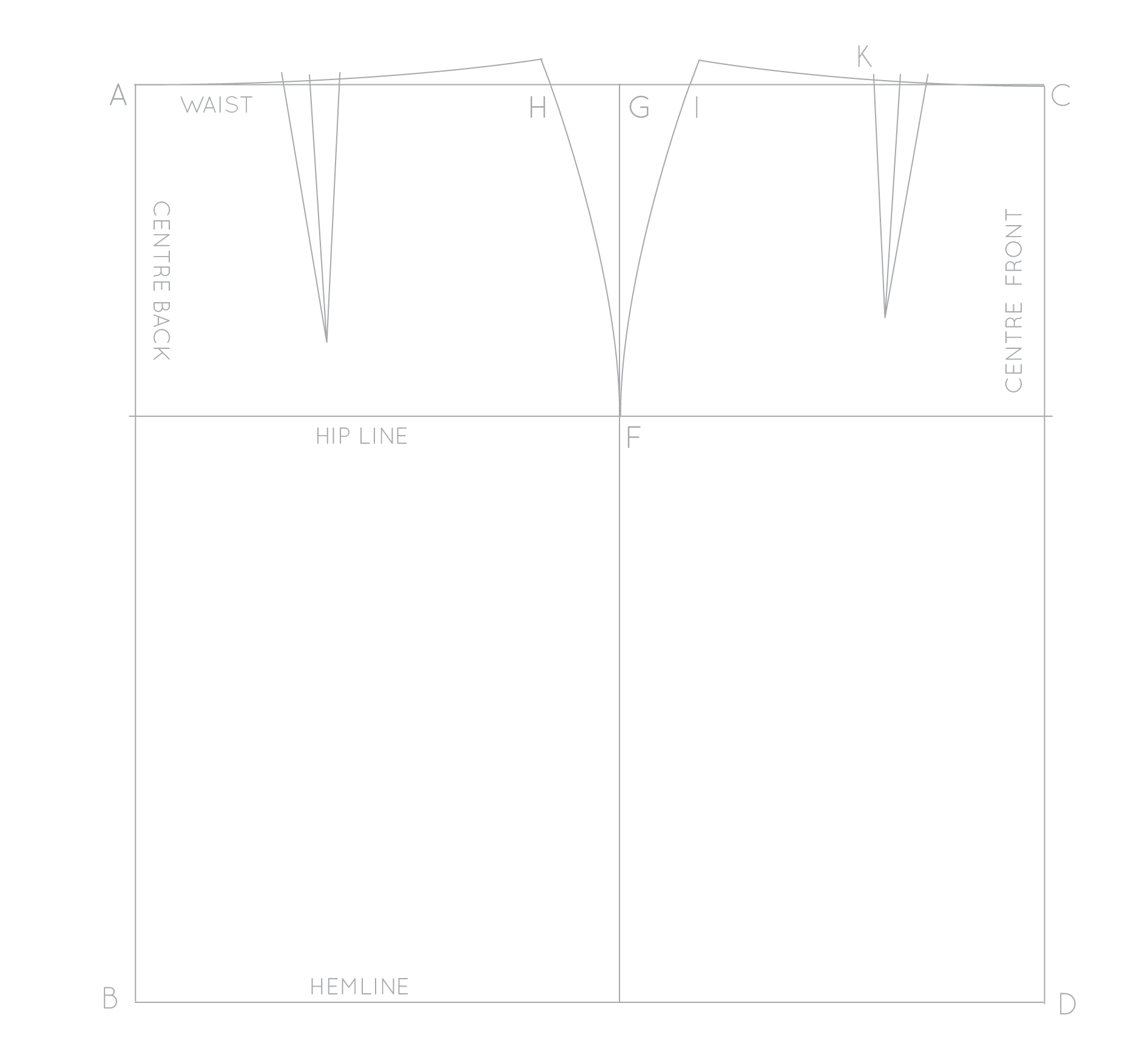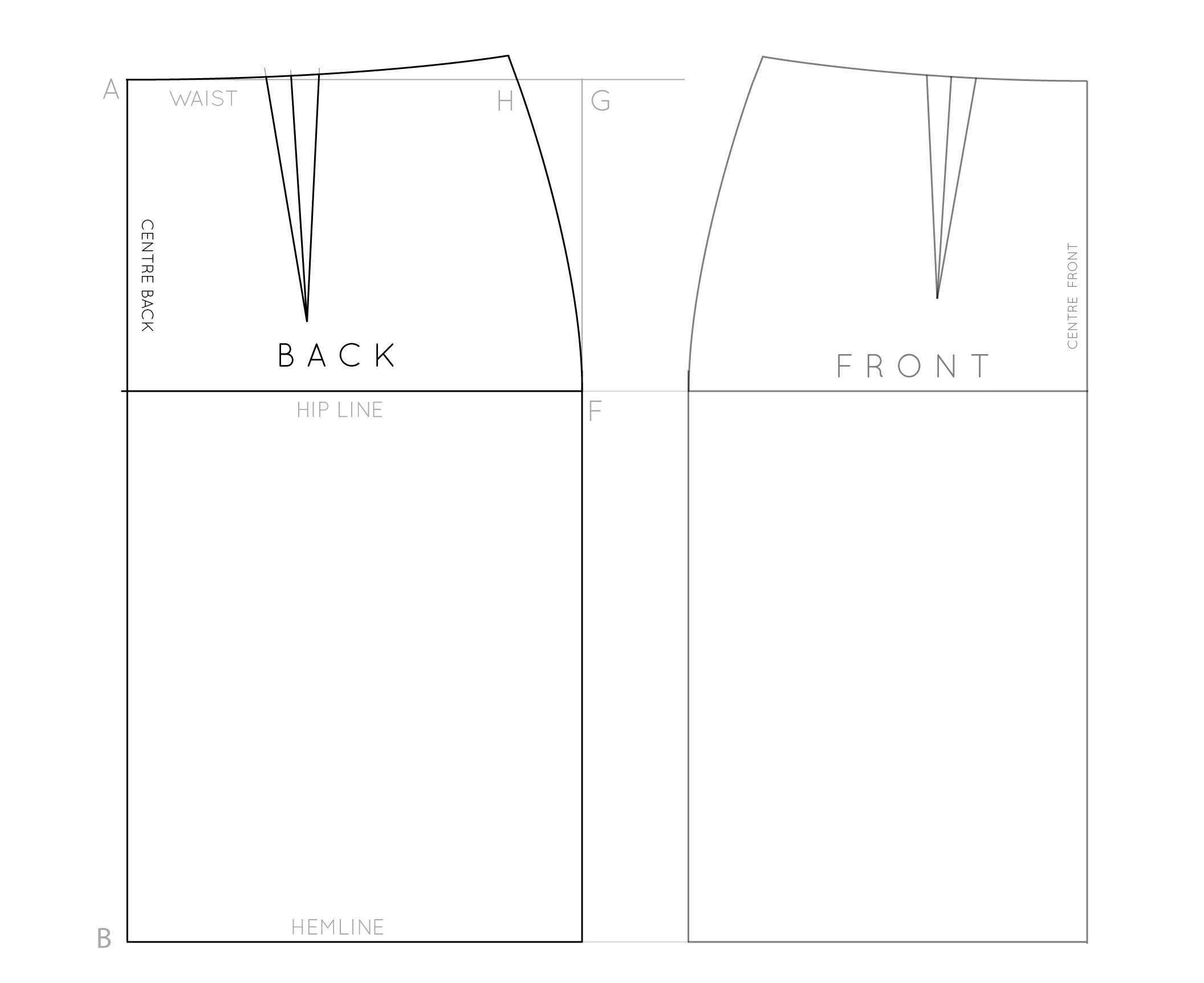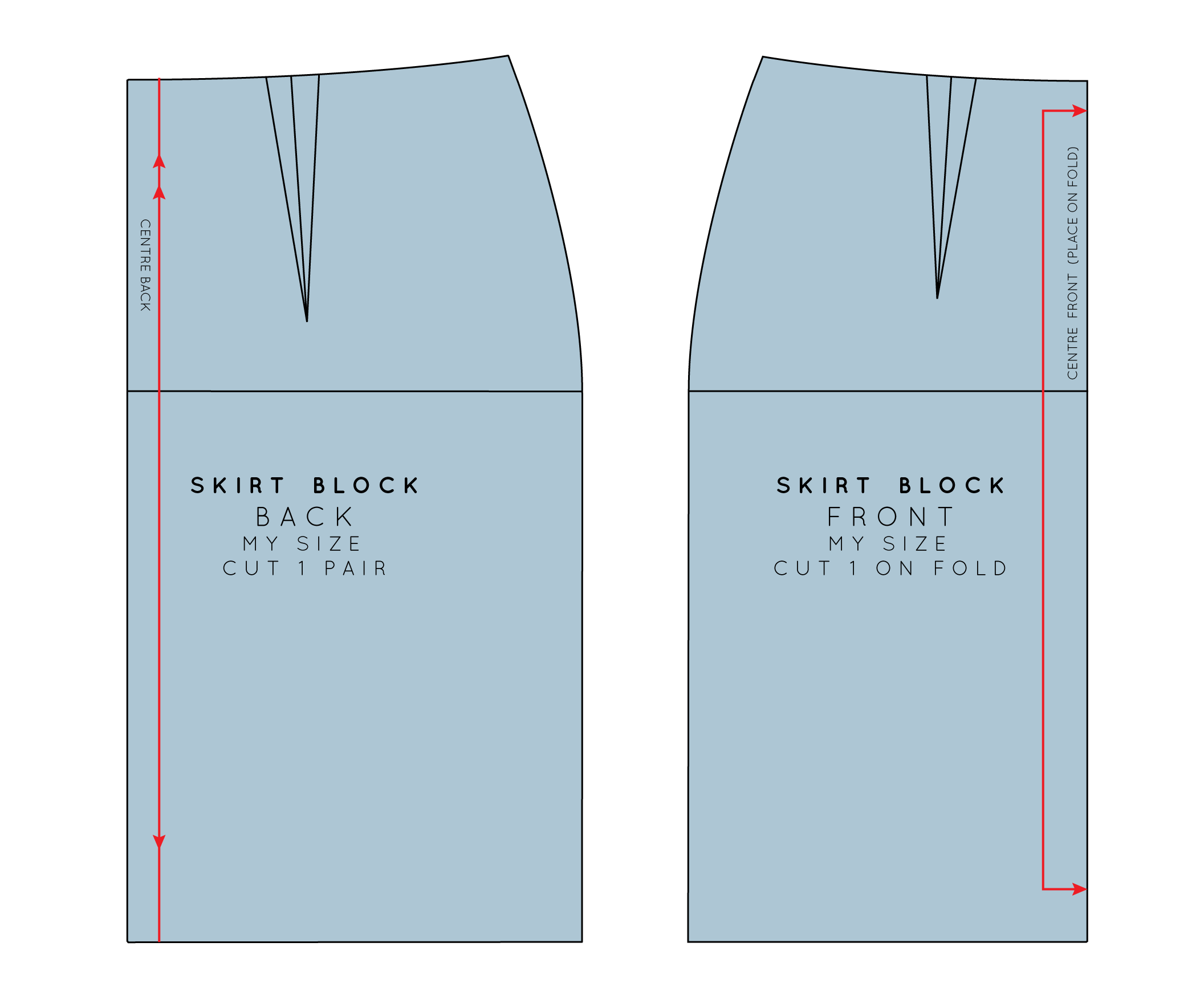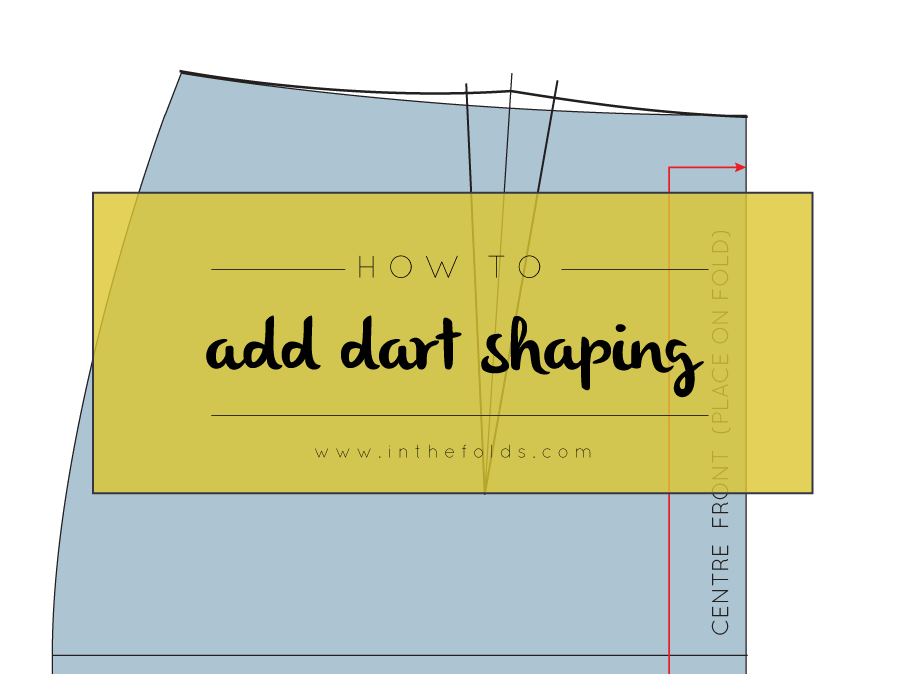Hello, hello, I hope you enjoyed the Acton sew-along! Today I thought I'd show you a little pattern hack. A customer got in touch to tell me she was planning on using the Acton pattern to make her bridesmaids dresses (swoon!) and wanted to know how she could go about adding a full circle skirt, instead of the standard A-line skirt (view A). I thought it would be a good tutorial to share on the blog, as I'm sure many of you would love an Acton with a full skirt, while some of you may also be interested in how you add a full circle skirt to a pattern that doesn't have a straight waist seam - and this tutorial fits the bill for both!
Getting started
To start, trace a copy of the front skirt pattern piece with seam allowance - be sure to also trace the stitch line (the grey line on the pattern) and transfer the notches, grainline and drill hole. Cut out the pattern piece.
Take a large piece of pattern paper and draw a vertical line down the right hand side. Label line as "Centre Front."
Take your pattern piece and line up the centre front of the skirt, with the line marked as Centre Front on the paper. Tape in place (only down the centre front).
Mark in your 'Cut and Spread' lines
We will be using the 'Cut and Spread' method to add the extra fullness to the skirt.
Draw two straight lines from the top of the skirt to the bottom - roughly splitting the skirt into thirds.
Starting at the hem of the skirt, carefully cut up each of the lines. Cut up to the stitch line, but do not cut through the stitch line.
Cut the remainder of each line from the top edge (cutting down towards the stitch line). Don't cut all the way through though, stop a few millimetres from the stitch line, leaving a 1-2mm "hinge" to keep the pieces together (if they do accidentally come apart, just tape back in place).
Cut and spread
Slowly open up the hemline of the skirt by swinging the section closest to the side seam out from the cut. You will see that the small hinge created will allow you to open (or close) the cut lines by the desired amount.
Open up the second cut line (closest to the centre front) and then play around with the openings until you are happy with how much you are adding to the hemline overall (and both are opened evenly).
When you are happy with the result, tape or glue the pieces in place on the backing paper.
Re-draw the waistline
You will now notice that the waistline is looking a little scary! We will need to rectify that now.
Re-draw the waistline with a smooth curve (on the stitch line). Be careful not to let the line stray too far from the original stitch line. The new line needs to be the same length as the original waistline so that the new skirt piece will still fit with the original bodice.
Re-draw the hemline
Re-draw the hemline with a nice smooth curve.
Trace the pattern
Take another large piece of pattern paper and trace a copy of the new pattern piece. Start by tracing the stitching line - centre front, new hemline, side seam and new waistline.
Add seam allowance
Add seam allowance to the new pattern piece - either using the original cutting lines as a guide, or adding it yourself - 1.5cm at the side seam, 1.2cm at the hem and waistline. If you are wondering why the seam allowance sits at an angle on the side seam, check out this post.
Add notches, grainline and drill hole
Transfer the notches from the original pattern, as well as the grainline and drillhole in the centre front.
Finalise the pattern
Cut out your new pattern piece and add cutting instructions (i.e. "Cut 1 on fold"). Repeat process for the back pattern piece (opening up each cut and spread line by the same amount as you did on the front piece).
One last tip
Tip: Be sure to let your full skirt hang for a few days before you hem it. Due to the nature of a full skirt, some parts of the skirt are cut on the bias, which means they stretch (or "drop") more easily that other sections of the skirt, which means that if you hem it straight away, you are likely to end up with a wobbly hemline. Let your skirt hang and then re-cut the hemline before hemming.
The Acton sew-along will continue tomorrow. Hope you are enjoying these posts and learning lots!





















